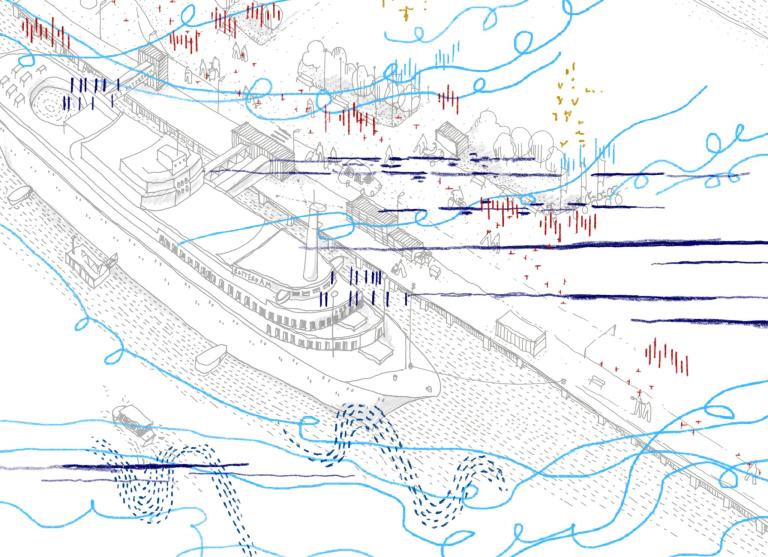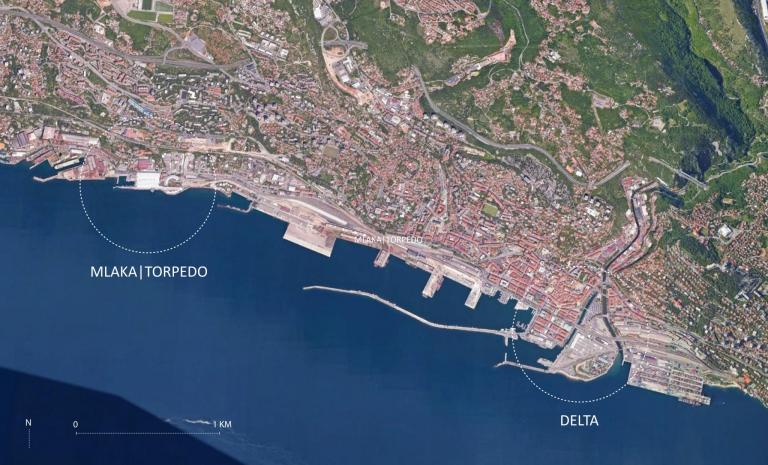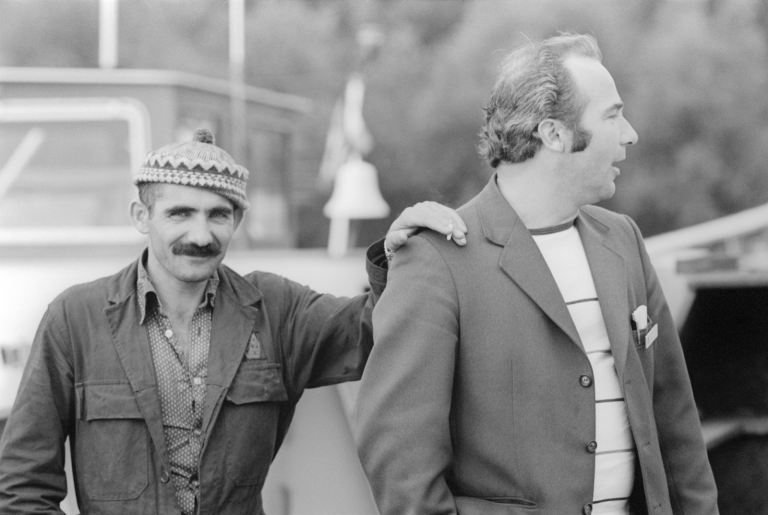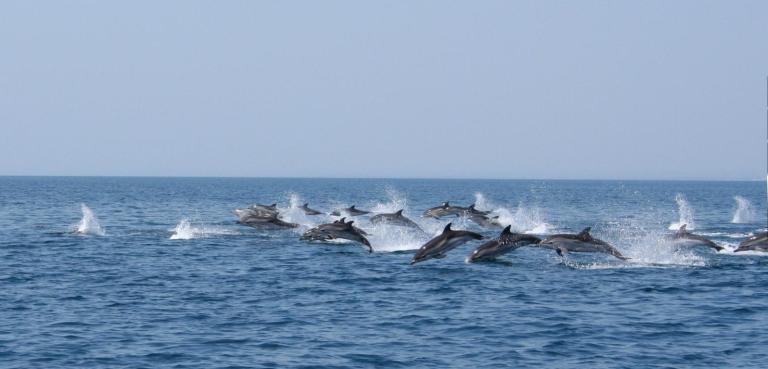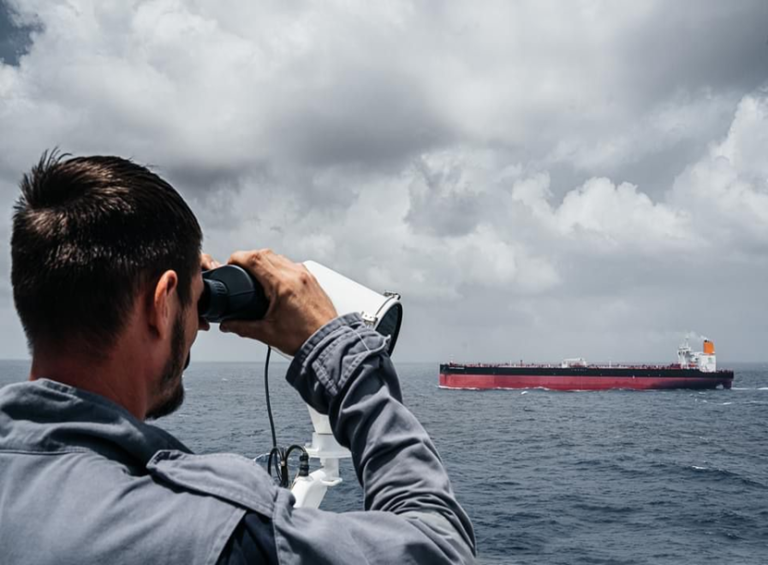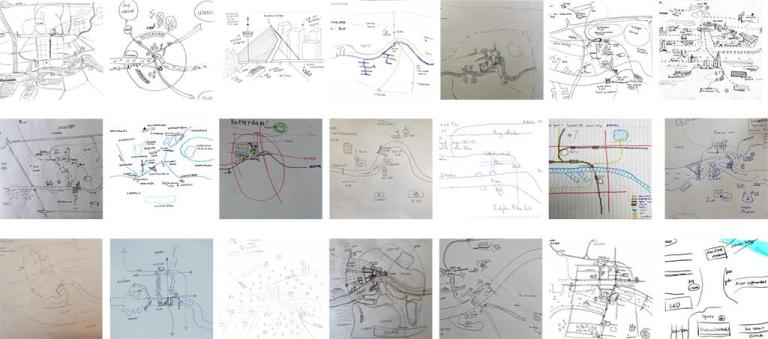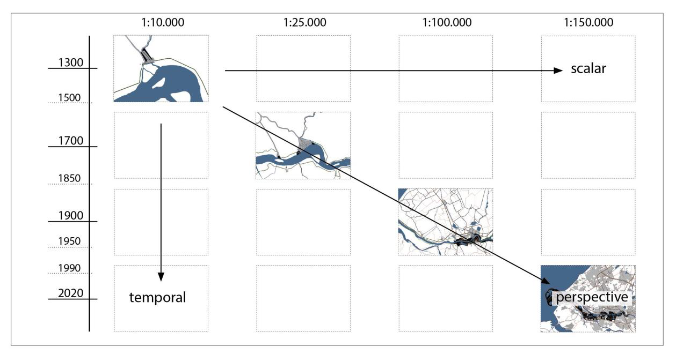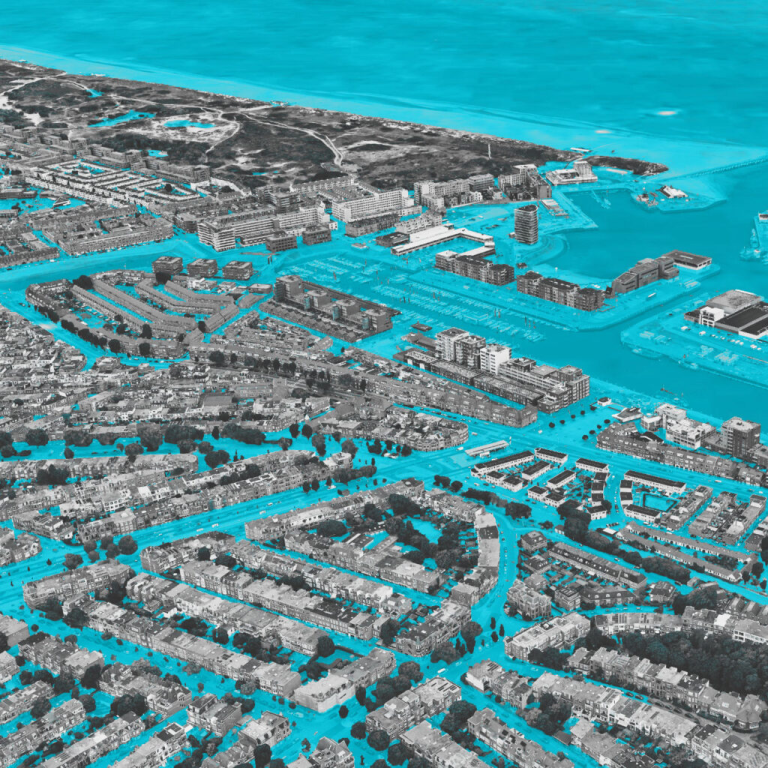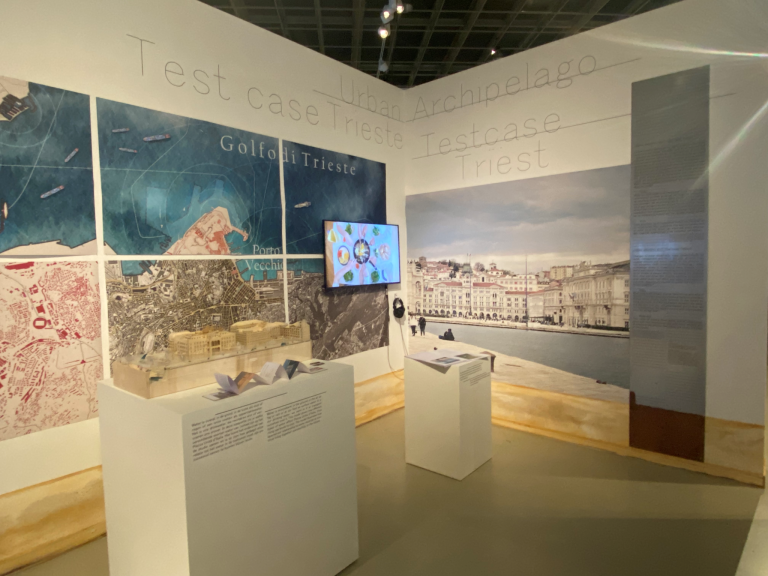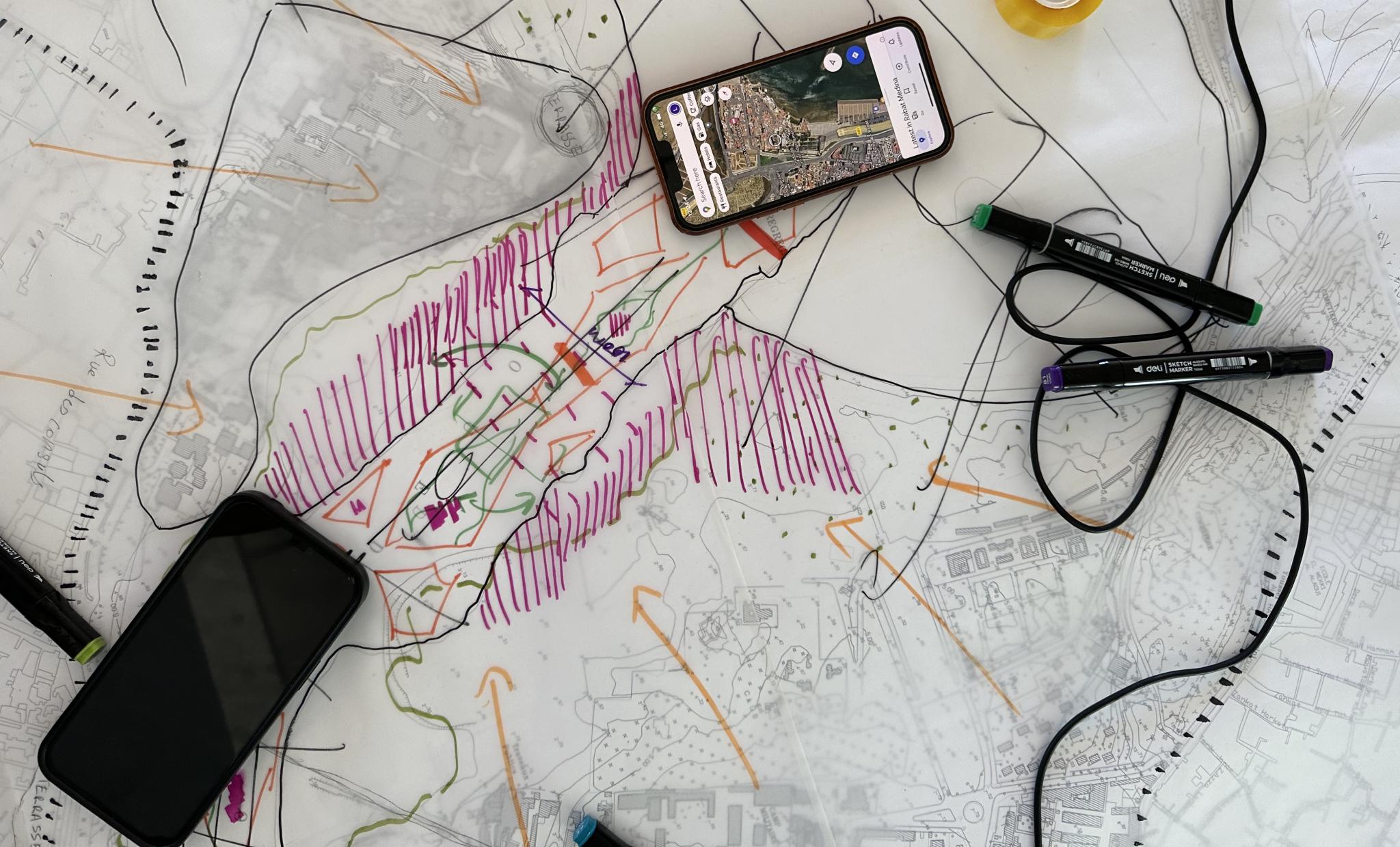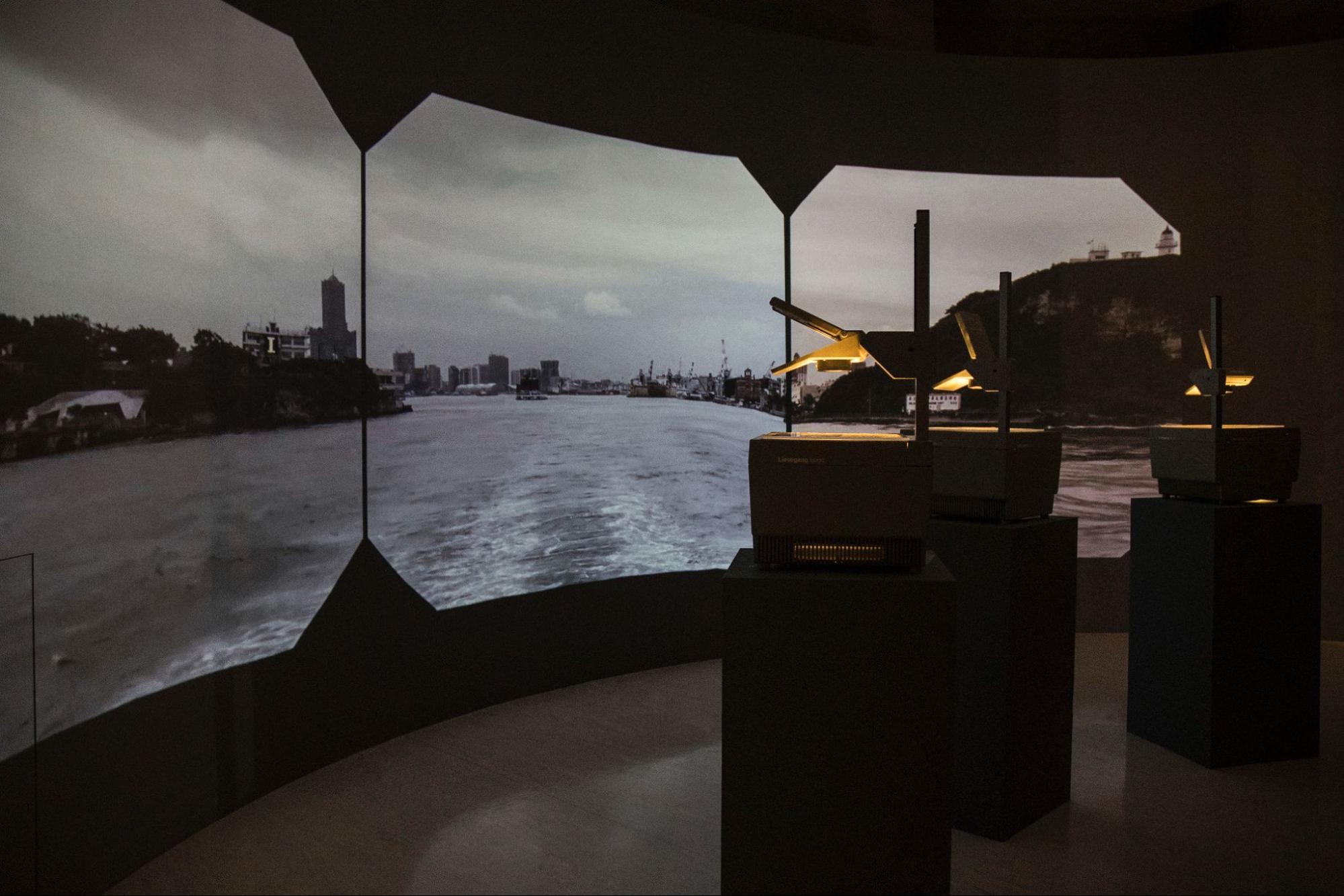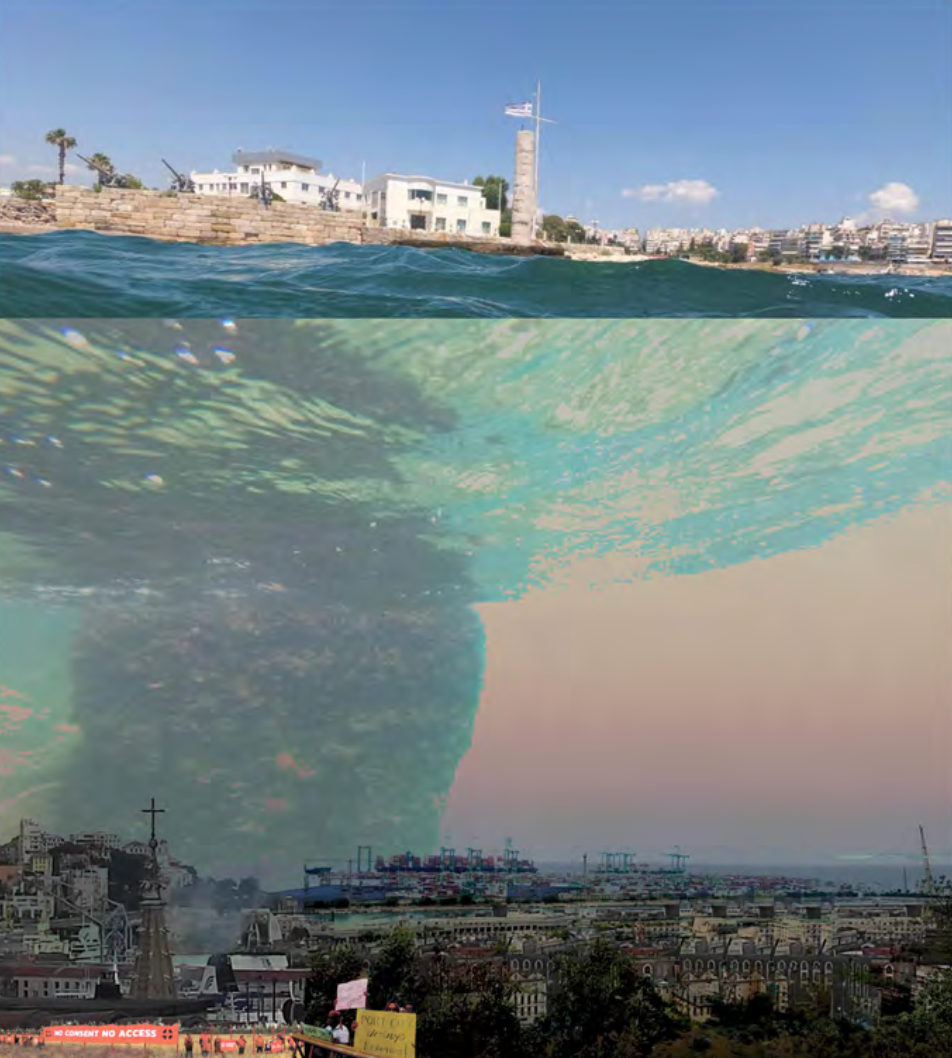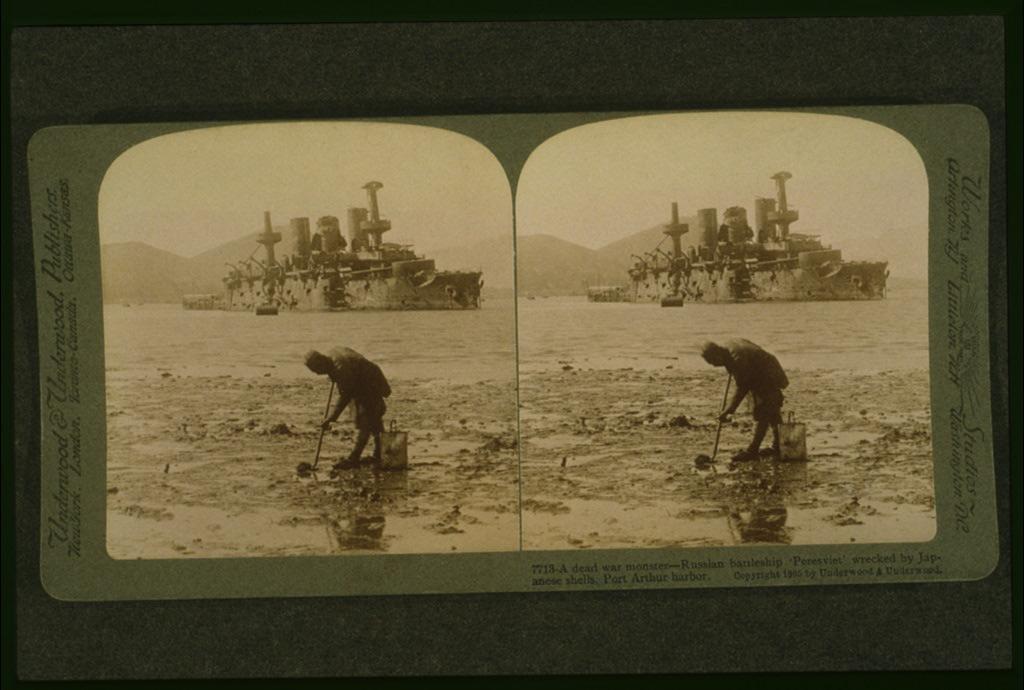
This blog is a communal effort of the LDE PortCityFutures research group members. The blog contains different types of content, such as short articles, opinion pieces, reactions to current events and many more. Many articles are co-written to ensure the incorporation of knowledge from different backgrounds and disciplines and to build a shared interdisciplinary methodology. Blog articles by the PCF community are finalized with the help of the blog editors, Yi Kwan Chan, Eliane Schmid, and Wenjun Feng. We welcome contributions from outside our team. To discuss a topic or inquire about possible collaborations, please contact the editors at portcityfutures.blog@gmail.com. Please take a look at our guidelines before sending in your contribution.
Blog Map
PortCityFutures has published over 150 blogs on everything related to port-city territories, water values and heritage. Please discover our growing global library via the map below!
Discover: Coastal Cities
Discover: Small Ports Big Challenges
Discover: Everyday Infrastructures
Discover: Human-centred Port City Transitions
Discover: Mixed Methods and Design Strategies
Discover: UNESCO Chair
Discover: Projects and Events
All Blogs
Water Discovery Exhibition and Water Values Game Continue Their Journey!
Carola Hein, Léa Kayrouz, and Conor Hunter

Launching the Water Discovery Lab: From Rotterdam to Le Havre
The Water Discovery Lab, developed by a group of researchers from PortCityFutures, was first exhibited aboard De Zeemeuw, a “coaster” vessel currently moored in the Leuvehaven at the Maritime Museum of Rotterdam. The exhibition invited visitors to explore their relationship with water by examining it through various lenses. In its layout and activation, the exhibition was meant to engage citizens, including children, tourists, seniors, and professionals, to learn about water interactively and to build on existing narratives with personal stories (find more information about the Water Discovery Lab at the Zeemeeuw Ship here).
The Threat of Tailings Waste to Humans and the Environment in Mimika Regency, Central Papua, Indonesia
Annisa Ariyanti
Department of Architecture, Muhammadiyah University of Surakarta, Surakarta, Indonesia
Annisa Ariyanti is a freelance architect currently based in Mimika Regency, Central Papua, Indonesia. She completed her architectural engineering degree at Muhammadiyah University of Surakarta in 2017. Annisa has witnessed the shifting economic and political landscape that continues to shape the environment and future generations. This article is not intended as a scientific report but rather as a reflection of her personal observations and understanding of the situation surrounding tailings in Mimika Regency.

Introduction
On May 1, 2024, I took a screenshot of a Google Earth satellite image centering on Timika City. To the right of the city, there is a striking light beige area: the mud sediment in the Aghawagon River and Ajkwa River with tailings from PT Freeport Indonesia. The river, due to the massive amount of tailings, has grown since 1974 and has now become wider than Timika City itself. This is not an isolated phenomenon: tailings are widespread and cause sedimentation along vast coastal stretches of Mimika Regency. But what are tailings?
Optimizing the Underlying Layout, Balancing Stakeholder Conflicts, and Promoting Urban Planning: Providing a Sustainable Policy Template for Port Development—Tianjin
Yuanpeng Hou

Tianjin Port and the impact of Oil industry
Tianjin is an important port city in the northeastern part of the North China Plain, adjacent to the Bohai Sea. Its port has 132 berths, including 29 container berths. In 2023, Tianjin Port achieved a container throughput of 22.19 million TEUs and a cargo throughput of 459 million tons, with shipping routes covering over 800 ports worldwide (Tianjin Port (Group) Co., Ltd., 2024). Additionally, the Tonghui River and Chaobai River have historically been vital shipping channels for ensuring grain supply to Beijing. The strategic location of Tianjin Port is crucial for energy supply and transportation in North China, leading Tianjin to prioritize the development of its port economy under the impetus of industrial growth (Tianjin Municipal Bureau of Statistics,2023).
PACT - Port City Territories in Action Launches its Online Platform
Mikaela Rands
Design & Communications Consultant, Seattle, USA
Eliane Schmid
C2DH, Université du Luxembourg, Luxembourg

PACT Launches its New Website: A Digital Hub for Port City Energy Transitions
Port City Territories in Action (PACT) is excited to announce the launch of its official website www.pact-costaction.eu. This digital presence represents a significant milestone for the project, which officially kicked off on October 24th, 2024. PACT is a COST Action supported and funded by the European Cooperation in Science and Technology (COST).
Hamburg and Marseille: Partnering Port Cities Since 1958
28 February 2025
Eliane Schmid, C2DH
Université du Luxembourg, Luxembourg

A pledge for mutual understanding and fraternity
On July 10, 1958, Max Brauer, mayor of Hamburg, and Gaston Defferre, mayor of Marseille, signed a ‘twinning oath’ to pledge joint efforts in cooperating for a united and peaceful Europe (Serment de Jumelage, 1958; "Marseille-Hambourg”, 1974, p. 20). During the first three decades of its existence, this partnership, between the two largest port cities of the German Democratic Republic (GDR) and France, was characterized by a deep friendship that went beyond the mere exchanges of political niceties.
Livorno Old Fortress under Port Network Authority Management Following an Agreement with Municipality and Local Chamber of Commerce
8 February 2025
Francesca Morucci and Massimiliano Barbera
A Memorandum of Understanding (MoU) was signed at the beginning of 2024 between Livorno Municipality, the North Tyrrhenian Port Network Authority and the Maremma & Tyrrhenian Chamber of Commerce to implement measures to complete the program designed to enhance the Livorno Old Fortress.
Interview with Abdennabi El Mandour: Morocco's Mohammed VI Museum for Water Civilization in Marrakech as a Tool for New Water Mindsets
15 January 2025
Abdennabi El Mandour and Carlien Donkor

Carlien Donkor: Thank you for accepting our invitation Mr. El Mandour, Director of the Mohammed VI Museum for Water Civilization in Marrakech, Morocco. Thanks also for taking the time during the fifth conference of the Global Network of Water Museum (WAMU-NET) affiliated with the IHP (Intergovernmental Hydrological Program) of UNESCO in Porto. Could you give us a brief introduction to the mission and history of your museum, the opening date, the activities, projects, and people who work there?
Abdennabi El Mandour: The Mohammed VI Museum for Water Civilization was created by the Ministry of Habous and Islamic Affairs (Minister Professor Ahmed Toufiq) in 2017. It pays tribute to the unique aspects of Moroccan water management, the historical role of the Habous, the contributions of the late King Hassan II, and the contemporary work of His Majesty King Mohammed VI for the new policies and hydraulic achievements of the Kingdom. We have a new building in a space of two hectares. There are about twenty civil servants working there. We have 2000 square meters of exhibition space that presents 13 themes on water, particularly in relation to ancient and current civilization, and the sharing of water.
Urban Swimming: Socioeconomic changes of Athenian Riviera’s waterfront development and its impact on Athenians swimming habits: from the 1800s to today
10 January 2025
Artemis Rovoli
Department of Architecture, Delft University of Technology

As a born and raised Athenian, I strive to find the best swimming spots in the city every summer, especially with the ever-rising temperatures each year. However, these spots seem to become harder to find, with many beaches being privatized or only open to exclusive members. As a result, even though I live in a city surrounded by water, I rarely find myself spending time by the water at all. The Athenian Riviera stands as a testament to the relation between urban development and leisure culture, showcasing the architectural evolution spanning over a century. Within this dynamic cityscape lies a narrative of shifting socio-economic norms, where the development of the waterfront has affected the swimming habits of Athenians. This blog post offers an insight into the birth of swimming culture in Greece in the middle of the 1800s and showcases how the port of Piraeus and its surroundings became the starting point of a long and complicated expansion on the coast.
Designing for Extremes: Heritage Strategies for Rising Sea Levels Adaptation in The Hague
27 December 2024
General Coordination of NXR-2024
Mila Avellar Montezuma, Carola Hein, Jean-Paul Corten, Beate Begon, Marlies Augustijn, Fangfei Schutte-Liu, John Hanna

How do we protect our cities from rising sea levels? This question is no longer hypothetical for coastal cities like The Hague, the political capital of the Netherlands. Set to celebrate its 800th anniversary in 2042, The Hague faces significant risks from climate change, particularly from the rising North Sea. With the city’s rich history and cultural heritage connected to the maritime dynamics at stake, innovative strategies for climate adaptation are urgently needed. This was the central challenge tackled during the recent International Workshop Netherlands eXchanges Recife (NXR-2024), where experts, students, and professionals from across the globe collaborated to co-create solutions for sea level rise adaptation.
Presenting Small ports, Big challenges
20 December 2024
Yvonne van Mil, Mila Avellar Montezuma, Marlies Augustijn, Beate Begon, Jean-Paul Corten, Fangfei Schutte-Liu, Matteo D’Agostino, Paolo De Martino, Mattia De Lotto, Carola Hein, John Hanna, Lukas Höller, Elena Marie Ensenado, Lea Kayrouz, Alankrita Sarkar, and Francesca Savoldi

Large ports such as Rotterdam, Shanghai, or Los Angeles are always in the foreground; they are in the press, the subject of many academic studies, and key players in political decision-making, but what about all small and medium-sized ports in the same territory? If we look at the map of the port city territory of Rotterdam (Hein et al., 2023), we see several red spots indicating the ports of Scheveningen, Schiedam, Dordrecht, and Moerdijk, among others. These ports facilitate access to water and land, effectively support local industries, connect communities, and cooperate with larger maritime hubs (Figure 1). Together, these small ports form an important spatial, social, and economic grouping that is under-researched (Carella et al., 2024) and in need of comprehensive planning and policy advice. This blog presents different perspectives on the challenges and opportunities of small ports by presenting five ongoing projects by PortCityFutures members that address key issues in small ports. These projects were presented during the poster presentation at the symposium (RE-) CONNECTING MARITIME-URBAN ECOSYSTEMS on 16-17 September, 2024.
Engaging the Subak: Water, Tourism and the Appeal of Heritage on Bali
17 December 2024
Erik de Maaker

“When I was a child, we could drink the water from the canals,” an elderly man explained to me while he looked despondent at the cloudy grayish water that pushed itself through a concrete trench on its way to a rice field. In its course, the turbid, fast-flowing water incidentally dragged an empty plastic carrier bag or the wrapper of a candy bar along. Earlier, the water also had fish, he told us, such as eel, but these were long gone. The carefully crafted canals, equipped with forks and thresholds to ensure equitable distribution across the many rice fields thirsty for water, here and there even had an empty soda can bobbing up and down. I was part of a group of some 20 academics from both Indonesia and the Netherlands who had been taken on a short tour to experience what Subak Sembung Peguyangan, located on the outskirts of Den Pasar town (Bali), looked like. Our guides were mostly elected members of the board governing this subak. A subak is a contiguous area of individually owned rice fields, which are all dependent on a gravity-fed flow of water from springs, lakes and streams. This water is directed through a comprehensive network of irrigation channels, and according to Balinese Hinduism its flow is meticulously controlled by strategically placed temples and shrines. This religio-political water infrastructure is governed by elected functionaries who provide detailed instructions as to where and when what can be planted, and what offerings need to be made to the deities, all in alignment with the local (lunar) calendar.
Contemporary Challenges in Port Operations: The Case of Limassol Port in Cyprus
15 November 2024
Charalampos Spanos

Limassol Port is the main harbor operating in Cyprus. Since its establishment in 1973, it underwent multiple phases of expansion and continuously increased transportation of passengers and cargo (CPA, n.d.). This growth has significantly influenced the city’s rapid economic and demographic development and shaped its built environment. Limassol Port has contributed to a rise in tourism, creating a demand for more social and public spaces to accommodate the needs of the growing population. The regeneration of the waterfront, including popular public spaces such as Molos, a pedestrian area with greenery and beaches, and the Marina, featuring restaurants and bars, has become central to city life.
COST Action Kick-off Event - Port City Territories in Action: A collaborative Laboratory for Inclusive Energy Transition (PACT)
4 November 2024
Silvia Sivo and Eliane Schmid
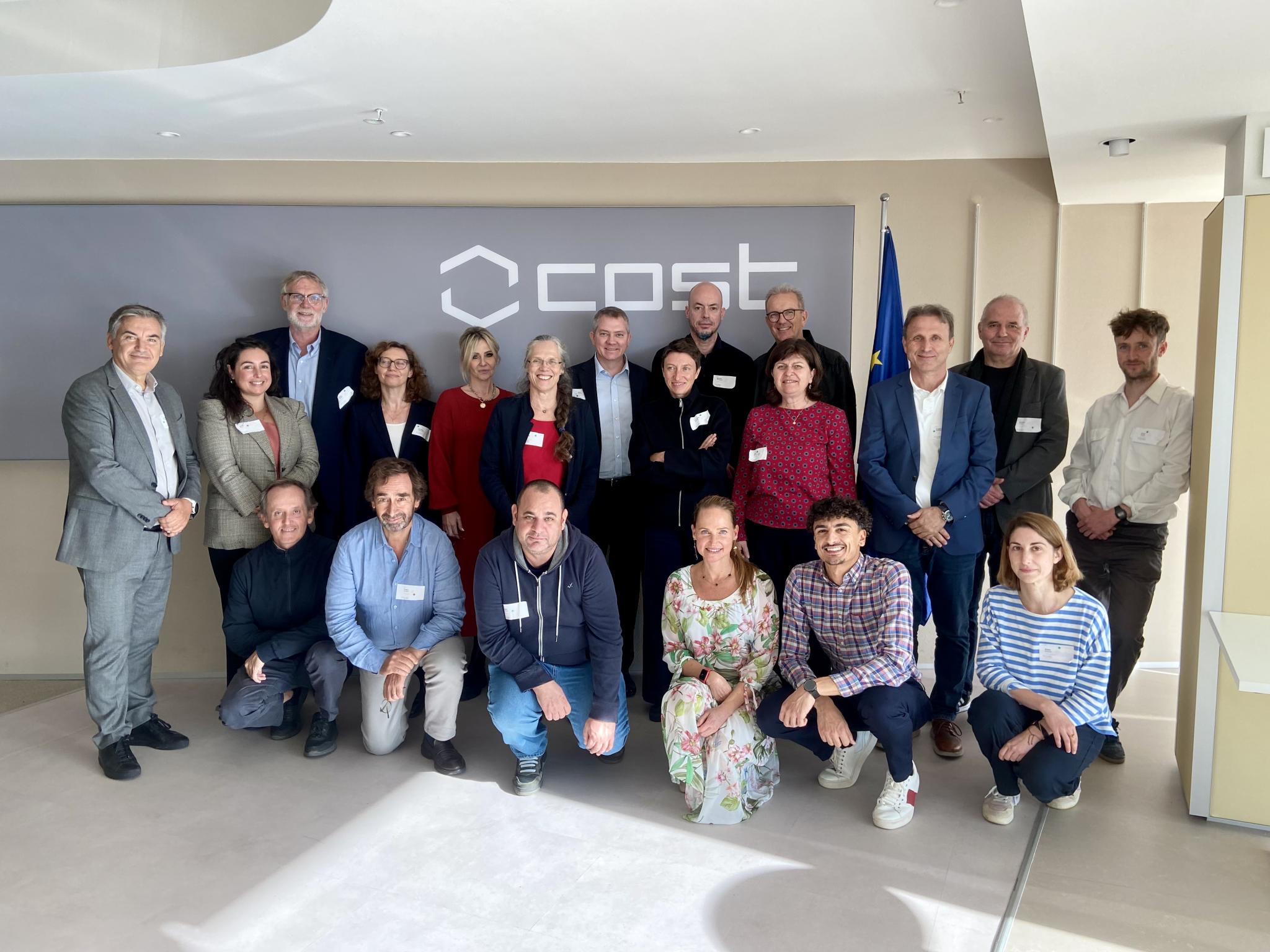
Port City Territories in Action: A collaborative Laboratory for Inclusive Energy Transition (PACT) was officially launched on October 24th, 2024, as a new COST Action, supported and funded by the European Cooperation in Science and Technology (COST). Management committee members from fifteen European countries joined three COST facilitators to lay the groundwork for the coming four years of researching and networking. PACT’s goal is to think through the future implementation of a sustainable energy transition within port city territories. The local spatial and socio-cultural implications of these upcoming changes will be studied and discussed in order to “propose new methodological responses for knowledge co-production and collaborative planning” (cf. also Memorandum of Understanding, 2024).
10th World Water Forum: Our Collective Journal and Key Takeaways, Part II
18 October 2024
Carlien Donkor, Carola Hein, Julia Dahlan, Matteo D’Agostino and Erik de Maaker

From 18-25 May 2024, members of the UNESCO Chair Water, Ports and Historic Cities and the PortCityFutures Center joined the 10th World Water Forum (10WWF) in Nusa Dua, Bali. The 10WWF presented an opportunity to not only showcase the work of the UNESCO Chair but also to exchange with other international programs and projects that work to ensure sustainable and just water futures through interdisciplinary collaboration and innovation. Our delegation gained valuable insights on how to further our work within the PortCityFutures Center.
10th World Water Forum: Our Collective Journal and Key Takeaways, Part I
18 October 2024
Carlien Donkor, Carola Hein and Matteo D'Agostino

In continuation of the UN 2023 Water Conference in New York, where PortCityFutures (PCF) and the UNESCO Chair Water, Ports and Historic Cities (WPHC) co-organized several activities under two official side events, UN of Rivers, Deltas and Estuaries and Water and Heritage, the team worked with various institutions and colleagues throughout the year to prepare for the 10th World Water Forum (WWF) in Nusa Dua, Bali. The WWF – the largest triennial international meeting of diverse stakeholders in the water sector (World Water Council, n.d.) – took place from 18 to 25 May 2024 and was co-hosted by the World Water Council and the Republic of Indonesia. This year’s edition carried the title: “Water for Shared Prosperity.” We attended the inauguration activities, including the Balinese water purification ceremony (Melasti) and an official opening dinner, attended also by the President of Indonesia, Joko Widodo, who opened the High Level Meeting Session, emphasizing the urgency for digital collaboration in water resource management. He compellingly referred to water as “the next oil” in global economics and ecology (Bureau of Press, Media and Information of the Presidential Secretariat, 2024).
Location-Based Insights with the Bauhaus of the Seas Sails Geospatial Platform
24 Sep 2024
Michael Rodrigues, Alankrita Sarkar, Maëlle Salzinger and Carola Hein

The Bauhaus, renowned for transforming 20th-century design by bridging art, industry, and architecture, has inspired the European Union to envision a 21st-century counterpart. This new Bauhaus is committed to leading a movement aligned with the European Green Deal, focusing on sustainability and social inclusion. In response to this vision, the Bauhaus of the Seas Sails proposes a continental initiative centered around the world's most fundamental natural resource: the sea.
Planning Ports in Proximity: Navigating the Peculiar Case of Koper and Trieste
13 Sep 2024
Martin Valinger Sluga and Lucija Ažman Momirski
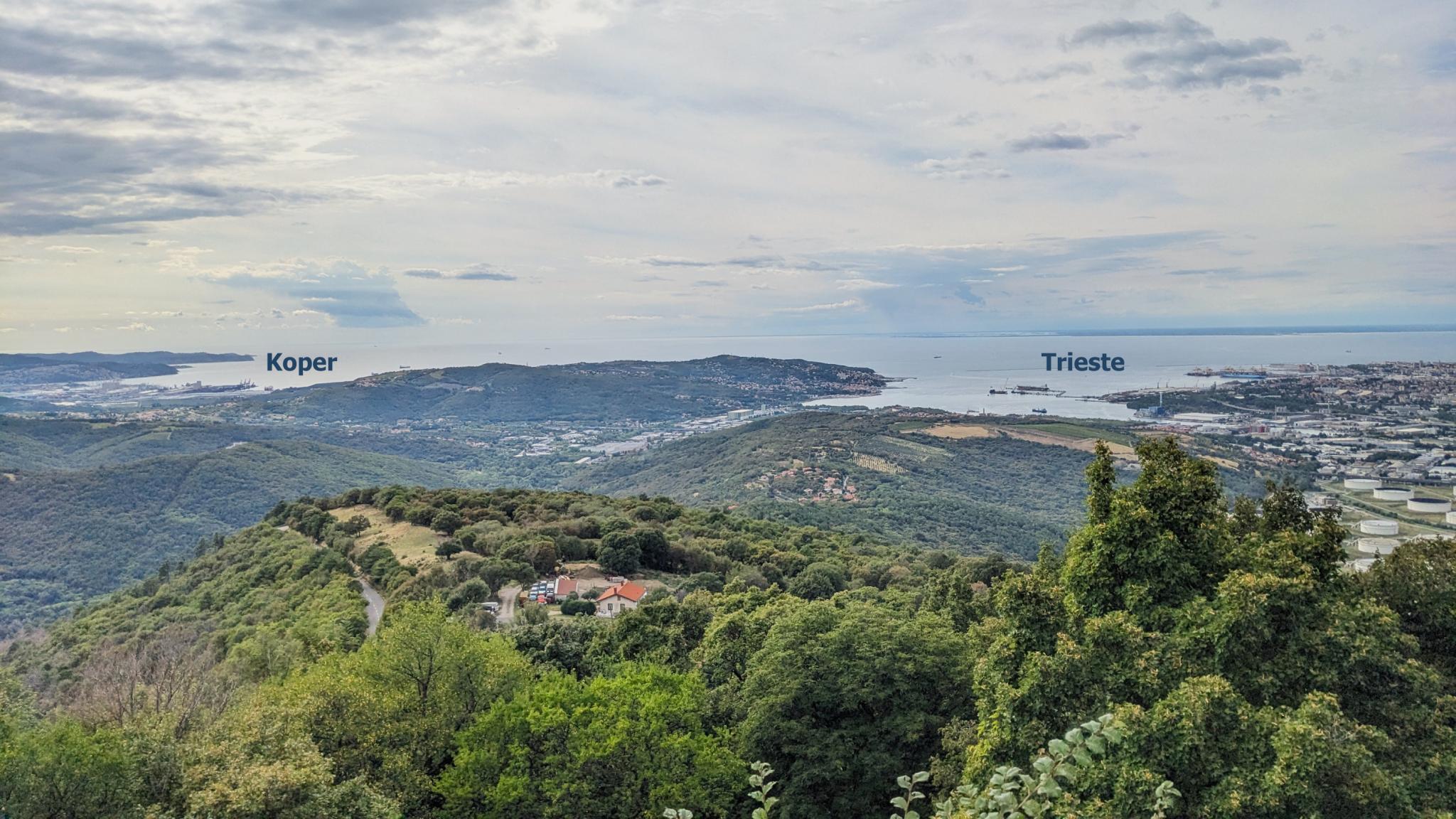
Ports and port cities in proximity represent particularly interesting case studies in planning theory and practice. Their spatial planning is often intricately related due to their geographical and other types of proximities (e.g. institutional). However, they can also diverge significantly due to unique local and regional circumstances. In this blog, Martin Valinger and Lucija Ažman summarise the key findings of their article recently published in Planning Perspectives. The article examines how geographical proximity, dynamic geopolitical circumstances, and a unique border context have shaped the development trajectories of the neighbouring ports of Koper (Slovenia) and Trieste (Italy), located in the northeastern Adriatic. The blog adds to the article as it explores new insights into the current status quo, where various local civil groups on both sides of the border are becoming increasingly involved in port planning discussions.
A Journey through Water Scarcity: A Blend of Openness and Sharing in Public Spaces and Guarded Secrecy in Four Moroccan Cities
6 Sep 2024
Carola Hein, Maurice Harteveld, John Hanna, Paolo De Martino, Muamer Tabaković, Carlien Donkor, and Libera Amenta
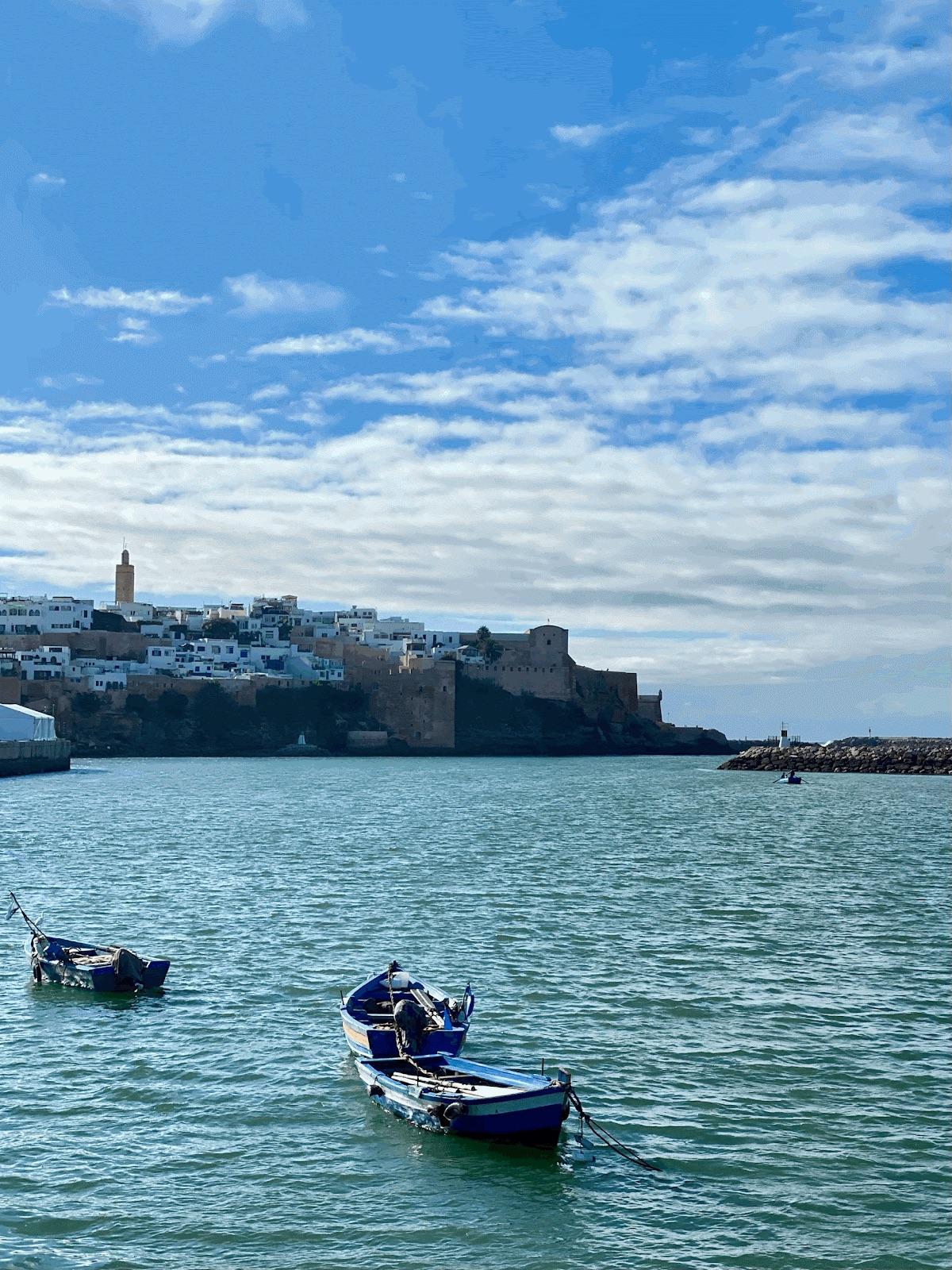
This year’s Urban Archipelago graduate design course focuses on water and public space in Moroccan cities. We are building on and advancing the methods that we developed during last year’s exploration of the Italian city of Trieste on the Adriatic coast, including, among others, biographies of place, micro-narratives, and guided imagery of water within urban landscapes. Once again we challenge students to rethink the spatial, societal, and cultural practices of today by learning from the past and envisioning sustainable futures by design. The effects of urbanization and climate change are also increasing in Morocco; however, here in particular, the lack of water will have a long-term effect on public areas and urban life. After visiting Trieste, we concluded that personal experience is key to understanding the role that water plays in our lives. This insight remains valid. It promised to be an immersive exploration into the multifaceted dimensions of water in the Moroccan cities of Rabat, Salé, Fes, and Tetouan.
World Heritage Water Management for Sustainable Site Development
4 Sep 2024
Tino Mager

Cultural World Heritage properties are always related to water, as they would not exist without appropriate water management that enabled their construction and preservation. In arid climates or floodplains, people needed to ensure the supply of water and protection from its abundance. In addition, the continued use of the World Heritage properties requires a balanced water situation to provide livable conditions for people, but also to ensure the functionality and longevity of the sites. The changing climatic conditions that we are increasingly confronted with (ECMWF, 2024) threaten cultural properties by water shortages, drought, flooding or damage to foundations, for example.
Testing New Ways of Living with Water in the Delta: Bauhaus of the Seas Sails Delta Kick-Off
02 July 2024
Maëlle Salzinger, Alankrita Sarkar, Michael Rodrigues and Carola Hein

In the Delta region between the Netherlands and Belgium, water connects people, land, animals and plants to each other and to global dynamics, including trade and climate change. Water flows irrespective of borders, and the effects of climate change on water systems will affect all Europeans, albeit in different ways. Yet we are witnessing the surge of far-right parties in Europe, which secured one quarter of the seats in the recent European Union parliamentary elections. They are openly promoting an inward-looking, nationalist approach to policy-making instead of a European one. This is symptomatic of the continued struggle to think beyond borders and differences in pursuit of a shared vision for a sustainable Europe.
A Quiet Port Neighborhood? Experiencing Sound in Katendrecht, Rotterdam
21 June 2024
Vincent Baptist, Sahar Asadollahi Asl Zarkhah, Rosa de Kruif

When you think of port cities, you think of industrial noise from passing ships and factories, right? An industrial peninsula like Katendrecht in Rotterdam South is nowadays no longer dominated by port labor and freight traffic, however. How is such a transformed harbor neighborhood perceived and experienced by residents in terms of noise nowadays? Urban developers could make good use of such insights.
This article was originally published in Dutch on Gebiedsontwikkeling.nu
Local Identity and Global Relevance: Examining the Role of Past Trade and Travel Networks
17 June 2024
Martin Jan Månsson

Martin Jan Månsson is an urban planner and map maker with a special interest in the global interconnectedness of places. His work involves creating historical travel and trade route maps spanning medieval and early modern times. In this blog post, he reflects upon lessons learnt while compiling a comprehensive map covering the global 19th century, with the aid of hundreds of English travel journals and texts. The 19th century was a pivotal era for cities and ports worldwide, and it was the beginning of a globe-spanning standardization process that continues to nibble away on local flavor to this day.
Vertical Social Condensers and “Fantastic” Waterfronts in Rijeka, Croatia: Architectural Design Studio at Politecnico di Milano
08 June 2024
Pierre-Alain Croset, Leonardo Zuccaro Marchi, Luca Capacci with Amir Adelfar, Francesca Diano, Alberto Geuna, Maria Chiara Giangregorio

For the second consecutive year, the Architectural Design Studio was organized as an international collaborative class with the Institute of Architecture Technology at the Technical University Graz (TUG), with the participation of the teachers Marisol Vidal and Martin Boleš. Students and teachers from PoliMI and TUG operated in the parallel Design Studios of the respective Masters in Architecture. The collaboration fostered a fruitful interchange of discussions among the students to elaborate their on-site analysis and design. Overall, this collaboration helped to share different teaching approaches between PoliMI and TUG towards a more international exchange of pedagogical methods. In addition, the enrolled students were mainly international, coming from more than 20 different countries, bringing their cultural and educational backgrounds for engaging discussion and design proposals.
Rotterdam’s Port City Interface as a Strategic Asset to Nurture Port City Symbiosis
23 April 2024
Kees Stam

As redeveloped waterfront areas are among the most attractive spaces in Western port cities, urban actors, including citizens, often view the spatial ‘port city interface’ from an urban perspective, and expect port activities to leave and make way for urban functions such as housing, recreation and cultural amenities. This urban perspective can also be found in the AIVP Agenda 2030, where Commitment no. 8 on the port city interface is dedicated to residents living in the proximity of ports. At the same time, researchers have also described the port city interface as a strategic asset to restore the historical symbiotic relationship between ports and cities. In this blog, researcher Kees Stam explores how the port city interface in Rotterdam contributes to ‘port city symbiosis’, and argues that continuous collaboration between ports and cities is necessary for mobilising the potential contribution of the port city interface to port city symbiosis.
Blue Papers: From Landmarks to Watermarks: Water Towers as Hidden Signs of Water through the Value Case of Ourinhos, Brazil
15 April 2024
Rodrigo Lilla Manzione

In response to water challenges related to climate change and population growth, we need new solutions to address complex water problems. Many practitioners and academics are looking to the past to learn from historic water spaces, practices and heritage (Hein 2022). This approach is also the foundation for the course Water Systems Design: Learning from the Past for Resilient Water Futures,[1] which provides a value-based approach that catalyzes spatial and infrastructural transformations and includes values associated with material, economic or cultural flows. Learners create a value case following a value-based approach (Robbins and Sommerschuh 2016/2023. D’Agostino and Hein 2024). This article demonstrates how learning in the course can help (re)connect water, culture and heritage and it advocates for a change in narratives through the Ourinhos case study. The article applies key lessons of the course to an analysis of Ourinhos and offers a plan – the Watermarks Project – to leverage existing water structures to raise water awareness and public engagement in water-related issues.
Water Systems Design: Professional Course Setup and First Findings for Valuing Water from Ourinhos/SP-Brazil
12 April 2024
Carola Hein, Lea Kayrouz, Matteo d’Agostino, Carlien Donkor
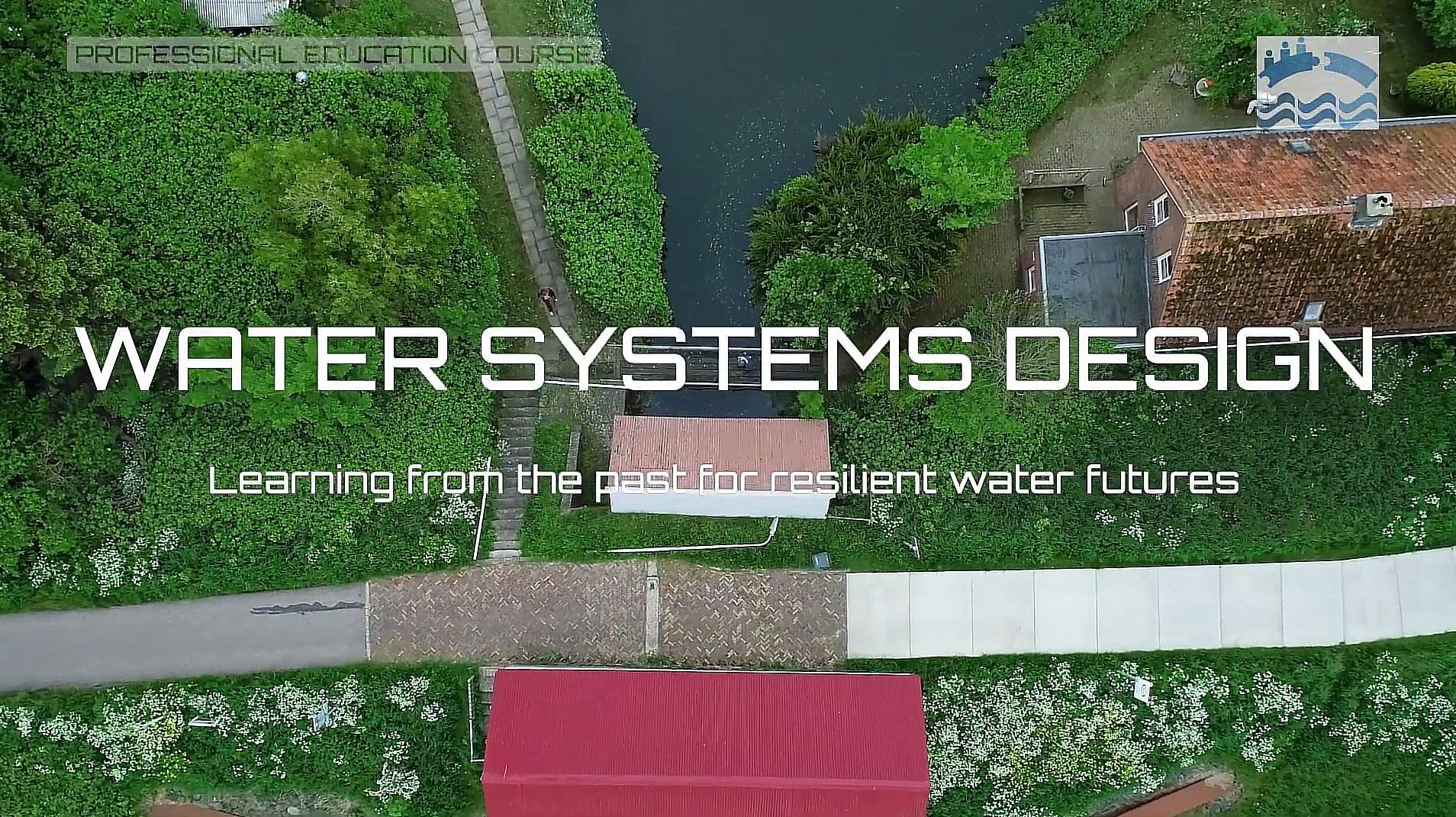
Understanding that water systems are intricate networks involving space, society, and culture is essential to targeting water challenges in a global context of growing water insecurity. Professionals and academics need to collaborate with citizens, institutions, and civic organizations to explore and leverage knowledge and expertise on water heritage, urban planning, economy, sustainability, and culture to develop comprehensive approaches to water management. New forms of capacity development can help to test and promote methodologies that inspire rethinking practices in the field. The professional course Water Systems Design: Learning from the Past for Resilient Water Futures, developed by a group of scholars from the UNESCO Chair Water, Ports and Historic Cities from the LDE university consortium, focuses on the intersections between architecture, urban design, and cultural practices. It gathers professionals from multiple backgrounds and provides tools and frameworks to explore today’s wicked water challenges.
Sea-Ing Morocco: Architectural Travels to Moroccan Port City Territories
06 April 2024
Carola Hein, Ouefa Messous, Paolo De Martino and John Hanna

Ports are key nodes in the distribution of goods and people on a global scale. They link diverse territories and impact nearby cities and territories. Understanding the ways in which maritime flows shape territories on sea and land and using them to improve cities and landscapes in the short- and long-term is key to future sustainable development. Architects, planners and landscape designers can play a key role in this process; to do that, they first have to understand the role ports play in space, society and everyday life. Developing sustainable port city territories (Hein, 2023) requires keen awareness of intricate relationships regarding space and governance. In line with this premise, the Master Course Adaptive Strategies: Designing Scenarios for Port Cities, coordinated by Carola Hein and run by teachers Paolo De Martino and John Hanna at Delft University of Technology, focuses on educating architects, planners and landscape designers to understand the specific conditions of port city territories, including long-term developments and path dependencies.
Interpreting the Port City Atlas
15 March 2024
Merten Nefs

Since 2023, the world has a comprehensive overview of European seaport cities. The maps in the Port City Atlas, produced using a consistent geospatial methodology and framework, are already inspiring a follow-up project on riverport cities. But what are we actually doing with all the available maps? Which follow-up questions do they raise, which deeper insights can they provide and what is needed to achieve these? In this blog post, Merten Nefs provides a commentary on the Port City Atlas and asks how we should read and interpret port city maps.
Surprising 'Superpowers': Travelling Back to the Future with a Dolphin in Taranto Port City
01 March 2024
Noemi Frascella

The literature on port cities is full of enticing examples of how these places have faced, throughout history, a number of highs and lows in the (re)construction of a tailor-made identity. This process would be stimulated by both natural and human driving forces, such as a specific geographical positioning around the globe, the presence of visionary decision makers, a well-aligned structure of services, and others. Above all, the local identity of port cities displays a consolidated relationship with local, multi-faceted clusters of stakeholders. In this blog, Noemi Frascella, working at the Port Network Authority of the Ionian Sea - Port of Taranto, takes readers on a dreamlike voyage to explore how a colony of dolphins can represent an encouragement to drive the port city of Taranto’s millennial history from past to future.
Design for City-River Symbiosis: The Case of the Thames, London
16 February 2024
Koen Stam

TU Delft alumni Koen Stam presents his graduation research, which aims to rethink the urban riparian condition through the use of architecture and towards a more symbiotic relationship between the urban river and the city. To do so, he researches the role of water, the waterfront and its fluid condition all influencing the functional totality of London with its emerging issues and contemporary challenges. This shines a new light on the role of the architect and how architecture could become a mediating actor between water and city and create an urgent need for a waterfront symbiosis. In this respect, it is fruitful to experiment with a new framework for developing an architectural typology that focuses on connecting humans and the non-human, while simultaneously regenerating the ecosystem.
Sea-ing Africa: Tracing Legacies and Engaging Future Promises of ‘Big’ Infrastructure Projects in Port City Territories in Ghana and Morocco
2 February 2024
Carola Hein, Sabine Luning

Sea-ing Africa is a new project developed under the leadership of Sabine Luning and Carola Hein, involving colleagues of Leiden University based at the African Studies Centre and NIMAR (Netherlands Institute Morocco), as well as academic and social partners in Ghana and Morocco (the Institute of African Studies in Accra, the School of Railways and Infrastructure Development in Takoradi, AYA Engineering Ltd, the Architecture Schools of Rabat and Casablanca, the Tanger Med Port Authority and the National Ports Authority of Morocco). The project explores the development of land- and sea-based infrastructure in the context of societal and cultural transformation. It looks at the ways in which shipping, rail and road infrastructure serve the flows of raw materials with ports as nodes, and investigates the impact of these flows on local lives and livelihoods.
Report AIVP Venice 2023: Annual World Conference on Cities and Ports
20 January 2024
Silvia Sivo

On 16-18 November 2023, AIVP in cooperation with the North Adriatic Sea Port Authority held its 2023 conference on the theme “Linking global and local, technology and the citizens” in Venice, addressing the challenge of social acceptability and dialogue with citizens as an essential foundation for port (city) innovation. The conference represented a moment of analysis and confrontation between port, city and regional representatives, focusing on issues to reinforce the link between ports and their territory, pursue shared values and objectives, govern the contrasts and ruptures caused by both port presence and displacement, and promote the social recognition of the port as a living reality and working environment for the development of surrounding territories.
Callao: The problem of a city that is only thought from its port
22 December 2023
Bryan Castillo Dávila

In the free online course (Re)Imagining Port Cities: Understanding Space, Society and Culture, learners make a portfolio addressing the spaces, transitions, challenges, stakeholders and values of a port city territory of their choosing. We motivate the learners to reflect on their learning and invite them to present their findings in a blog. In this blog, learner Bryan Castillo Dávila writes about Peru’s Callao, a port city with enormous potential for urban development, but nevertheless also still facing challenges that show the need to have more diverse actors and visions coming together around the decision-making table.
Rise and Fall of Waterway and City: Daguan Canal in Canton (Guangzhou)
1 December 2023
Xueping Gu
In the free online course Water Works: Activating Heritage for Sustainable Development, learners make a portfolio addressing the spaces, transitions, challenges, stakeholders and values of a port city territory of their choosing. We motivate the learners to reflect on their learning and invite them to present their findings in a blog. In this blog, learner Xueping Gu writes about Daguan Canal in Canton to explain how the waterway and city interacted with each other throughout history. Canton (known as Guangzhou today) is the capital city of Guangdong Province, China. It is located at the estuary of the Pearl River, facing the South China Sea. This advantageous geographical location makes it an important port city. Daguan Canal was a waterway that was originally dug 500 years ago to connect the Pearl River and Canton city moat.
Shanghai’s Industrial Waterfront Heritage: A Case Study of the Shanghai Shipyard Puxi Branch
21 November 2023
Gong Zhang

In the free online course Water Works: Activating Heritage for Sustainable Development learners make a portfolio addressing the spaces, transitions, challenges, stakeholders and values of a port city territory of their choosing. We motivate the learners to reflect on their learning and invite them to present their findings in a blog. In this blog, learner and PhD researcher Gong Zhang writes about the Shanghai Shipyard Puxi Branch, one of the birthplaces of China’s shipbuilding industry, listed as Chinese National Industrial Heritage, and once the largest shipyard in the Far East.
Ports for SDGs: An Ecosystem Perspective on Infrastructure Megaprojects
05 November 2023
Johan Ninan

Infrastructure megaprojects have long been a subject of debate in relation to sustainability. These massive undertakings often result in inefficiencies during project delivery, affect local communities, and contribute to carbon emissions throughout their lifecycle (Söderlund, Sankaran & Biesenthal, 2017). However, there is room for these projects to better integrate into society and create more value for society (Ninan et al., 2023). As Johan Ninan argues in this blog, taking the Port of Rotterdam as example, infrastructure megaprojects can also serve as catalysts for sustainability by actively contributing to the achievement of multiple Sustainable Development Goals (SDGs).
Growing up Differently: The Port as a Cause of Unequal Treatment in Ghana’s Twin Cities Sekondi-Takoradi
20 October 2023
Carlien Donkor

While it is a common notion that infrastructural projects can facilitate socio-economic development of communities, an important question to ask before making this assumption is: what factors actually drive such projects? Sekondi-Takoradi, located in the Western region of Ghana, was planned as a coastal twin city to suit trading needs in the colonial era (Intsiful, 2017). Taken together, it is the third largest city in the country, yet interestingly, the everyday Ghanaian considers them as very different cities. Over time, both cities have indeed followed different paths: economic potential in Sekondi receded due to the strategic location, military significance, port modernisation and the 2007 discovery of oil just off-shore from Takoradi (Chalfin, 2018). Since then, the latter has been a new hotspot for foreign presence once again, as a sort of neo-colonisation (Obeng-Odoom, 2014). Sekondi remains in the background of this narrative, thereby further putting into question the introductory notion of infrastructural development, which has led to the disjointed growth of these twin settlements, argues researcher Carlien Donkor.
The Port City of Gothenburg as Performance Ground for the Women’s Suffrage Movement
06 October 2023
Christina Reimann

(Creator: Anna Backlund (1865–1920); Source: Nordiska Museet - NMA.0032617.jpg (public domain))
Port cities traditionally appear to us as male spaces. Both scientific research and popular culture convey a picture of port cities marked by masculine agency – by seafarers, dockworkers, tradesmen or men of industry. Women seem to be relegated to a few professional branches in the invisible backgrounds of the port industries, yet ensuring that trade and industry work smoothly – as housewives, maids, prostitutes, or in the catering industries. However, revisiting the gendered order of early-twentieth-century Gothenburg, we discover the ‘male’, yet transnationally well-connected port city as facilitating host of a vibrant women’s rights movement, argues Christina Reimann, historian and researcher at Södertörn University, Stockholm, and lecturer at Sciences Po Paris.
Port Development: ‘Doing Good’ or ‘Doing No Harm’ to the Port-City Ecosystem?
01 October 2023
Maurice Jansen

Ports and port cities play a pivotal role towards the sustainable development of coastal ecosystems. These ecosystems’ natural capital offer favorable conditions for industry and accessibility to world markets. While port industrial companies used to be reactive to pressure from environmentalists, in more recent years port authorities have demonstrated leadership in adopting inclusive strategies. They also seek to align their strategic intentions with stakeholders in the port city ecosystem. Around the world, port authorities are aligning their ambitions toward contributing to the Sustainable Development Goals (SDGs). In a recent chapter on International Business and the Sustainable Development Goals, Maurice Jansen analysed 212 projects from the World Port Sustainability Program (WPSP) portfolio, which provides a good basis for content analysis through its descriptive consistency. The subsequent analysis questioned to what extent ports and their authorizing bodies 1) have been motivated and committed to implement the SDGs and 2) have acted upon their commitments.
Questioning ‘Growth as Usual’ at Dublin Port: Green Minister challenges sustainability of draft Master Plan
09 September 2023
Colm Murray

In Ireland, a Green Party Minister challenges the plans for the expansion of Dublin Port, in light of changing policy imperatives to mitigate climate change, social and ecological crises. The Minister for the Environment, Climate and Communications (which also includes Transport), Eamon Ryan, intervened with a policy direction in the Dublin Port Company’s consultation stages of drawing up a master plan for the ‘final’ future of Dublin Port. In this blog, researcher Colm Murray analyses the implications of this clash of visions about the future of this port as a node in the global trade system. The outcome of this discourse will indicate whether ports are sites where the meaning of sustainability may be formally contested, potentially directing change towards sustainability in local and international political economies.
Extending the Material Biography of Byblos through Understanding Ancient Common Commodity Spaces and Human Artifacts
03 September 2023
Maurice Harteveld, Thomas van den Brink, and Foteini Tsigoni

The Dutch National Museum of Antiquities (Rijksmuseum van Oudheden) in Leiden closed the exhibition on ‘Byblos, The World’s Most Ancient Port City’ on 12 March 2023. Before the Leiden exhibition, a related exhibition “Byblos et le Louvre” in Paris commemorated the first French-led excavations in Byblos, the university of Geneva (Renan 1864, XIX-XXXIII). That work made it possible to highlight “the importance of this strategic port in different periods of history”, as the French exhibition stated. The Leiden elaboration on the first ‘world port-city’ illustrated a wider variety of studies to its origins and development (Kertai & Zaven 2023). This included the subsequent eras in which Byblos’ identity further transformed. Supported by the narrative of maritime commodity transport, the exhibition provided simple and reliable means to reflect essential indicators of a port-city. Still, since our visit, we continue to question if this was all. What particularly sticks is the statement that Byblos is ‘the world's oldest port-city’. From the exhibition's first announcement until after a visit, the question remains: is it? And, even if not the oldest, what is the specific notion of a port-city in this region during antiquity?
Presenting the Port City Atlas: How Mapping Can Help to Better Understand European Port City Territories
30 Jun 2023
Carola Hein, Yvonne van Mil, Lucija Ažman-Momirski

Understanding the unique spaces of port city territories, where global flows meet local geographies, topographies, histories and practices, requires a unified approach to visualisation, specifically mapping a large number of territories in a unified way. Such an approach can help us to understand the relationships between sea and land, and between port, city and territory. It also helps us to examine the relationship between multiple port city territories as part of international trade networks and can facilitate the identification of 'gaps' (Hein & Van Mil 2020) where spatial, institutional or cultural opportunities and challenges exist, and where planning can be of a benefit. With the publication of the Port City Atlas, we introduce a new conceptual and methodological approach to international comparative research that bridges different disciplines and fields, and which serves as a catalyst for new scientific and professional explorations of the impact of ports on cities and territories.
Targets and Lifelines: Port Cities in Times of War
22 June 2023
Joris Ammerlaan
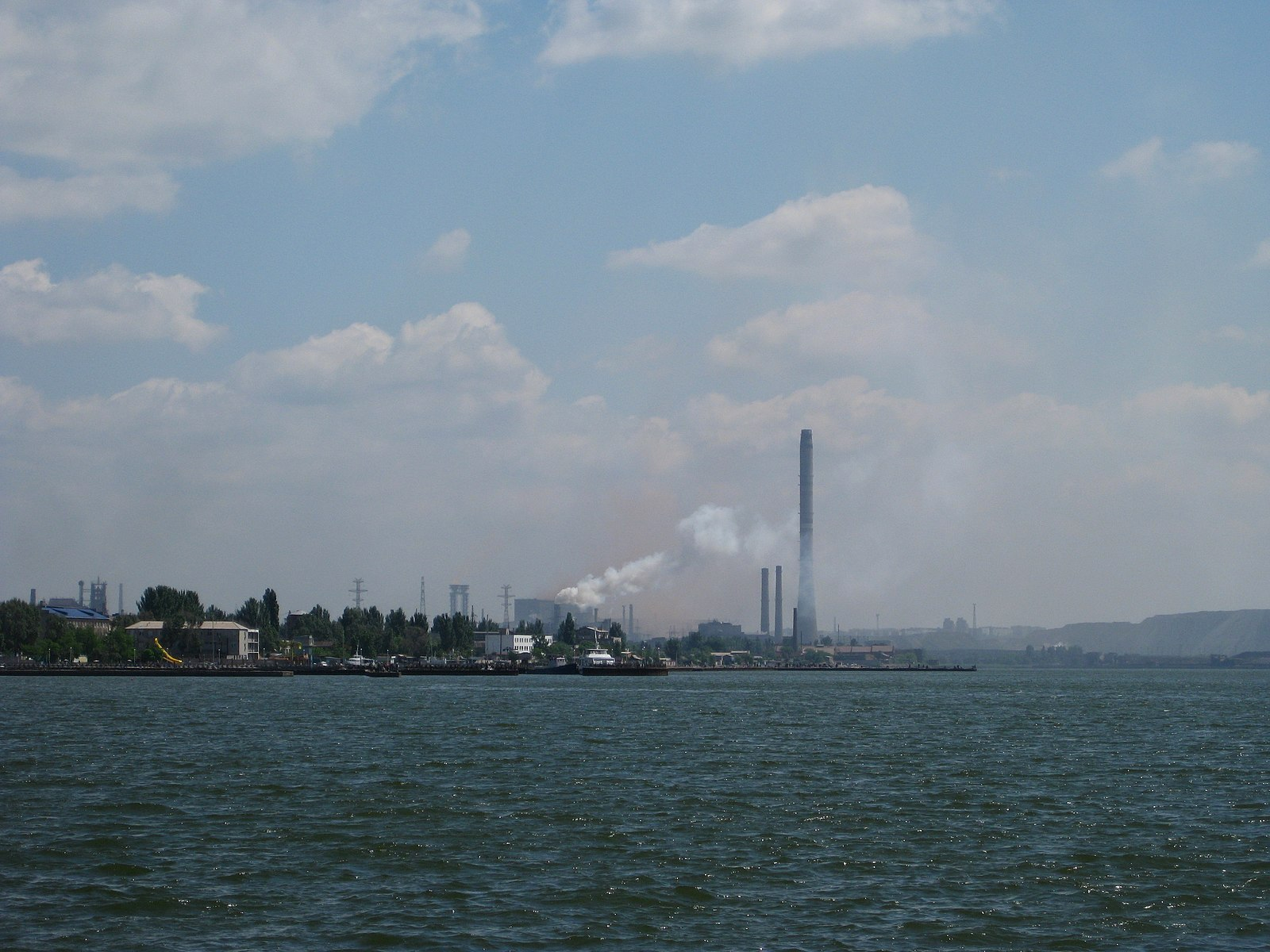
Within PortCityFutures, we work under the assumption that port cities worldwide share distinguishing features and challenges. Two years ago, for example, we posted a blog on the redevelopment of the port of Odessa’s waterfront, as a case study of the phenomenon that many port cities have been going through since the 1980s. Today, however, we continue to see how history rhymes when it comes to the position of port cities in times of war. We asked military historian Joris Ammerlaan to look at port cities as both lifelines and targets in wartime, keeping in mind the port cities of Ukraine’s current situation in particular.
Gattopardian Transitions: Misleading Narratives in Port City Futures
15 June 2023
Paul van de Laar

Port, maritime, and technological path dependencies have shaped priorities on future economic developments and scenarios for transitions (Carse & Lewis 2017). Therefore, we should be critical when port authorities and their stakeholders claim to be taking the lead in major (ecological, environmental, and economic) transitions in port city regions. The Rotterdam Port Authorities are a case in point. They market a sustainable, green future of their resilient delta. Technological innovations (carbon capture and storage, bio-based and hydrogen economies) and strategies on circular economies are mediatized in such a way that these words become “empty signifiers” (Brown 2016). Their narratives imply pairing economic growth scenarios to industrial greening operations. Future port scenarios are written to ensure that we continue business as usual. Harry Geerlings, emeritus professor at Erasmus University Rotterdam, stressed in his valedictory lecture in February 2023, why this optimism should be distrusted. The past thirty years, Rotterdam’s port businesses were not able to mobilize forces in changing their business model, despite the glossy PowerPoints and smart communication strategies (Benjamin 2023). Rotterdam’s port business has relied on fossil fuels to maximize shareholder values and strategies. In this new blog post, urban historian Paul van de Laar puts forward the following proposition: port narratives of transitions are misleading. Ensuing the ideas put forward by ‘Gattopardo economics’ (Palley 2013), Paul advocates calling them ‘Gattopardian transitions’, a series of strategic measures to keep processes the same. Why should PortCityFutures need to address these misleading narratives?
Flooded Memories: Making a Short Film on the Port City of Trieste
03 June 2023
Afra Knaap, Augusta Fiseryte, Fons van de Ven, Niké te Brinke, Paula von Zeska de Toledo, Raf van Oosterhout, Sue Vern Lai and Winnie van de Sande
The Urban Archipelago course of TU Delft reimagines the future of Trieste, a port city that is and will be heavily impacted by climate change. As such, the course went on a week-long trip to Trieste, and learnt from on-site experts about some pressing realities in the city: sea level rise and flooding, ageing population, abandoned port infrastructure, old industrial heritage, and the multicultural identities connected to it. During the trip, a film was shot, and after a few days of intense editing, it premiered at the exhibition Waterstad Rotterdam in Nieuwe Instituut on 13 May 2023.
The short film Flooded Memories consists of five acts of 90 seconds each, and centres around the Piazza Unità d'Italia in Trieste, exploring larger themes and relations between water, land and people. As the ‘movie group’ consisting of the eight students who co-authored this blog, we hope watching the film allows you to explore and rethink various meanings of water that are all around and in us. After your own reflection, we invite you to have a peek into our creative process.
Blue Action Paper: Interventions in the Paraguay River to increase heavy-vessel navigation (Hidrovia Paraná-Paraguay) would cause irreversible damage to the Pantanal, the largest wetland in the world
29 May 2023
Matthias Wantzen and see the full list of coauthors in the blog piece

The Hidrovia Paraguay-Paraná (HPP) is a project to improve navigability and infrastructure and thereby facilitate year-round transportation of commodities on barge trains between the upper reach of the Paraguay River at Cáceres (Brazil) through the Paraná River to the Rio de la Plata in Uruguay and Argentina (Sousa Junior et al. 2019). The main purpose of extending the Hidrovia up the Paraguay River is to transport soybeans and other agricultural commodities produced in Brazil, Paraguay, and Bolivia southwards to sea ports in Argentina and Uruguay for export to North America, Europe, and Asia. The first version of the project had been planned in the 1980s, but after evidence provided by scientists as well as societal concerns about the irreversible, systemic impacts on the Pantanal wetland in particular (e.g., Ponce 1995, Lourival et al. 1999, Hamilton 1999), the Brazilian part of the project was officially turned down in 2000 (Taques et al. 2020).1 Nevertheless, advocates for river transportation have continued to push for increased channel dredging as well as development of ports and other infrastructure along the upper Paraguay River. The process of decision-making regarding the Hidrovia has been regarded as a show-piece for the tragedy of the commons and the tyranny of small decisions (Gottgens et al. 2001, Tortato et al. 2022).
Changing Minds: Towards Water-Based Architecture and Public Space for the Future Urban Archipelago
20 May 2023
Carola Hein, Maurice Harteveld, Paolo De Martino, John Hanna, Muamer Tabakovic, and Carlien Donkor

At a time of changing water conditions - more rain, less rain, flooding, drought, sinking and rising groundwater levels, etc. - we must urgently rethink how we teach future architects and urban designers, landscape architects and environmental designers. Water is not only a chemical substance or something to bridge for transportation, water is an entire system, connected from source to sea, from fresh to salt water, used for pleasure or to connect all our buildings and urban structures running underneath. Historically, we lived with water in ways that changed through the seasons, but for the last century and a half, we have tried to resist and control water, using more and more defense infrastructures such as dykes or walls to protect people from flooding. Resisting water is no longer an option, however. As water systems change, we need to adapt buildings and find new ways of living with and/or on water.
Exploring the Significance of Naval Ports’ Heritage: A Literature Review
11 May 2023
Ricarda Blümcke

Ports not only act as places of trade and exchange, but also of conflict. The ongoing war in Ukraine has illustrated the key strategic role of ports, but this is by no means something new. The growth and prosperity of many countries have historically been closely connected to the strength of navies, which necessitated the creation of networks of ports and dockyards to accommodate and maintain national fleets. Naval ports have historically been an important part of a country's defence system, and as such they often also have a rich cultural heritage. By investigating the role of heritage in connection to naval ports, we can learn more about the historical significance of these areas, as well as identify opportunities for future research by showcasing the gaps in current literature on these interconnecting topics. In this blog post, Ricarda Blümcke, MA student of International Relations at Leiden University, discusses which different strands past scholarship have so far identified and analysed regarding naval ports and their heritage.
When will the port city of Constanța maximise its geographical advantage?
05 May 2023
Simona Dolana

The port city of Constanța, Romania's maritime gateway, lies at a strategic geographical location. However, it has struggled to overcome various challenges for the past three decades. Some of the city's biggest challenges include a declining population (-8% [2000-2022], NIS 2022), a loss of workers in port activities (-80% [1988-2018], Tița-Călin 2018), and deteriorating transportation infrastructure (especially the port's railway, RRSC and RNSC 2022). In this regard, Constanța is not unlike many other port cities. However, many port cities, especially European ones, opted to refocus their economies and develop similarly to non-port cities (general city typology, according to Ducruet and Lee 2006). Whether or not Constanța will evolve into a city where industries unrelated to shipping will flourish remains an open question. In this blog post, urban researcher Simona Dolana demonstrates how Constanța’s challenges can potentially be overcome by concentrating on the city's strengths, priorities and urban actors.
Water and Socio-Ecological Justice: Official Side Event of the 2023 UN Water Conference
15 April 2023
Rick Bell

The UN Water Conference that was held on March 22-24, 2023 in New York was characterized by a call to action. In many events within the UN building, but also in side events all over Manhattan (and hybridly, all over the world) this call to action was followed up on in discussions, critical reflections, and possible solutions. The transnational network of the UN of Rivers, Deltas and Estuaries came together at AIANY’s Center of Architecture, to discuss local and contextualized solutions. In this article Rick Bell, President of the Consortium for Sustainable Urbanization (CSU) at Columbia University, reports and reflects on this meeting.
Ports in the past: Berenike (Egypt) as a place of barter and business
05 April 2023
Roderick C.A. Geerts

Ancient ports have many similarities to modern ports, they are hubs of activities and meeting places of merchants of many nationalities. Archaeological excavations can reveal much about the life and activities in ancient ports. The Roman period port at Berenike (Egypt) is one such port which is a treasure trove of such information on ancient trade and life in the port.
Rotterdam, have we forgotten about the seafarers?
01 April 2023
Maurice Jansen & Hannah Mosmans

‘Out of sight, out of mind’. This saying holds true for seafarers as ports and city functions separated over time. But it is not only a physical distance in Rotterdam, also institutions have put themselves at a distance from seafarers. Our recent research on seafarers’ wellbeing provides insights into the paradox of seafarers’ wellbeing, efficiency, accessibility and security.
Water, Heritage and Youth: Official Side Event of the United Nations 2023 Water Conference
24 Mar 2023
Rick Bell (President Consortium for Sustainable Urbanization (CSU))

Water, Heritage and Youth was the subject of a side event of the UN 2023 Water Conference, organized by Matteo D’Agostino and Jakob Ollivier de Leth on 21 March 2023. Three group discussions - on Activism, Art and Young Professionals - took place in the Studio Lab of Columbia University’s Center for Buildings, Infrastructure and Public Space (CBIPS). Opening remarks from the sponsors included observations from Matteo and Jakob along with remarks by Gizem Karagoz and Rick Bell from the Consortium for Sustainable Urbanization (CSU).
Managing Rivers and Water Scarcity: How Legal Personality Can Be the Key Tool
14 Mar 2023
Caya Hein

Water is vital for humanity: it is a source of life, necessary for subsistence, helpful for transport, and critical in the creation of cities and communities as we know it. In this respect, rivers are especially important as they provide fresh water, can be used for hygienic purposes (i.e. cleaning, sewer systems), agriculture, and inland transport. However, rivers can also bring certain dangers with them – carriers of sickness such as typhoid, cause of floodings, etc. – if not properly managed. The question of 1) how to manage water scarcity and 2) how legal personality can be a key tool in the proper management of rivers has recently been discussed by specialists, with an eye on the various possible solutions on how to deal with water scarcity and implement legal personality in the process.
The Real Rotterdammer Is From Elsewhere!
17 Feb 2023
Paul van de Laar & Peter Scholten

In 2022, Rotterdam vividly remembered the riots that had shaken up Rotterdam South fifty years ago. In the summer of 1972, inter-ethnic tensions erupted in the migrant neighborhood Afrikaanderwijk. The riots were breaking news in the Netherlands and abroad. Foreign TV stations sent reporters to the Dutch port city to comment on the riots’ alleged racist character. The ethnic tensions rang the political alarm bell, and the city government accordingly introduced new integration policies for so-called guest workers. It was the start of a period of experimental integration policies: Rotterdam turned into a migration policy laboratory. Over the past two decades, Rotterdam has become a superdiverse city, a city of minorities and without a clear ethnic majority. The new book De Echte Rotterdammer komt van buiten: Rotterdam migratiestad 1600-2022 (The Real Rotterdammer Is From Elsewhere: Rotterdam Migration City 1600-2022), by Paul van de Laar and Peter Scholten, claims that Rotterdam has a convincing narrative of the modern metropolis and world port, but lacks a plausible story of itself as a migration city. In this book, Van de Laar and Scholten dare to say: the real Rotterdammer comes from elsewhere.
Coste in Movimento - II International Conference on Coastal Landscapes
10 Feb 2023
Paolo De Martino & Matteo di Venosa

“The relationship between land and water is not a new theme”, Matteo di Venosa argues. However, he states, the topic needs to be reconceptualized in relation to the contemporary challenges of climate change and sea-level rise that require framing coastlines as fragile territories transitioning to new equilibria. On the coastline a plurality of diverse challenges intersect, such as erosion or mass tourism, creating a complex relationship between landscape and industry, abandonment and decommissioning of former industrial structures.
70 years “Watersnoodramp”: Water challenges past, present & future
03 Feb 2023
Hilde Sennema

On February 1st, 1953, a storm surge caused parts of the southwest of the Netherlands to flood. The flood took 1,836 human lives, almost 200,000 animals drowned, and tens of thousands of people were displaced. The memory of the disaster is still very much alive, not only in the affected areas, but also through nationwide commemorations and television reports. In this blog, Hilde Sennema looks at why the history of the disaster, the subsequent storm protection of the Delta Works, and the remembrance of the disaster still matter. Especially in a time of rising sea levels, rethinking the ways in which we fight against and live with water is a matter of urgency rather than of luxury.
Exhibiting port cities: 7 exhibitions to explore new angles of port city territories
14 Jan 2023
Conor Hunter, Foteini Tsigoni

There are many stories to be told regarding the development of port cities. Historians, urban planners, engineers and anthropologists all research unique aspects of these complex territories. Each story adds a piece to the puzzle, allowing us to gain a greater understanding of these spaces and apply this to guide them through an uncertain future. In the spirit of the LDE collaboration, we have curated a list of 7 exhibitions which showcase various angles of port city territories. Ranging from experimental to informative, these institutions each provide a unique take which may inspire, teach, doubt or affirm.
Where water infrastructure is unseen: The uncovering of the Senne river in Brussels
23 Dec 2022
By Loukia Batsi

The main body of information was collected through an embodied, ethnographic practice of urban research around the conflicting needs and interests of diverse actors involved in water systems towards a better understanding of the historical value of water areas. The video was used as a medium that mobilizes local actors to enhance critical knowledge production where water infrastructure is unseen.
Political ecology in port cities
12 Dec 2022
By Francesca Savoldi

Text cloud of the content on the ConstestedPorts platform – obtained on 4/12/2022
In this blog, Francesca Savoldi articulates the usefulness of political ecology for researching port cities. Political ecology is a field characterized by an interdisciplinary nature, which study the relationships between political, economic and social factors, with environmental issues and changes. She claims that looking at port cities through this disciplinary lens, allows for undoing ‘dilemmas’ that torment the port-city relationship: including an analysis of power dynamics discloses why certain narratives are more dominant than others.
Blue Paper #13 - The Waters of the Khoshk River: from Memories to Value
20 Oct 2022
Sara Berahman and Irene Curulli

Over the past 30 years, several interventions have had a disastrous impact on the flow of the Khoshk river in Iran. Uncontrolled urbanization along the river, abandonment, and emergency flood protection barriers changed the river’s unique physical features and have negatively affected its relation with nearby communities. Besides these physical changes, social perceptions and environmental memories have determined and affected its value as a heritage landscape over time. In this blog, Sara Berahman and Irene Curulli (Eindhoven University of Technology) argue that in order to understand the value of this landscape for the future, we need to explore the specific values, mindsets, and cultures that have driven its development in time and space.
Objects, Materials, Horizons: The Port of Fata Morgana (Kaohsiung, Taiwan)
11 Oct 2022
Stephen Ramos
In the post-industrial port city landscape, art is often called upon to reimagine historic areas for new programs and possibilities. Art helps create civic spaces in abandoned urban port facilities, and helps to inform publics about local and transnational port city identities and heritage. Art can also be a methodology; a medium through which to explore the complexities of port cities’ pasts and envision their material futures. This new blog is inspired by Stephen Ramos’ recent research on port materiality, and his participation in networks of artists and urbanists seeking international port cultural engagement and exchange beyond mere commodity flows.
Maritime heritage shapes the future of Maassluis: 10-year development plan ‘Maritime Historic Maassluis’
27 Sep 2022
Martine van Lier and Mieke Pennock
Located some 20 km to the west of Rotterdam, the Dutch city of Maassluis has a famous maritime towage and salvage history. The heritage of this past is still present in the city today, and offers outstanding opportunities for a long-term plan to bring the old maritime centre up to date again.
Law, infrastructure and social mobilisation in port cities: connecting civil society and academics
15 Sep 2022
Francesca Savoldi

PortCityFutures co-organised the international conference Law and the Infrastructure of Global Commerce together with the University of Maastricht, University of Antwerp, University of Amsterdam and the University of Edinburgh on 6–8 July 2022. The three-day event in Amsterdam explored the entanglements between law and the different types of infrastructure underlying global commerce and the value chain, including ports. Postdoctoral researcher and Marie Curie fellow Francesca Savoldi was invited to contribute, organizing the opening and closing events. In this blog, she reflects on the theme of the conference and reports on the outcomes of the conference’s closing round table discussion.
Swimming in Port Cities: What Rotterdam can learn from Basel
12 Sep 2022
Andreas Künzi and Hilde Sennema

There’s nothing like summer in a port city, where water is always nearby as a respite from the heat. At least, you would think so. Recently, the Rotterdam police has warned dozens of swimmers near the newly designed waterfront of the Coolhaven that swimming in waterways with shipping traffic is forbidden. Protests arose on social media and even in national newspapers. At PortCityFutures, we wonder if - and if so, how - water in port cities can be used as a public space. In this blog, urbanist Andreas Künzi shares the experience from his hometown of Basel, and historian Hilde Sennema wonders if “the Basel model” could work in her hometown of Rotterdam.
Future as the reality of imagination: Exploring the boundaries of participative planning in Marseille’s port area
3 Sep 2022
Maria Elena Buslacchi

Source: Baptiste Buisson, Unsplash.
You may have already heard about Marseille’s urban change. You may have seen some images of its renewed waterfront. You may have visited its most iconic landmarks, such as MuCEM (Museum of European and Mediterranean Civilizations, designed by French architect Rudy Ricciotti) or Villa Méditerranée (Stefano Boeri’s equipment, previously used as an auditorium and now hosting a reconstructed prehistoric submarine Cosquer painted cave). If these references sound familiar to you, this is because they are part of the official and hegemonic storytelling about Marseille’s urban renewal, matching the names of renowned architects to the charm of the Mediterranean environment. But if you zoom in on the pictures, if you look around the epicenter of this transformation, you can notice a plurality of approaches to the relation between France, Europe and the Mediterranean that tell us many other stories about the relationship between the city and the sea. In this blog, anthropologist Maria Elena Buslacchi focuses on innovative experiences of governance in Marseille’s port area, which currently trigger new forms of dialogue between inhabitants and local institutions.
Beyond global gains and local pains - spatial inequality of hinterland logistics
1 July 2022
Merten Nefs
Trade infrastructure and logistical activities have long been a source of prosperity as well as nuisance. Important trade hubs, such as Rotterdam, have built strong trade institutions and accumulated urban wealth, thereby making a successful trade-off between the global gains of trade and the local pains of congestion and pollution. Since the rise of global supply chains, however, such hubs have grown beyond their city boundaries and formed logistical hinterlands. In the hinterland of Rotterdam, the building footprint of logistics has increased fourfold since 1980, while congestion and labour shortages have also increased steeply. Can hinterland logistics be regarded as a spatial justice issue, and how is this reflected in the local spatial planning debate in The Netherlands? This blog article is a short preview of a paper that will be presented during Aesop 2022 in Tartu, where spatial justice is a central topic.
Yangon: Towards a Sustainable Development as Port City
24 June 2022
Arkar Phyo
In the free online course (Re)Imagining Port Cities: Understanding Space, Society and Culture, which ran between May 26 and July 7, 2021, learners made a portfolio addressing the spaces, stakeholders, transitions, values, and challenges of a port city territory they chose. We challenged the learners to reflect on their learning in a portfolio and invited them to present their findings in a blog. In this blog, learner Arkar Phyo writes how mutual development of the port and city is needed for the sustainable future of his native Yangon Port City in Myanmar.
The Viscous Space of the North Sea
17 June 2022
Nancy Couling
While researching urbanisation processes unfolding in the North Sea, architect Nancy Couling, Marie Curie Research Fellow at TU Delft 2017-19, discovered that the conditions she found were inherently viscous in nature—that is unfamiliar, contradictory, thick and always changing. In this new blog post, Nancy discusses the implications of viscosity in the context of the North Sea, which is becoming less fluid through the addition of static material constructions. Yet, as a state that is neither solid or liquid, viscosity also opens up spatial possibilities that have so far remained unresolved in inherited binary thinking and planning.
Blue Paper #12: Blue History - A Research Agenda
10 June 2022
Gaetano Di Tommaso and Dario Fazzi
In the last few years, the humanities experienced a “blue” turn. As an effort to think critically about the role of water in literary, cultural, and historical studies, this turn has created a rich and multidisciplinary conversation aimed to reckon with the commonality of human experiences and the fluidity of human identities. Such a new “hydro-humanism” brings water at the center of people’s actions and relations, questioning the temporality, materiality, and spatiality that land-based analyses have traditionally offered.
People, ports and power: the zine as method
27 May 2022
Francesca Savoldi
Historically, port cities are not only places of trade and connection, but also of friction and conflict.Working on her research project Contested port cities: a global geography of community conflicts, she has used several ways to make her results accessible. The podcast Frictions on PortCityFutures’ website is an example of her work. She has now published a zine, an unconventional, independent publication that resembles a magazine. It is written by and for people living in port surroundings, researchers interested in port territories and logistics, and those captivated by sea-land interconnectedness. In this blog, Francesca presents People, ports and power, and reflects on the zine as a method for collective research and action.
Odessa: The Forbidden Dream Of Russia
20 May 2022
Ugo Poletti

Ever since the unprovoked invasion of Russia in Ukraine, the port city of Odessa has remained relatively unharmed. Yet, argues Ugo Poletti, editor in chief of the Odessa Journal, this city is the final target for Russia to achieve a clear military and political victory. In this blog, Poletti sets out the three main reasons why Odessa is such a wanted target, and he explains why Russia benefits from refraining from attacks on the city. Follow The Odessa Journal for the latest English-language news from Odessa.
Dubai Free-Port Surging: Urbanizing the Sand into a Mosaic of Free-Trade Zones
Maritime ports have long been a salient element of city-building and globalization. Besides tracing a truly remarkable model of infrastructural development, the particular case of Dubai in the United Arab Emirates can expand our understanding of how a free-port becomes an inspiration and driver for urbanization. Geographic, economic, and political conditions have provided great commercial advantages for Dubai. These new conditions have also shifted notions of what a port can signify in terms of connections to hinterland developments and other activities like manufacturing and commerce. With such new dynamics, city-port interaction does not simply weaken, but can actually also be strengthened (Akhavan 2017, 2020), as Mina Akhavan, currently senior research fellow at Politecnico di Milano, argues in this blog post.
Designing Porous Borders and Revealing Heritage: The Waterfront di Levante Project in Genoa
After Genoa’s intense urban transformation at the turn of the 1990s and 2000s, the Italian port city has experienced a long slowdown in urban transformation operations. In recent years, however, new perspectives have been consolidated, foreshadowing a reinterpretation of the port-city landscape. In this process, the disclosure - almost as if it had been hidden for decades - of the historical heritage running along the border between city and port emerges as a crucial element. In the case of the far eastern part of Genoa, it is characterized by the latent presence of the ancient 16th-century walls in the area of the Bisagno river mouth. In this blog, PhD Architect Beatrice Moretti investigates how this extraordinary heritage is being revealed thanks to the implementation of the Waterfront di Levante project.
Mariupol, a port city unprotected under siege
19 Apr 2022
This blog was originally posted on Medium by Maurice Jansen.
The port city of Mariupol – as many other Ukrainian cities – has been under siege from the very beginning of Putin’s aggression and military force in Ukraine. Mariupol, at the Sea of Azov, used to be a lively city of approx. 450,000 people. An estimated 80 per cent of its infrastructure has now been decimated, its inhabitants are cut off from basically all basic infrastructure (electricity, water, heating, communication). The attacks of missiles and bombardments by airplanes have continued ever since and still people seek shelter underground. Hospitals, schools, humanitarian corridors, ordinary neigbourhoods and also Mariupol’s famous theatre where hundreds of people sought shelter are under attack. With these acts of war an unknown number of innocent people including children are killed and fundamental human rights are violated.
Mapping pleasure: Finding entertainment places in the port city of Hamburg, 1910-1935
1 Apr 2022
Laurenz Gottstein and Alina L. Just
People around the world know Hamburg for its port, but also for its famous entertainment and red light district: the Reeperbahn in the St. Pauli neighborhood. In this blog post, Laurenz Gottstein and Alina L Just, two researchers from the Pleasurescapes-project at HafenCity University Hamburg, explain how they discovered entertainment quarters of the past that mostly fell into oblivion, but are worth revisiting. Through comprehensive mapping of historical address data, they are now able to visualize the spatial hub of the Reeperbahn as it evolved in proximity to the port and its maritime practices, but also next to other port or city-related forgotten entertainment quarters from the early 1900s that are now largely forgotten. They thereby demonstrate that Hamburg’s cityscape of pleasure culture used to be much more diversified.
Global vs Local: How Will We Live Together?
Port cities and water cultures around the world draw increasingly more attention, discussion and reflection, especially in light of global transitions towards more sustainable futures. The importance of these intertwined topics can no longer be ignored, and elicits thoughtful, provocative and passionate opinions from the PortCityFutures research community as well. Today, we present an opinion piece by Maurice Jansen, who reflects on sustainable futures of port cities after a recent visit to Venice.
The (Intangible) Legacy of the European Capital of Culture in Pandemic Times: Lessons from the Port City of Rijeka
18 Mar 2022
Martin Valinger Sluga
The Adriatic port city of Rijeka in Croatia was one of the European Capitals of Culture (ECoC) in 2020. In the run-up to ECoC 2020, this title was envisioned to become one of the cornerstones of a long-term urban regeneration strategy. Shortly after the official opening, the ambitious vision was shattered by the outbreak of the Covid-19 pandemic. Despite the initial shock and a severely reduced budget, Rijeka’s ECoC programme was soon adapted, with a greater emphasis on community-oriented projects and urban experimentation. In this blog post, Martin Valinger highlights the importance of the intangible legacy of major urban events and reflects on the transformative potential of collaborative socio-cultural and spatial practices.
PortCityFutures + Lorentz Conference: Report and call to action
11 Mar 2022
Vincent Baptist, Thomas van den Brink, Yvonne van Mil, Lukas Höller, Francesca Savoldi, Stephan Hauser, Hilde Sennema
For the PortCityFutures community, the working year of 2022 started with a five-day workshop hosted by the Lorentz Center. Even though we couldn’t meet in person because of the lockdown in the Netherlands, these five days were full of connection: between academic, societal and governance partners, between new ideas, concepts and tools, and between water, culture, space and society. Through presentations, discussions and hands-on exercises, we got to know each other’s work better, but were also introduced to new ways for balancing the focus on technology and economy within port cities with a diversity of spatial, social and cultural approaches. In this report, we look back at each day and synthesize the main learnings from this workshop for our world-wide research community.
Out of Sight, Out of Mind: A short documentary on the modern port city of Rotterdam
3 Mar 2022
Bibi Allessie, Jonas Althuis, Inès van Rijn, Malika van de Weerd
As part of the Building Green course, four students from the Delft University of Technology made a short documentary about the Merwe-Vierhavens (M4H) area in Rotterdam. While this area is being developed specifically for a new generation, over 25 kilometers west from this innovation area the Maasvlakte - the hustle of the Port of Rotterdam - continues to grow. In their video, they explore the sometimes conflicting relationship between the innovative, “green” spirit of the Merwe-Vierhavens, and the Maasvlakte, icon of fossil fuel and consumerism.
Jeff’s Hef: should Rotterdam take apart a historical bridge to let Jeff Bezos’ superyacht through?
In early February, the port city of Rotterdam was breaking news around the globe. Local media announced that the national monument De Hef (the lift), a vertical lift bridge built in 1927, will have to be dismantled to allow Amazon founder Jeff Bezos’ new superyacht to pass through the city of Rotterdam to the open sea. Rotterdam citizens have been “in shock, flabbergasted and overwhelmed”, as Ton Wesselink, chairman of the local history society put it. A Facebook event has been set up calling for people to pelt the estimated $500 million-dollar yacht with rotten eggs. While Mayor Ahmed Aboutaleb’s spokesperson declared that no permit has yet been granted, Alderman and deputy-mayor Vincent Karremans made it clear that if the shipbuilding firm Oceanco meets the conditions set by the city, permission will be granted. Why did this announcement spark so much anger in Rotterdam? What does this conflict teach us about Rotterdam’s maritime mindset? Historian Paul van de Laar recounts the events and puts the commotion into context.
Uncontained Art: The Container
22 Feb 2022
Despina Papachristoudi, Matti Wim Havens, Dora Kotsi-Felici

Ports are places marked by a plethora of goods, people and unexpected encounters. Besides the often highlighted commercial encounters, plenty of less visible cultural, human and creative encounters occur in and around ports. A group of migrant Rotterdam-based artists observes these, and creates a stage for port stories and artistic interactions. Uncontained Art: The Container is a mobile artistic project space located inside a shipping container that will travel from Rotterdam to other port cities. It has been initiated by Despina Papachristoudi, Matti Wim Havens and Dora Kotsi-Felici, and will depart for its first trip in Spring 2023.
Cosmopolitanism and Nationalism: Resilience and the Jewish Community in the Port City of Trieste
Port cities, with access to the wider world, are often thought to embody cosmopolitanism - an elusive term implying the possibility of global citizenship. The Jewish community in the seaport city of Trieste, Italy, proved resilient in the face of rising fascism, which started calling for their persecution in the interwar period. GLOCAL Masters student Navya Kumar discusses how the cosmopolitan character of the port city possibly shaped this resilience, while expounding on the evocation of terms such as cosmopolitanism and resilience in the context of nationalism.
Driven by wind and water: The promise of maritime heritage for cities with waterways, ports and ships
Maritime heritage is part of our oldest heritage. It is a reflection of historic innovation and has been key to the growth of port cities around the world. Maritime heritage can therefore help inspire solutions for current and urgent challenges. In this blog post, heritage consultant Martine van Lier argues that historic vessels, ports, waterways and harbor buildings are not only culturally, historically and environmentally valuable; they can also be the motor of sustainable spatial and economic development.
Blue Paper #12: Water heritage as driving force in spatial design
31 Jan 2022
Arjan Conijn

Our surrounding landscapes are the result of human interaction with the natural environment, with water, soil, and geomorphological reliefs. Especially water and the man-made structures that interact with it have influenced the landscapes we now know. With industrialization, specialists inserted new technical systems of dikes, mills, and pumping stations that became a key driver in the design of our environment. As humans reshaped and controlled the natural environment more prominently, their knowledge and engagement with the natural system diminished. . In this blue paper and in his daily work at engineering firm Witteveen + Bos, Arjan Conijn argues to include the cultural history of a place in the first situational analysis of a spatial project.
The Port of Beirut: Inadequate Governance in Times of Crisis and Reconstruction
21 Jan 2022
Celine Tarabay
In the free online course (Re)Imagining Port Cities: Understanding Space, Society and Culture, which ran between May 26 and July 7, 2021, learners made a portfolio addressing the spaces, stakeholders, transitions, values, and challenges of a port city territory they chose. We challenged the learners to reflect on their learning in a portfolio and invited them to present their findings in a blog. Over the coming months, we will be posting some of the results. In this blog, Celine Tarabay writes about the incredibly complex situation in the port city of Beirut, where efforts for reconstruction of the 2020 blast are stalled because of an ongoing economic crisis and governance inadequacy.
A New Shipping Canal for Istanbul? Water, History, Economy and ‘Crossroads’
10 Jan 2022
Didem Yerli, Gül Aktürk, Esma Dolgun

The national government of Turkey has recently confirmed plans to build a new shipping canal within the borders of the country’s most populated city. The Istanbul Canal Project is planned to run parallel to the narrow water strait of the Bosporus (the Strait of Istanbul), by connecting the Black Sea to the Marmara Sea. The initial idea of an alternative shipping canal for Istanbul can be traced back to the 16th century. Even so, the contemporary plan immediately set off a large number of political and environmental debates leaving Turkey at a crossroads. In this blog, Didem Yerli, Gül Aktürk, and Esma Dolgun first discuss the various elements that are commonly recognized in the country’s narrative regarding national economic prosperity, then critically discuss the Canal Project's environmental implications.
Building in the port to solve the housing crisis?
24 Dec 2021

PortCityFuture's Maurice Harteveld pitched his idea for housing in the port on Dutch national radio. Can we solve the national housing crisis by building on former piers and wharves?
Smuggling Paradises: Port Cities and Drug Trafficking in Past, Present, and Future
10 Dec 2021
Stephen Snelders

Throughout history, port cities and the smuggling of drugs have been closely connected. From the recent tv-series Poldark to the 40,000 kilos of drugs that were seized in the port of Rotterdam in 1920, historian Stephen Snelders writes about the roots and representation of smuggling through ports. Understanding the past of smuggling practices, he argues, is crucial to analyze the social and cultural effects of the drug trade on present day port city societies.
Meeting of Sea and Land: Bombay’s Tryst as a Port City
7 Dec 2021
Paroma Sadhana

In the free online course (Re)Imagining Port Cities: Understanding Space, Society and Culture, which ran between May 26 and July 7, 2021, learners made a portfolio addressing the spaces, stakeholders, transitions, values, and challenges of a port city territory they chose. We challenged the learners to reflect on their learning in a portfolio and invited them to present their findings in a blog. Over the coming months, we will be posting some of the results. Paroma Sadhana writes about the complicated relationship between Mumbai/Bombay’s port and city.
Reporting from the Workshop “Ti Porto a Bari”: A Landscape Exercise for the Port-City Relations in Bari
2 Dec 2021
Amina Chouairi and Silvia Sivo

“Ti Porto a Bari” has been developed as a week-long experiential and experimental planning workshop, taking place in Bari, Italy, during the Bari International Architecture Festival 2021 (BiArch). Research on the borders between the port and the city was the pivotal subject investigated during the lab. From a legislative point of view, these relationships are being reexamined not only in terms of their meaning and values, but also regarding the planning, development, and use of commercial and public areas, in order to address contemporary conflicts and challenges of coexistence with surrounding neighborhoods.
Port Cities UNESCO World Heritage News: removing Liverpool and adding Quanzhou
23 Nov 2021
Tianchen Dai, Carola Hein

In July 2021, the world lost and gained a heritage site connected to a port city. The 44th session of the World Heritage Committee held in Fuzhou, China, decided to delete Liverpool’s ‘Maritime Mercantile City’ and to add Quanzhou’s ‘Emporium of the World in Song-Yuan China’ to UNESCO’s World Heritage List. These major changes in the heritage status of two port-city sites illustrate the particular challenges and opportunities that port-city heritage sites are facing today as they try to find ways to balance maritime heritage conservation and various developments of port and city.
Blue Paper #11: Future perspectives of the Żuławy heritage waterscape
18 Nov 2021
Marcel Andrzejczak

Water-related heritage can play an important role in creating a sustainable future for various kinds of landscapes. As an intern at the Cultural Heritage Agency of the Netherlands, Marcel Andrzejczak conducted research on two vastly different projects and the history of Żuławy in Poland. Although he found that heritage takes very different positions in the two projects, in both cases it can to some extent contribute to accommodate its current needs, support revitalizing the region and even help in solving its water challenges. In this blog, he and his supervisor Jean-Paul Corten of the Dutch Department for Heritage (RCE) analyze two case studies in the Żuławy heritage “waterscape” and identify which landscape elements, values, tools, and practices can help in drawing a future perspective for this region.
Keeping Port Cities Simple: A Call for More Concrete Research
16 Nov 2021
Yvonne van Mil, Vincent Baptist
How can we better grasp, articulate and examine particular character traits of port cities, especially when research endeavors frequently tend to develop from presumptions about the unique or exceptional position of port cities in the first place? Responding to a recent special journal issue by the PortCityFutures board that explicitly frames the question of port cities’ peculiarity from a cultural perspective (Hein, Luning and Van de Laar, 2021), in this blog post PhD candidates Yvonne van Mil and Vincent Baptist play devil’s advocate while they come to terms with their shared concerns and struggles when conducting port city-related research.
Why does Bucharest not have a port?
10 Nov 2021
Claudiu Forgaci

Bucharest is one of the very few capitals in inland Europe not accessible by waterways. The capacities of the Romanian capital’s rivers Dâmbovița and Colentina are far from those of a Seine, Volga, Elbe or Rhine. Yet, becoming part of a European network of port cities has been a long-standing ambition of Bucharest, which has not come without challenges. In this blog post, architect and urbanist Claudiu Forgaci tells the story of those challenges, raises questions about the sustainability of Bucharest’s port city ambition, and hints at a redefinition of port cities that might be more inclusive towards cities like Bucharest.
The Port City of Tripoli, Lebanon: Navigating Opportunities in a Field of Diverging Interests
1 Nov 2021
Riwa Abdel Khalek
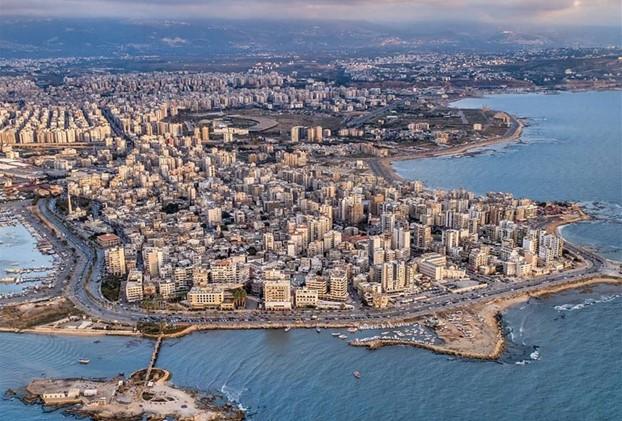
After the blast in Beirut in August 2020, Lebanon’s second port city - Tripoli - quickly took over the capital’s port functions. Tripoli’s economy and social circumstances, however, are volatile. As an architect with a master in City Resilience Design and Management, Riwa Abdel Khalek wonders whether this paradoxical economic opportunity can lead to structural benefits for the port city of Tripoli in the long run, despite the current political turmoil rippling across the country.
The Port of Catania: Livability between Containers and Culture
20 Oct 2021
Maria Racioppi
Catania, the second city of the island Sicily in Italy, is located in the center of the Mediterranean basin, right between the Suez Canal and Gibraltar, and between European and African ports. It is essentially a multi-purpose, intermodal merchant port due to the adjacent motorway junctions, and rail and airport services. Because of these characteristics, the port of Catania grew over the last decade, obtaining a decisive role in the development of national, European and international maritime traffic. The territory of the port belongs to different administrative regimes, and because the Port Authority depends on the national Ministry of Infrastructure and Transport, port and city relations are not self-evident. In this blog, I use four aspects of Catania - the city market under the “Archi della Marina”, the port authority building, the railway, and the container area (a part of the city that is completely inaccessible) – to illustrate these difficult relations.
Port of the Hague: safety first
12 Oct 2021
Demet Voûte
In the free online course (Re)Imagining Port Cities: Understanding Space, Society and Culture, learners make a portfolio addressing the spaces, stakeholders, transitions, values, and challenges of a port city territory they choose. We challenged the learners to reflect on their learning in a portfolio and invited them to present their findings in a blog. Over the coming months, we will be posting some of the results. Learner Demet Voute discusses how historical themes could play a role in addressing the challenges The Hague faces today when planning for a sustainable and socially just future.
Time, space and access for an inclusive development of the Merwe-Vierhavens Rotterdam
8 Oct 2021
David ter Avest

For decades, Rotterdam has been transforming its redundant port areas after harbour activities shifted west. At the same time, the increasing attention to social inequality in urban planning worldwide, inclusiveness has become an issue within (former) port developments. David ter Avest, researcher at the Rotterdam University of Applied Sciences, analyzes current developments in Rotterdam and argues that a socially inclusive port city model needs to connect with local city dynamics and add value to the urban surroundings.
Port Everglades: Port without a city?
4 Oct 2021
Barbara Waelkens
In the free online course (Re)Imagining Port Cities: Understanding Space, Society and Culture, learners make a portfolio addressing the spaces, stakeholders, transitions, values, and challenges of a port city territory they choose. We challenged the learners to reflect on their learning in a portfolio and invited them to present their findings in a blog. Over the coming months, we will be posting some of the results. This week, learner Barbara Waelkens wonders how Port Everglades in South Florida can rise to the challenge of climate change.
Blue Paper #9: Water & heritage - reflections from a water manager
29 Sep 2021
Maarten Ouboter
You might associate the word “heritage” with old objects that need to be preserved at high cost. Geohydrochemist and water asset manager Maarten Ouboter (Waterschap Amstel, Gooi en Vecht, the Netherlands) presents a different image. In this blog, he shares his observations on the Dutch water system. He argues that heritage is everywhere, and that it is crucial to understand our current systems, customs and mistakes in order to come up with solutions for the water related challenges that await us.
WHO & UfM Joint Webinar on Environment and Health in Seaport Cities – a report
22 Sep 2021
Stephan Hauser
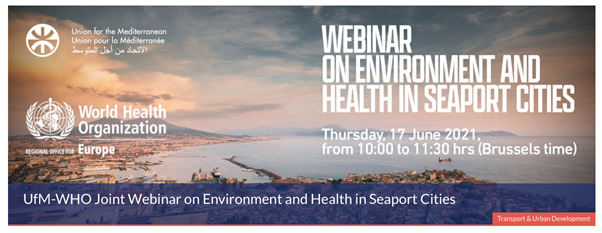
Seaports are vital nodes connecting the hinterlands of countries and continents with the rest of the world, attracting industries and people. This nodal function, however, is incompatible or even in conflict with other uses: port activities affect the entire region of a port city and not just the area administrated by the port. Despite several legal interventions, the side-effects from the port’s activities - such as pollution and risk of accidents – still affect the natural environment of the port and the health of the citizens in the “port-cityscape”. In a webinar, which was organized jointly by the European office of the World Health Organization (WHO) and the Union for the Mediterranean (UfM) on June 17, 2021 and attracted over 100 participants, a group of researchers and practitioners discussed how health can be negotiated in expansion plans of seaport cities.
2021: The Year of the Sea Chantey
16 Sep 2021
James Revell Carr, University of Kentucky
At the start of 2021, an unlikely song became number 1 in the UK hit parade: the sea chantey The Wellerman in a modern day TikTok version. For the PortCityFutures blog, James Revell Carr (Associate Professor of Ethnomusicology and Musicology at the University of Kentucky) reflects on the history of the sea chantey and why these songs on homesickness and rum keep resurfacing in maritime communities and popular culture.
City-port/port-city: The half-cities of Brussels and the production of urban space
12 Sep 2021
Loukia Batsi

In the free online course (Re)Imagining Port Cities: Understanding Space, Society and Culture, which ran between May 26 and July 7, 2021, learners made a portfolio addressing the spaces, stakeholders, transitions, values, and challenges of a port city territory they chose. We challenged the learners to reflect on their learning in a portfolio and invited them to present their findings in a blog. Over the coming months, we will be posting some of the results. This week, learner Loukia Batsi writes about a lesser known port: the port of Brussels and its recent waterfront regeneration.
A 100% Circular Port in 2050?
2 Sep 2021
Verena Balz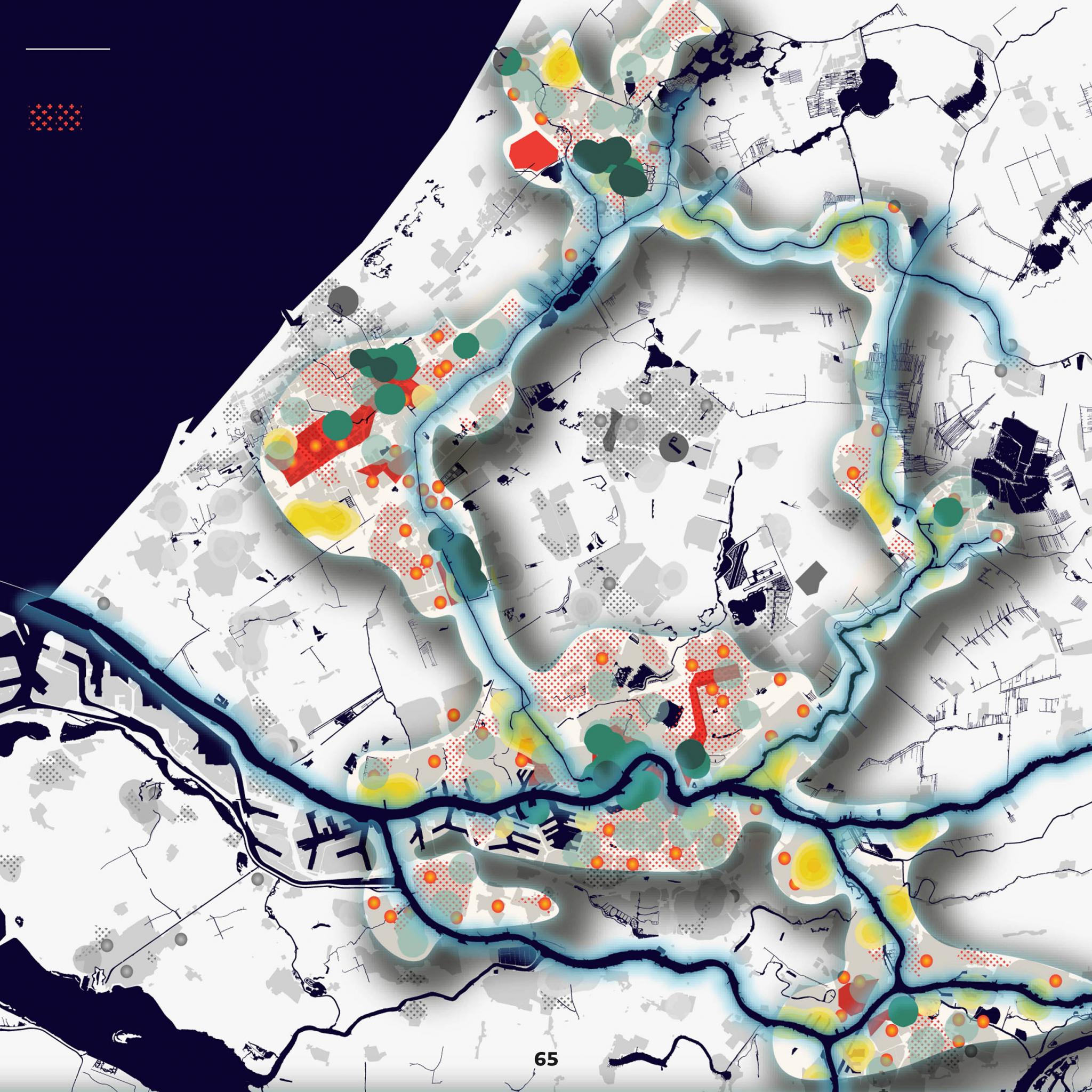
The port of Rotterdam is a major hub in global maritime exchange, a key entrance gate to the European Union, and a strong contributor to the prosperity of the Netherlands. The port’s economic performance comes with high costs for its surrounding regions though: the industrial complex causes grave negative environmental externalities, such as the pollution of air, water and land. In order to reduce and mitigate these unintended effects, the Port of Rotterdam seeks for sustainable development. As part of its efforts, it promotes the transition towards a circular economy. In the Research & Design studio Spatial Strategies for the Global Metropolis at TU Delft we have explored the immense challenges that this transition poses, by means of spatial analysis and design. In this blog we – students and teachers in the studio – proudly present the results of our recent work in an online exhibition.
Blue Paper #8: Valuing Water in a governance ecosystem perspective
22 Jul 2021
Eric Berkers
Water heritage connects us with past challenges: it shows us how previous generations solved water related problems. It is the outcome of historic decision-making processes. By studying the heritage, we see the challenges, the agenda setting, the stakeholders interests, negotiations, underlying values, visions and believes from earlier times. Water heritage also connects us with today’s challenges. Choices made in the past still have their effects: there are path dependencies and lock-ins. On the other hand, former solutions can inspire engineers and policy makers. Dutch historians have studied historic decision-making processes in water management as part of contextual socio-technical research. Eric Berkers, researcher at the Foundation for the History of Technology (SHT) briefly presents a global periodization that this research has yielded so far. Finally, he argues that the perspective of the governance ecosystem can refine this picture and provide new insights.
Blue Paper #7: “Riverhood” and the politics of (mis)recognizing local water cultures and water rights systems
14 Jul 2021
Rutgerd Boelens
Understanding the world’s diverse water worldviews and cultures - in the past and the present - is essential to value the conflicts and solutions that exist within water management. Rutgerd Boelens, professor of Water Governance and Social Justice at Wageningen University and professor of the Political Ecology of Water in Latin America at the University of Amsterdam, analyses the intricacies of water governance and politics. He argues for new ways to recognize and negotiate the value of local water cultures, and proposes the term “Riverhood” as a way to understand the political, technological and cultural arenas in which water rights and governance frameworks are being shaped in grassroots movents’ everyday practice, in interaction with rivers’ adjacent social and ecological communities.
How will the oil industry be remembered in the post-oil future?
10 Jul 2021
Leyla Sayfutdinov
a
The oil and gas industry currently produce well over half of the energy that is consumed in the world (Ritchie 2020). Yet, the climate crisis and the unfolding energy transition may mean that the dominant position of the oil and gas industry in global energy production is changing. What is the place of oil in this transition? What will become of the industry’s enormous infrastructure? How will the oil industry be remembered in the many local communities which have been shaped by it for generations? These were the central questions of the five-day virtual workshop “A place for oil: memory of oil and place in museums across the world” which Leyla Sayfutdinova organized with the Centre for Energy Ethics at the University of St Andrews.
Blue Paper #6: Sea snot as a visible sign of climate change
6 Jul 2021
Gül Aktürk & Stephan Hauser

Sea snot is spreading over the Sea of Marmara in Turkey. This slimy substance is a symptom of marine pollution, and is threatening life both under and above water. Based on their own observations and the preliminary findings of experts, Gül Aktürk and Stephan Hauser discuss the deeper-lying issues of sea snot in the Sea of Marmara: the failure on all levels of governance to ban pollution on land and in the sea. This blog highlights the urgency and importance of a better management of water resources through better cooperation and coordination of various stakeholders.
Waterfront redevelopment in Alblasserdam
30 Jun 2021
Arie den Boer
The outer harbor of Alblasserdam, a village along the Noord river in West Alblasserwaard, has long been used as a berth for inland shipping. Since 1599 until its demolition in 1997, the outer harbor was connected with a lock to Alblas and Graafstroom to the river Noord. Following the closure of the Van der Giessen-de Noord shipyards at the end of the twentieth century, inland shipping and ship construction have been replaced by pleasure craft and luxury housing and apartments along the dyke. Alblasserdam now has a jetty for passers-by on the way to the windmill complex of the World Heritage site Kinderdijk. This blog discusses the history of waterfront revitalization in Alblasserdam.
Blue Paper #5: Water as a Cause for Celebration
21 Jun 2021
Bart Schultz

All over the world, people celebrate water. In our fifth Blue Paper, Bart Schultz (professor emeritus of UNESCO-IHE Institute for Water Education), writes about his experiences in the town of Dujiangyan, China, which celebrated the 2270th anniversary of its irrigation system. He writes of a transnational exchange of knowledge and mutual admiration, but also sees a lesson in the Dujiangyan celebration for Dutch water managers: don’t forget to celebrate water.
Adaptive Strategies for the development of the Port of Beirut and its neighborhood: The role of academic studios
16 Jun 2021
Nadia Alaily-Mattar and John Hanna
In the aftermath of the devastating explosion in Beirut in August, 2020, many ideas for reconstruction surfaced in the media. These ideas, however, often hinged on old visions on the city and did not always have the best interests of the people living near the port in mind. In an interuniversity design studio project, master students of architecture at TU Delft proposed new visions. They are now on display in the virtual Adaptive Strategies Exhibition. In this blog, teachers Nadia Alaily-Mattar and John Hanna recount the importance of academic visions on planning in general, and on the reconstruction of the port city area in Beirut in particular.
Maritime Cartography and Commerce in Early Modern Europe
11 Jun 2021
Jason Nguyen
The mapping of the seas has long been a preoccupation of navigators, scholars, politicians, and business executives. The early modern era, which roughly coincided with the so-called Age of Sail, witnessed the flourishing of European cartography as well the spread of trade and empire across the world. The importation of spices, sugar, coffee, furs, and other popular commodities incited the desire for all things global, including commercially produced cartographic goods. Maps, atlases, and globes bolstered consumer interest in geography, globalism, and sea travel by visualising the maritime networks that fuelled economic prosperity at home. By looking closely at these objects, one also discerns period presumptions about faraway lands and seas as well as the troubling activities that adjoined marine navigation and trade, including European imperial expansion and human trafficking.
Histories in the Mediterranean – AGORA Webinar Talks about Mediterranean Ports
7 Jun 2021
John Hanna & Martin Valinger Sluga

What do we learn about port cities when the Mediterranean Sea is the point of reference? The Agora Webinar Talks about Mediterranean Ports, held on 24th of April 2021, aimed to establish a dialogue for engaging with “histories in the Mediterranean”. The Agora research platform of the German University of Cairo organized this webinar as part of activities related to the Union for the Mediterranean (UFM) Action Plan, to widen the focus of Mediterranean studies to include economic, social, and spatial changes in different cities along the coasts of the Mediterranean Sea. In this blog, John Hanna and Martin Valinger report on this event, which brought together a varied group of scholars in the fields of architecture and urban planning with a focus on Mediterranean port cities.
Blue Paper #4: World Views and Water Management
31 May 2021
Frans Wijsen
Whereas water is central to most religions, the treatment of water is often far from holy. With case studies from the Netherlands and Indonesia, Frans Wijsen (professor Empirical and Practical Religious Studies at Radboud University Nijmegen) shares his insight into the intricate link between water and religion. As it turns out, religion can be an obstacle to, but also a source of, environment-friendly practices.
Blue Paper #3: Valuing water related cultural heritage
25 May 2021
Henk van Schaik & Sir Diederik Six
For thousands of years, people have been managing water resources: to provide water for domestic use, agriculture and nature, for transportation of goods, to generate power, and to protect societies against the perils of floods. Yet, it seems that contemporary water managers insufficiently recognize the values of these thousands of years’ worth of experience. Especially when engaging with future water management challenges, they hardly consider historical knowledge and memory to be a serious resource. For some years now, Sir Diederik Six (Honorary Vice President of the ISC) and Henk van Schaik (Vice President of ICOMOS International Scientific Committee on Water and Heritage) are making a case to re-enter historical water values, tangible and intangible, into present day debates and policies. In this blog, they recount the beginning of the Water and Heritage initiative of ICOMOS Netherlands, outlines the logical framework for the thematic scope for water and heritage, and present the objectives for the interdisciplinary dialogue “Valuing water related cultural heritage” to be held on 5 October 2021.
Eurovision in Rotterdam: Ahoy & Eurovision as Carriers of Identity
18 May 2021
Hilde Sennema and Paul van de Laar
This year, the Eurovision song contest takes place in the port city of Rotterdam. Hundreds of millions of viewers - in Europe and around the globe - will tune in to watch the event, which is broadcast from Rotterdam’s multifunctional event center Rotterdam Ahoy. Besides the distinctive maritime name - Ahoy is an international sailor’s greeting - the origin of this hall is well connected to Rotterdam's past and identity as a port city. It illustrates a government culture in which elites believed they were able to shape Rotterdam’s future. The original Ahoy’ was a manifestation full of optimism, meant to show the world that Rotterdam was fit for a new future after the destruction of the Second World War. Rotterdam’s eagerness to organize the Eurovision Song Contest had similar roots: the festival promotes Rotterdam's image as the coolest city in Europe. Yet, the benefits for citizens are doubtful. While Ahoy is counting down to the largest event it has ever organized, Hilde Sennema and Paul van de Laar and recount its multifaceted history.
When Power Flows into the Sea: the Aftermath of the “3.11” Nuclear Disaster
11 May 2021
Andrew Littlejohn and Carola Hein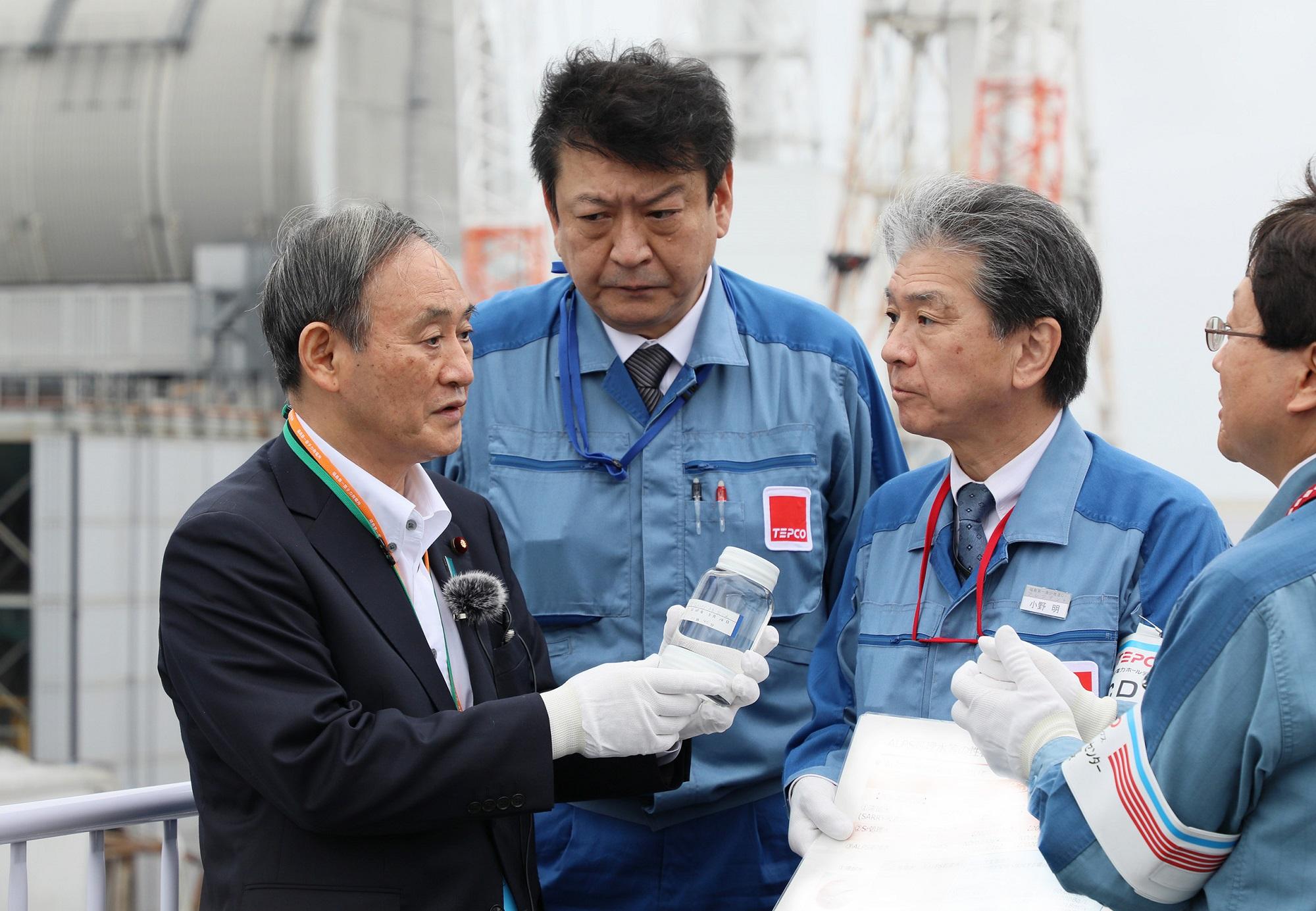
Ten years ago, three nuclear reactors run by Tokyo Electric Power Company (TEPCO) melted down after a tsunami struck Japan’s northeastern coastline on March 11, 2011 (known, today, as “3.11”). Since the disaster, TEPCO has been continuously pumping water into the reactors to cool their melted fuel and prevent further reactions. They collect and store this water in large steel tanks on-site whose number now exceeds 1000 (Normile 2021). On April 13, 2021, the government of Japan announced it had approved the gradual release of 1.25 million tons of treated water from these tanks into the ocean near the plants. Andrew Littlejohn and Carola Hein assess the culture and policies that led to this decision, but also the protest of the people from Fukushima to whom the sea is their livelihood.
Blue Paper #2: Re-considering the Rhine mouth as a smart hydraulic system
3 May 2021
Han Meyer
Next year, 2022, will be the 150th anniversary of the New Waterway. This artificial access from the sea to the port of Rotterdam was put in use in 1872 and led to explosive economic and urban developments in the Rotterdam region. In this Blue Paper, Han Meyer argues that after these 150 years, it is time to fundamentally reconsider policies regarding the New Waterway. Instead of making the natural environment dependent from economic growth, economic development should become dependent on the possibilities delivered by a sustainable natural system. The project ‘The Rhine Mouth as an Estuary’, a co-operation by Meyer, ARK Natuurontwikkeling and the World Wildlife Fund, explores such a radical reversal for the New Waterway.
Virtual Roundtable “Beirut Urban Declaration: Which Future for Beirut Port?”
26 Apr 2021
John Hanna
Natural and man-made disasters usually come with a very high cost of lost lives, physical assets and heritage. At the same time, historically, disasters have often brought opportunities of change and new beginnings in many urban centres (Vale & Campanella, 2005). In this spirit, various state and non-state stakeholders in Lebanon have organized the Beirut Urban Declaration seminar from 12-14 March 2021, to create a “positive dynamic” for the reconstruction of the city after the devastating blast in August of 2020. Participants from Beirut and the world discussed various issues in this virtual seminar including mobility, housing, heritage and port-city relationships.
Shanghai’s new waterfront: economic engine or inclusive public space?
19 Apr 2021
Harry den Hartog
Since the beginning of the 21st century, Shanghai has started to relocate its ports far outside the urban core to accommodate the expected massive urban growth and to allow the new ports to further develop. This created an opportunity for urban regeneration of the formerly inaccessible and polluted waterfronts of the Huangpu River, a manmade tributary of the Yangtze and the central waterway of Shanghai. In this blog, urban designer Harry den Hartog assesses how Shanghai could execute this extremely fast regeneration, and identifies the downsides of a waterfront that is especially useful for taking selfies.
Blue Papers #1: The Dutch Water Miracle
12 Apr 2021
Hilde Sennema
Up until the 1960s, more than 750,000 houses in the Netherlands were built on wooden piles. With over 30.000 piles, the palace on Amsterdam’s Dam square is an impressive example of this type of engineering. As long as the piles stay under water, they retain their strength. If water levels fluctuate, however, bad things can happen. Mold or bacteria can damage the piles, and may cause our homes to sag. Water, therefore, is literally at the base of our existence.
A waterfront regeneration project for the Port of Odessa
6 Apr 2021
Ugo Poletti (Editor-in-Chief of The Odessa Journal)
The sea port of Odessa is one of the youngest among European ports. Odessa was founded in 1794 with the purpose to create a commercial port for Russian Empire, which had just conquered the Northern shores of the Black Sea from the Ottoman Empire and had still no ports. The initiator of this endeavour was a Russian officer in the army of Catherine the Great named José de Ribas. De Ribas was a nobleman from Naples and was the first to understand the need of a port for the Empire. He chose the harbour of Odessa. The port developed very quickly thanks to the arrival of Italians, Greeks and Jews, who became the commercial spine of Odessa. The strategic drive of economic development was the status of Porto Franco (tax free zone), which turned the city into the fastest growing and most innovative of the Russian Empire.
Port City Discourse: A New Vocabulary for Research and Action
31 Mar 2021
Beatrice Moretti
Over the last decades, research in the field of port cities has seen a progressive divergence in its literature of reference. This change, a breakup into different disciplinary approaches, has contributed to increasingly blurring the concept of port city itself. With it, the set of expressions with which scholars, politicians and citizens refer to the port city has multiplied. Port city interactions have been evolving since ancient times and creating diverse port city personalities.
Shady Heritage: Root or remedy to social polarization in port cities?
22 Mar 2021
Saskia Tideman
The stories we tell about past events are unavoidably biased. Political or ideological agendas drive the selection process determining which stories are immortalised in history books and archives, and which are disregarded. This also goes for heritagisation – which is the process of designating, preserving and curating heritage buildings – as it creates a hierarchy within the built environment of historically ‘important’ buildings versus ‘insignificant’ ones. This heritage-driven hierarchy has far-reaching consequences. On the one hand, it freezes buildings that support the hegemonic history in both time and place, while on the other hand, it leaves out sites whose heritage value is contested. This increases the perceived importance of a chosen past and simultaneously fuels the loss of non-hegemonic memories that cannot endure the test of time without ‘built evidence’.
EUKN webinar “Port Cities and Mega-Trends: Glocal Approaches to Sustainable Transitions”
15 Mar 2021
Asma Mehan
The Covid-19 crisis raises questions of resilience, sustainable transitions and global trade in the wake of a pandemic. Port cities require new scenarios to deal with these questions, and over the past year several online initiatives were held to discuss this challenge. So does the European Urban Knowledge Network (EUKN) ‘Thinking Beyond the Crisis’ series, which explores the urban impacts of and responses to the coronavirus outbreak in EUKN member countries. The online webinar “Port cities and Mega-Trends: Glocal Approaches to Sustainable Transitions,” - held on 26 January 2021 and organised with the French National Agency for Territorial Cohesion (ANCT) and the port city of Le Havre - offered a platform to reflect on the global impact and local effects of mega-trends on port cities, including the recent, far-reaching impacts of Covid-19. The event specifically explored the strategies and experiences of the ports of Le Havre (France), Incheon (South Korea), Rotterdam (Netherlands) and Hamburg (Germany).
“Women and Children first!” Or: Where are the women in the maritime world?
8 Mar 2021
Carola Hein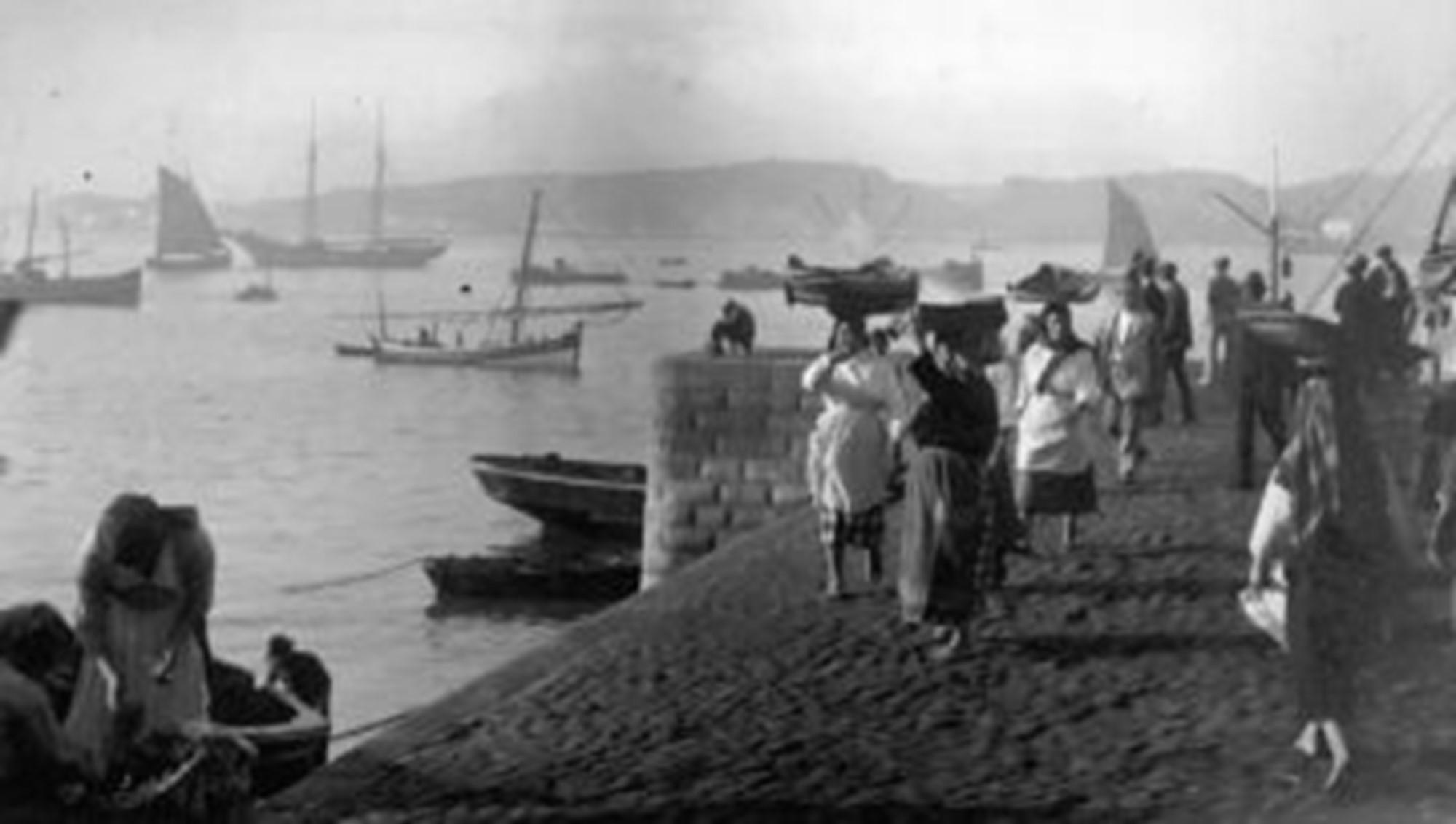
On first sight it seems that women are omnipresent and dominant in the maritime world: The Little Mermaid, as described by the Danish author Hans Christian Andersen, is a beloved fairytale. Sirens, beautiful and dangerous, have lured sailors – so the story goes – to their death for centuries. Female figureheads, often lightly clad, long served as ornamentation at the prow of the ship, and female names feature proudly on the side of ships, referencing goddesses and later mortal women. The Statue of Liberty greets people arriving in New York. Yet, when we look at the maritime practices and port cities through history, we see a largely male world. The seas have been controlled by men for centuries: traders were male, shipowners were male, captains were male, crews were male, and port workers were male. Having women on board was considered a bad omen, as they could be a distraction to the crew working on the ship.
Port Cities: Clusters of Risks, Examples for Anticipation?
4 Mar 2021
Stephan Hauser
The explosion in the port of Beirut in 2020 showed that ports are clusters of risks, and that accidents in port areas can have disastrous effects on close-by residential areas or historic city centers. Such disasters are not new, and cities and nations have had time to establish special safety regulations and prevent such disasters. Because authorities implemented these rules in reaction to incidents rather than planning to prevent and enforcing existing rules, however, more disasters ensued. The evolution of industrial techniques and scales often overran the ability of law-makers to adapt rules and anticipate to industrial innovations.
Spiritism as the flagship of Modernity: Port cities and uncanny communications
22 Feb 2021
Judit Vidiella-Pagès, ERAM College, University of Girona
For over a century (ca. 1850 to 1945) Spiritism was a popular field of entertainment, and port cities had an important role in the spread of spiritist ideas. While many studies and accounts of Spiritism characterise it as a cultural interpretation of the period’s rapid development of communication technologies – telepathy as a simple imitation, or rapping communication in the case of typewriting - these studies neglect how occult practices themselves contributed to new scientific, communicational, and industrial systems that where emerging in that moment (Noakes, 2016). By using the theoretical framework of Geoghegan (2016), in this blog I analyse two examples of how Spiritists built their proper networks of communication and ‘uncanny infrastructures’ through port cities: Bremerhaven and Barcelona.
Contested port cities: a global geography of community conflicts
17 Feb 2021
Francesca Savoldi

At the time of writing, several ongoing civic protests are paralyzing projects of port expansion. In Piraeus, Greece, citizens are contesting the complete privatisation and acquisition by COSCO, the consequent encroachment on urban areas, related environmental impacts and worsening labour conditions. In Sri Lanka, fishermen and other citizens are protesting against the Colombo Port City project, which counts with the expansion of the port and creation of a new financial district on land reclaimed from the sea. This is entered in conflict with local coastal communities (both urban and fishermen communities), which are experiencing displacement and dispossession. In Valencia, Spain, citizens have been fighting the port’s plan of logistic expansion on a territory of particular ecological use-value for local communities, causing houses demolitions and triggering other socio-spatial conflicts. These are just some of the on-going citizen contestations to port expansion, making apparent the threats felt by ports with which communities had previously coexisted.
PortCityFutures in Rotterdam: Conversations on the Waterfront
10 Feb 2021
Sabine Luning, Carola Hein, Paul van de Laar
How to maintain the identity of a port city in transition, and at the same time do justice to its socio-cultural heritage and diversities? We decided to film our ongoing conversations at different sites that are emblematic for historical developments and characteristics of the portcityscape of Rotterdam. The non-scripted conversations, which were edited into 5 small films, were taking place on the basis of a loosely defined division of labour: the anthropologist, Sabine Luning from Leiden University, would ask questions to Paul van de Laar, Chair in Urban History of Rotterdam at Erasmus University, and Carola Hein, Chair of the History of Architecture and Urban Planning at TU Delft and expert in the longterm development of port city regions, including the impact of petroleum on port city development.
Hull’s fishing heritage and the clashing mindsets of 21st century port city identity
1 Feb 2021
Saskia Tideman
As in many port-cities, the history of Hull, a medium-sized port-city in East Riding Yorkshire, England, is that of an endless struggle to keep up with industrial ambitions which came to a halt in the mid 1970s. Containerisation and roll-on-roll-off facilities made half of Hull’s docking facilities obsolete. At the turn of the century, Hull needed a new identity as a partially post-industrial port-city, and its disused docks needed a new purpose. Given the built environment signposts the societal values of its time (Mazumdar and Mazumdar, 1994), the study of Hull’s reuse of its redundant docks provides insight into its maritime industrial past, and to what extent it was instrumentalised in the creation of a 21st-century port-city urban identity.
Understanding how words matter for port heritage: towards a network perspective
26 Jan 2021
Tianchen Dai, Carola Hein, Dan Baciu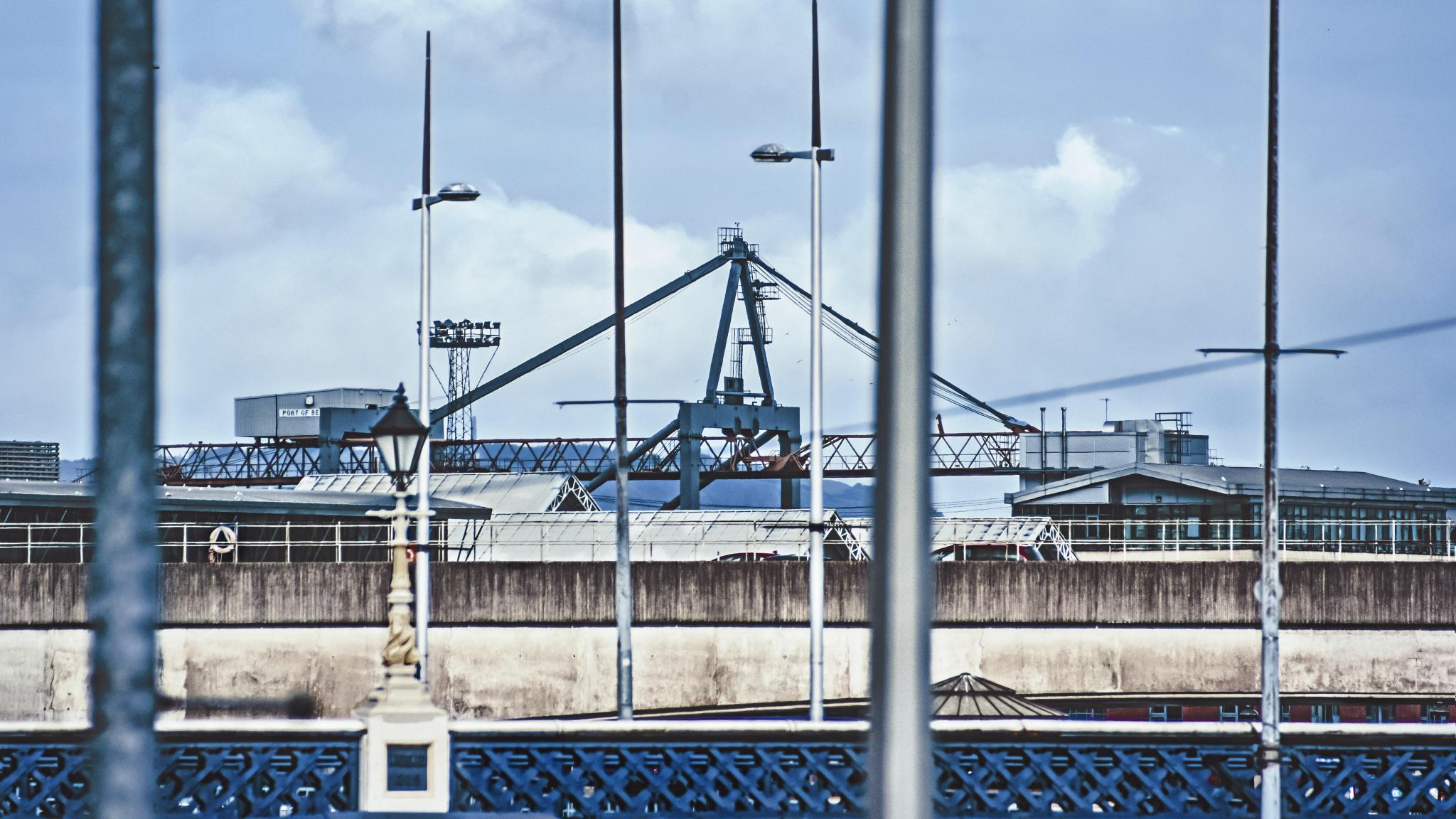
“Port heritage” is a term that emerged in the English-language literature in the 1960s. According to the Google Book NGram Viewer, its use peaked around 2010. At that time, the global popularity of waterfront renewal projects was shining a light on historic port structures—cranes, warehouses, and other industrial buildings—often as part of cultural tourism (Grindlay, Bestue-Cardiel, Rodriguez-Rojas, & Molero-Melgarejo, 2018; Pagés Sánchez & Daamen, 2020) Modern ports were reluctant to maintain these historic structures, but waterfront renewal projects and the growth of the cruise industry made this port heritage especially attractive and worth retaining for some stakeholders. Rather than a burden, port heritage became an opportunity for port development. Port city associations, such as the Worldwide Network of Port Cities (AIVP) now emphasize the role of port heritage in (re-)connecting citizens to the port.
COVID-19: it is the logistics, stupid!
21 Jan 2021
Paul van de Laar
Within Europe, the Netherlands is lagging behind in enrolling vaccination against Covid-19. This does not mean that the Dutch neglect the seriousness of the epidemic. Almost every evening, Dutch television viewers can witness how their country is struggling with the disease, watching virologists, epidemiologists, and even philosophers, psychologists, ethicists or economist interpret the crisis and plausible strategies to solve it. What strikes me, however, is the absence of logistics experts and professionals. From the start of the crisis, it was clear that the success of beating the virus depends on the efficiency of managing the logistics of tests. Especially now the vaccine must be distributed and lives are at stake, the key issue is - to paraphrase Bill Clinton - the logistics, stupid! And where do you find experts on this issue? Exactly: in the mainport of Rotterdam.
Port city revitalisation in sister-cities Rotterdam and Shanghai
19 Jan 2021
Maurice Jansen and Yueyue Zhang
In 2019, Rotterdam and Shanghai celebrated 40 years of sister city relationships. Both cities have drastically changed during this time: the scaling up of industrial activities led to large scale port expansions, but also to the emergence of vast areas of disused waterfronts. City and port authorities have played a significant role in steering the redevelopment of these disused areas into new directions and developing new futures for citizens. These redevelopments, however, raise new questions regarding the transition of old port spaces into new uses and purposes, whether these developments are more “pro-port” or more “pro-city”, meaning whether they serve the interests of the port or those of the city. This distinction depends on the type of business functions that generate most value and thus should re-occupy the brownfield ports on the port city interface: large scale industry (e.g. biochemicals, scaling up hydrogen production and use), light industry (e.g. circular designs, 3D manufacturing), a maker’s movement, an urban service sector, urban housing or even tourism.
Increasing the international competitiveness of ports and cities by leveraging human resources
12 Jan 2021
Renée Rotmans (Port of Rotterdam Authority) 
The Rotterdam port region is Europe’s largest port and industrial complex. As a facilitator for import and export, the Rotterdam port region creates significant economic activity for the local and regional economies (Hollen et al., 2015). Ports also provide essential support for commercial activities in the hinterland, because ports are able to make crucial connections between land and sea transport (Ducruet et al., 2010; Ferrari et al., 2010). The Rotterdam port region is an important European entry gate for trade and a hotspot for energy, industry, innovation and digitalization (Port of Rotterdam Authority, 2019). It is currently going through two transitions related to renewable energy sources and digitalization. In view of that, there is a compelling need to invest in social innovation and underlying strategic investments in human resources (Birkinshaw et al., 2008; Damanpour et al., 2010).
Protecting Cultural Heritage as a Resource for Sustainable Development of Port Cities (AIVP webinar)
5 Jan 2021
Hilde Sennema

Port city functions and cultural maritime heritage are often at odds. Culture is a difficult and sometimes contested concept in the scholarly environment, and functions of maritime identity in port cities, are often not recognized as culture. To discuss this issue, the international port city organization AIVP (Association Internationale Villes Ports) organized a webinar last October where representatives of UNESCO and the port authorities of Dubrovnik and Dublin were asked to reflect on this issue. Port culture and identity are part of the AIVP agenda for port cities in 2030, which proposes to promote and capitalise on “the specific culture and identity of port cities and allowing residents to develop a sense of pride and flours as a part of city port community of interest”. This blog reports on this webinar, and discusses why the maritime functions of trade, shipping and water are still overlooked when we discuss the culture of a port city.
Post-oil issues in the port city of Skikda, Algeria
21 Dec 2020
Amira Ghennai & Said Madani (LaboratoirePuvit, Setif 1 University, Algeria)
Despite its strategic importance as the second port of Algeria, the port of Skikda is still little known internationally. In this blog, we try to present the history of Skikda and its port, and to discuss its future in the light of post-oil issues. Skikda (also known as ancient Russicada) is a city located in northeastern Algeria, on the southern shore of the Mediterranean, which gives testimony to the long history of Mediterranean civilization. The city is characterized by a fascinating natural landscape, dating back to prehistoric times, which makes it a coastal town with significant tourist potential. It is also, however, dominated by the oil landscape. These contradictory elements forge the general landscape of Skikda.
‘Tis the season: The Magic of Port Cities
17 Dec 2020
Carola Hein

To address challenges of climate change and sea-level rise that will particularly affect port cities and regions, PortCityFutures aims to inform diverse groups of people and bring stakeholders together in the process. The production of the short open access film The Magic of Port Cities is a case in point: funded with a NWO KIEM subsidy and sponsored by a diverse group of stakeholders, the animated film takes a playful approach to the understanding of port city regions, and emphasises the need for change that will make possible a sustainable future. We need novel creative approaches to engage non-professional audiences in ongoing transitions. The film informs the general public of both the particular character of port cities, and of the challenges and opportunities inherent in their location at the edge of sea and land. It makes viewers more aware of future urgencies and helps them define the role they may want to play themselves.
Port City Heritage: Contested Pasts, Inclusive Futures?
7 Dec 2020
Asma Mehan, Hilde Sennema & Saskia Tideman
As hubs of global exchange, port cities are host to inconvenient and contested pasts. Many of these pasts have yet to be fully recognized. In the wake of demonstrations against racial injustices this summer, the PortCityFutures team discussed how our own research practices relate to systemic inequalities within port cities. It was concluded that we need to better understand how these contested and complex pasts, legacies of diversity and segregation, and colonial pasts impact port cities today.
Port cities, architecture and the return to water
30 Nov 2020
Nadia Alaily-Mattar Ever since the 19th century, ports have been associated with industrial activity. Ports were dirty, ugly and carried a bit of stench for those with a sensitive nose, and therefore were places that city residents would rather shun. The urban waterfronts were mostly occupied by the port and its functions. This led to a difficult relationship of port cities to their waterfronts, both from a planning perspective and from the quotidian experience of citizens. As cities turned their backs to their ports, they frequently turned their backs to their waterfronts as well. When waterfronts were abandoned in the process of containerization, a window of opportunity opened for port cities to reconnect to the water. In this process, architecture is used to signpost the return to the water. This article shows that using waterfront architecture as a signpost is not new, and indicates the importance of considering the interests such signposting serves.
Ever since the 19th century, ports have been associated with industrial activity. Ports were dirty, ugly and carried a bit of stench for those with a sensitive nose, and therefore were places that city residents would rather shun. The urban waterfronts were mostly occupied by the port and its functions. This led to a difficult relationship of port cities to their waterfronts, both from a planning perspective and from the quotidian experience of citizens. As cities turned their backs to their ports, they frequently turned their backs to their waterfronts as well. When waterfronts were abandoned in the process of containerization, a window of opportunity opened for port cities to reconnect to the water. In this process, architecture is used to signpost the return to the water. This article shows that using waterfront architecture as a signpost is not new, and indicates the importance of considering the interests such signposting serves.
Deep Maps and Time Machines: Exciting Times for Collaborative Research on Port Cities
24 Nov 2020
Vincent Baptist
Is science becoming more like science fiction? One might easily think so when hearing about a novel research network called Time Machine Europe, or other interdisciplinary collaborations on practices of ‘deep mapping’, for instance. Behind these imaginative keywords, however, are research endeavors that firmly rely on a thorough understanding of the past in order to take on the future. This deceptively simple, yet fundamental stance also shines through many blog contributions from the PortCityFutures team. We have to imagine, design, plan and assess the future of port cities by taking stock of their complex maritime urban histories.
Cultural Anthropology, Infrastructures and Envisioning Futures
19 Nov 2020
Sabine Luning, Andrew Littlejohn, Carola Hein
This blog was originally posted on the leidenantropologyblog of CADS.
Port City Regions are global hubs which invite anthropologists, planners, geographers, and architects to rethink disciplinary foundations, interdisciplinary collaborations and future-making, as Sabine Luning, Andrew Littlejohn, and Carola Hein explain.
Heritage Words: Exploring Port-city Terms
16 Nov 2020
Carola Hein, Tianchen Dai, Dan Baciu
Words construct realities. Through words, people communicate sensory experiences, feelings, beliefs, and theories. The way in which we conceptualize things shapes the way we live and build, as well as how we conceive the past. The symbolic system of language facilitates communication between oneself and the outside world, aiding with the interpreting and sharing of experiences. Moreover, it acts as a tool for the mental manipulation of information (Malt & Wolff, 2010), and for the understanding or shaping of in the past, present and future. The systematic analysis of words can help understand the impact of specific political, economic, social or cultural systems, such as port cities.
Mapping Maritime Mindsets: Deep Maps from Inspiration to Feasibility
9 Nov 2020
Thomas van den Brink
 Port cities have a certain ambiance, a culture that makes them different from other cities. This is embedded in tangible elements like ships, quays, waterfronts and warehouses, as well as in immaterial elements like language, myths, rituals, images, texts, sounds, and architectural form. Capturing this multiplicity, however, is difficult.
Port cities have a certain ambiance, a culture that makes them different from other cities. This is embedded in tangible elements like ships, quays, waterfronts and warehouses, as well as in immaterial elements like language, myths, rituals, images, texts, sounds, and architectural form. Capturing this multiplicity, however, is difficult.
Port Cities and Crisis: Reflections on What COVID-19 Revealed
2 Nov 2020
By Josef Konvitz
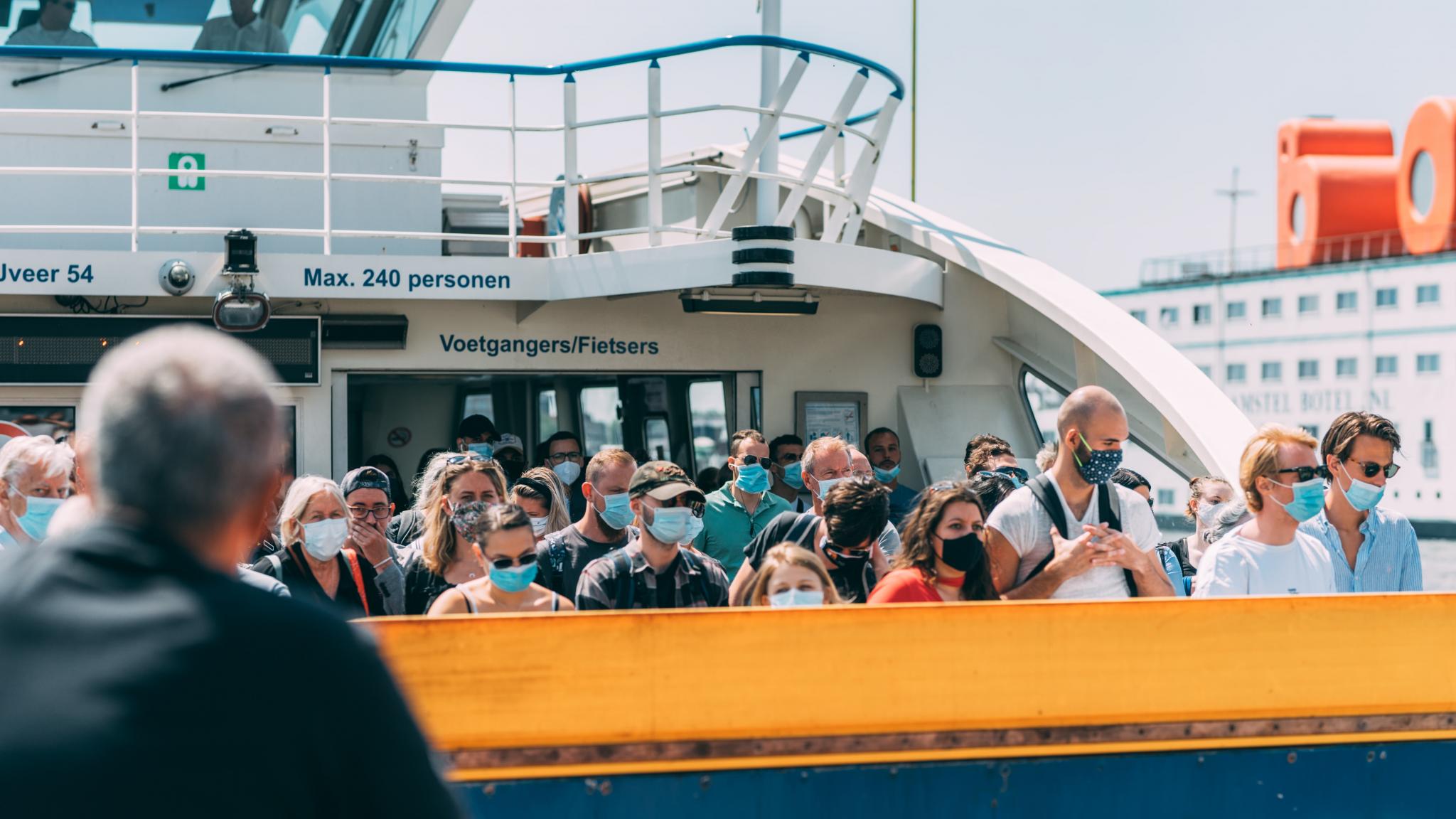 It is commonplace to say that crises reveal latent strengths and weaknesses. When the COVID-19 epidemic of 2020 hit, economies had barely returned to their pre-2008 level, meaning a net loss of several years of growth. Shipping is responsible for most of the world’s trade, yet the growth of world trade, usually a leading indicator, was already lagging behind economic growth. Since circa 1990, probably due to climate change, natural catastrophes in coastal cities and regions have increased in cost and intensity. The worst is yet to come: rising sea levels affect nearly 1 billion people. We like to say that the weather is unpredictable, but now it seems as if forecasting the planet’s future on the basis of global warming is less risky than predicting when international trade and travel will return to 2019 levels. Port cities face two different time-lines: one short-term, economic, the other medium-to-long term, environmental. Win-win solutions good for both will be rare.
It is commonplace to say that crises reveal latent strengths and weaknesses. When the COVID-19 epidemic of 2020 hit, economies had barely returned to their pre-2008 level, meaning a net loss of several years of growth. Shipping is responsible for most of the world’s trade, yet the growth of world trade, usually a leading indicator, was already lagging behind economic growth. Since circa 1990, probably due to climate change, natural catastrophes in coastal cities and regions have increased in cost and intensity. The worst is yet to come: rising sea levels affect nearly 1 billion people. We like to say that the weather is unpredictable, but now it seems as if forecasting the planet’s future on the basis of global warming is less risky than predicting when international trade and travel will return to 2019 levels. Port cities face two different time-lines: one short-term, economic, the other medium-to-long term, environmental. Win-win solutions good for both will be rare.
The Role of Port City Images in the Development of Maritime Mental Maps
26 Oct 2020
Winnie Goldsteen
Port cities have been a source of inspiration for painters through time. The dynamic life and diversity within these cities has sparked the imagination of artists and has resulted in a large number of port-related imagery like paintings and photographs. These images often focus on the waterfront where the city and water connect, and on port infrastructures representing maritime practices. Paintings with such a perspective are important pieces in collections of maritime museums worldwide.
Oil in Oil (and Other Art Media): Painting the Petroleum Port
20 Oct 2020
Carola Hein
From the 1850s onward, petroleum took the world by storm. Following industrial drilling in Canada and North America in 1858 and 1859; in the early decades, it was particularly popular as lighting oil. Whereas the oil industry depends on water both for the refining process and for transportation, many early oil companies sited petroleum storage and refineries near rivers and in port cities. Old and new ports - Philadelphia, Rotterdam, Dunkirk, Abadan - offered ideal conditions for storage and refining, and were well located to serve as hubs in the emerging global network of oil. Artists noticed the new structures, and their admiration and curiosity were visible in their artwork. Heads of corporations and public leaders used the depictions for promotion, and perhaps decorated their offices with them.
Why does the History of Port Cities Matter? The case of Fin-de-siècle Salonica
Cosmopolitanism derives from the ancient Greek words for citizen of the world. The concept gained its modern sense during the socio-economical transformations of the nineteenth century. The reason for this resurgence has often been linked to the rise of capitalism, the emergence of global trading, and the idea that all human beings—regardless of their communal affiliation—can be members of a single, global or ‘cosmic’ community. Within this framework, port cities emerged as a site of cultural exchange where people from different parts of the world mixed and influenced one another at a greater pace than ever before.
The COVID-19 pandemic: an opportunity for a European policy within the Mediterranean area?
5 Oct 2020
Pietro Spirito, President of the Port Authority of Mar Tirreno Centrale
The function of ports and port cities has radically changed in the late twentieth and early twenty-first century as maritime business has become more and more global and complex. As Antoine Fremont (2010) has pointed out, carriers that traditionally served the East-West market, circling the globe, added North-South connections in the 1980s. This maritime revolution permitted, together with the lower cost of work in the newly industrialized countries, the process of industry delocalization, therefore reducing the cost of transport and logistics. Containerization, intermodality, and naval gigantism became the major characteristics of the new era. Furthermore, maritime services are provided by companies and assets from across the world, such as ship building (92% in China, Korea and Japan), ownership (32% in Germany, China and Greece), flagging (70% registered in a country different to the country of ownership) and scrapping (94% in Bangladesh, India, Pakistan and China), with crew drawn from countries like Philippines, Indonesia and Ukraine (Wilmsmeier & Monios 2020).
Designing for climate change in port cities: the case of Kirkenes (Norway)
28 Sep 2020
Lukas Höller

Port cities around the world face spatial, cultural, economic and institutional challenges of climate change. Because port and city coexist within the same territory, they need to negotiate visions, values and goals with a wide variety of stakeholders. Despite the increasing number of urgencies, port-city stakeholders continue to plan as before, prioritising economic growth over integrated socio-spatial development. This is a risky strategy, because it increases friction between people, planet and prosperity, and emphasises the institutional separation of port and city. Designers and planners are left to decide: should they approach port city landscapes to generate the maximum amount of capital, or should they facilitate a balance of economic, social, and ecological interactions?
Taking Sustainable Port Development Seriously: Serious Gaming in the Port of Rotterdam
21 Sep 2020
Maurice Jansen

Many ports in the world are pivots of social dilemmas, such as coastal protection versus port expansion, attractive urban housing versus port activities, jobs versus automation, fossil versus renewable energy, and logistics efficiency versus strict border control. Such dilemmas can easily lead to conflicts if not managed well. In a mature port cluster, conflicting interests are usually accommodated by a settlement of differences, which is the outcome of a negotiation process. This approach suggests that the quality of cluster performance is a product of a zero-sum game - the gain for one goes at the expense of the other - or even a negative-sum game, when parties cannot come to an agreement at all. The biggest challenge of the 21st century is the development and implementation of methods that at the same time strengthen the economy and improve the environment, while making optimal use of the available space for port activities. One of these methods is serious gaming, which allows for better understanding of social dilemmas and mechanisms that drive decision making behaviour.
Port City Scenarios During and After Covid-19: The case of Livorno
14 Sep 2020
Barbara Bonciani - Councilor for port and port-city integration at the Municipality of Livorno; external Lecturer in Sociology at the University of Pisa; Research associate Ircres Cnr (National research council)
The Covid-19 crisis has changed the face of many cities as people change their lifestyles, mobility and consumption patterns. In port cities, it has had a serious impact on port and logistic activities. The Covid-19 crisis raises the question of how to manage urban life and socio-economic problems in the wake of a pandemic, and requires new scenarios.
The Color of Protection: Greening Port Cities in an Era of Rising Tides
7 Sep 2020
Andrew Littlejohn Ports, and their neighboring cities, are dense concatenations of infrastructures. Many of these are things enabling other things to move. Ships bear their loads through bays and, when heading inland, canals; at docks, stevedores load the wares onto lorries, which carry them along roads and across bridges; and all the while, pipes channel water, oil, or gas to and from facilities. Indeed, from a certain point of view these ports themselves appear infrastructures. They are nodes through which many things we use must pass on their way from sea to land; the connections established by these flows make such interior areas what they are. However, as noted in our recent call for papers, port cities also host another type of infrastructure. These are things not facilitating flows inland but preventing them, like seawalls, dikes, and other coastal defense structures. The latter aim, as I have written about previously (Littlejohn 2020), to ‘saturate’ space, meaning ensure control by confining all parts and parties to their ‘proper’ places (most notably the sea and rivers, which must be kept separate from the land).
Ports, and their neighboring cities, are dense concatenations of infrastructures. Many of these are things enabling other things to move. Ships bear their loads through bays and, when heading inland, canals; at docks, stevedores load the wares onto lorries, which carry them along roads and across bridges; and all the while, pipes channel water, oil, or gas to and from facilities. Indeed, from a certain point of view these ports themselves appear infrastructures. They are nodes through which many things we use must pass on their way from sea to land; the connections established by these flows make such interior areas what they are. However, as noted in our recent call for papers, port cities also host another type of infrastructure. These are things not facilitating flows inland but preventing them, like seawalls, dikes, and other coastal defense structures. The latter aim, as I have written about previously (Littlejohn 2020), to ‘saturate’ space, meaning ensure control by confining all parts and parties to their ‘proper’ places (most notably the sea and rivers, which must be kept separate from the land).
What’s in a Name? Re-thinking Port Cities as Systems
31 Aug 2020
Hilde Sennema
Within Port City Futures, we use several ways of referencing to the port city. Some definitions are geographical, such as region, cluster or infrastructure, while others are metaphorical or borrowed from other sciences, such as hub, interface or ecosystem. Whereas our multidisciplinary approach enables us to learn from each other’s methods and expertise, these definitions can also get lost in translation and are often cause for discussion. If we look at it as a spatial entity, how do we define its borders? If we look at it as something fluid, how far do we follow flows of money and goods crossing these borders? And to what extent do port city stakeholders share interests that legitimize the port city as an analytical unit?
The Creation of the Central Tyrrhenian Sea Port Authority: A critical juncture for the Naples port city region?
24 Aug 2020
Paolo De Martino and Carola Hein
The reorganization of the Italian port system through the legislative decree n.169/2016 has created port clusters—an institutional reorganization aimed at providing ports with more efficiency for logistics. This development challenges the urban strategies of many cities and municipalities that are part of the larger regions to which these ports belong. The presence of the port in the territory is manifested through the use of infrastructures, construction of logistic centers and industrial sites; in line with their role as nodes in the sea-land continuum. These spatial claims of the port systems challenge the goals and interests of local stakeholders, each of which has its own cultural belief and has independently developed land use claims, spatial patterns and governance arrangements. The port reorganization therefore requires a parallel rethinking of the existing institutional arrangements and spatial structures as well as of the longer-term plans of all actors in the region. It also requires a new conceptualization of the role that space can play in institutional realignment. The case of Naples stands exemplary.
Writing Port Cities
19 Aug 2020
Carola Hein
This blog post was written for the PORTUS online magazine of RETE
In Invisible Cities, Italo Calvino famously imagined Marco Polo describing imaginary cities to Kublai Khan. Reflecting on his home city of Venice, he “put together, piece by piece, the perfect city,” a city that is “discontinuous in space and time” [1]. The image of the contemporary port city similarly emerges from multiple pieces: port authorities promote the port’s efficiency and future potential; local governments advertise the heritage value of historical waterfronts and old portequipment as part of urban sustainability in all its facets; and artists and the general public write up and photograph these places. Collectively, these multiple groups create locality-specific port cultures across time.
Beirut Blast: A port city in crisis
11 Aug 2020
Asma Mehan and Maurice Jansen
On 4th of August 2020, the Lebanese capital and port city, Beirut, was rocked by a massive explosion that has killed hundreds and injured thousands more, ravaging the heart of the city’s nearby downtown business district and neighbouring housing areas, where more than 750,000 people live. The waterfront neighbourhood and a number of dense residential neighbourhoods in the city’s eastern part were essentially flattened. Lebanese Government officials believe that the blast was caused by around 2,700 tonnes of ammonium nitrate stored near the city’s cargo port without proper control for six years.
The role of port cities in building a sustainable shared future: The Union for the Mediterranean Action Plan for Sustainable Urbanisation
10 Aug 2020
Roberto Rocco, Carola Hein
The Mediterranean has long been at the heart of urban and rural development in all of its bordering countries. Sea-based trade and exchange has fuelled the development of numerous cities on the coast, on rivers and in the hinterland. Current challenges, from the climate crisis to migration, have put the Mediterranean again into focus. The COVID-19 crises shines additional light on the need for close collaboration in the fields of spatial and economic development, including port and port-related infrastructures. To provide a framework for sustainable and inclusive urban and regional development for the countries around the Mediterranean is the mission of the Union for the Mediterranean (UfM), an intergovernmental body that brings together all the countries of the European Union and 15 countries from the Southern and Eastern Mediterranean. On 22 May 2017, at the Second Ministerial Conference of the Union for the Mediterranean (UfM) in Cairo, the UfM has enacted the “Union for the Mediterranean Urban Agenda” (UfM, 2017). Since 2018, a team from the Delft University of Technology (Roberto Rocco, Remon Rooij, Carola Hein) has elaborated an Action Plan for Sustainable Urbanisation around the Mediterranean for the UfM.
The Post-Covid Time: A Post-Normal or Pre-Environmental Time?
6 Aug 2020
Stephan Hauser
The European Green Deal, discussed in a previous blog post, offers a wide range of climate policies and measures. However, due to the current pandemic, the European Commission and Parliament have delayed the Green Deal’s adoption. As of July 2020, the main topic preoccupying national leaders is the economic renewal of the European Union and consensus over the economic Recovery Package. These discussions are complex given the timing, the economic situation and the lack of convergence between actors. Moreover, they obscure the legal necessity to act upon existing agreements, from local to supranational levels, to mitigate environmental damage.
Mapping Maritime Mindsets: Mental Maps
28 Jul 2020
Maurice Harteveld
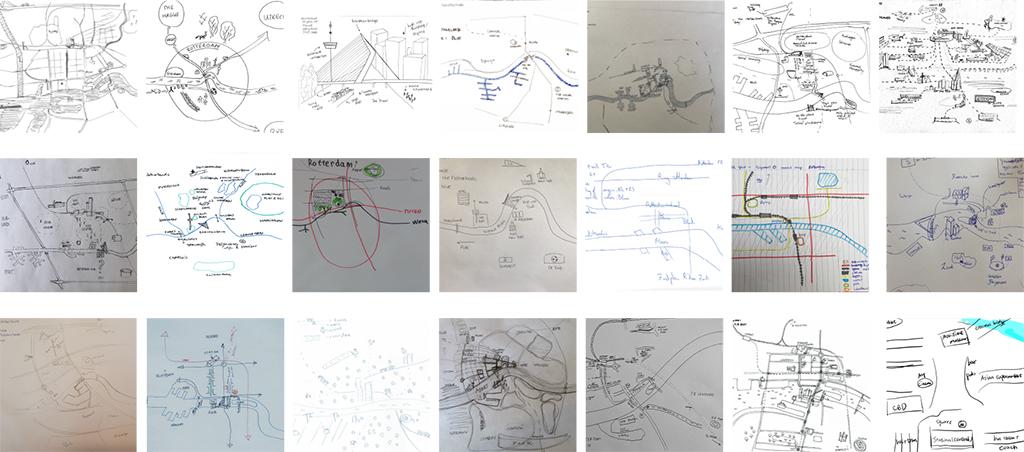
Imagine: You are asked to draw a port city from memory. What would you put on paper? Do you think of harbours? Water, docks, cargo, moving loads, and ships? If your drawing shows these elements, don’t be surprised. Sixty-five graduate students also took on the challenge. In answering: “draw the port city of Rotterdam by mind”, the drawings of the participants (fig.1) displayed exactly the above features. Of course, this makes sense. A port just happens to be a place on the water in which ships shelter and dock to (un)load cargo and/or passengers. A harbour is a sheltered place too, and in its nautical meaning it is a near-synonym for sheltered water, in which ships may dock, especially again for (un)loading. So, all the above linguistic lemmas are there and all these are connected to imaginable objects.
Challenges for city development and port activities after COVID-19: the Case of Montevideo
20 Jul 2020
Fernando Puntigliano, professor of Logistics at the Universidad Católica del Uruguay.
Montevideo is located on the River Plate, the river mouth of the 3440 km long Paraná Paraguay Waterway. The River Plate is the gate to the heart of Brazil, Bolivia, Paraguay and the richest provinces of Argentina. This strategic location of the port of Montevideo is the main reason of the existence of Uruguay as an independent country, according to former President Lacalle Herrera of Uruguay. The territory was an area of dispute, first between Spain and Portugal, and later between Argentina and Brazil. The port was conceived by Spain as a logistic centre for the region. The local commerce was initially meaningless. In 1928, British diplomacy suggested a political solution to the conflict area by creating a new country named Uruguay. Access to the rest of South America remains a key activity today. Imports and exports to and from Uruguay represent still today less than 50% of the port activity.
Mapping Maritime Mindsets: Towards a Shared Methodology
13 Jul 2020
Yvonne van Mil, Vincent Baptist, Thomas van den Brink, Tianchen Dai, Hilde Sennema

The PortCityFutures team aims to study port city ecosystems and the concepts of ‘maritime mindsets, port city cultures and values’ from a variety of disciplinary angles. In our subgroup, consisting of four PhD researchers and one postdoc, we assess various mapping techniques (geo-spatial, socio-cultural and mental mapping) to move towards a shared research methodology. In a blog series under the title ‘Mapping Maritime Mindsets’, we will monitor, document and share our research progress on mapping port city regions, and especially address the theoretical and methodological issues that we face during the process. Moreover, we ask guest writers to reflect on related themes and projects.
The Shifting Values of Port Cities: Towards “what if histories” and “design fiction”?
9 Jul 2020
Carola Hein
What if we had the chance to reboot and redesign our society? Who would have considered it possible that the current pandemic crisis offers exactly that opportunity? Within a matter of weeks, we have experienced a change in lifestyle that seemed impossible as a response to climate change a few months ago. The COVID-19 pandemic is hitting people and businesses hard. This is also true of ports and their surrounding cities. Attempts to protect people from a life-threatening disease have changed the functioning of such port cities around the world. In some, ships continue to deliver much-needed goods. But in others, they have become floating storage or laid up, upsetting the entire maritime system. Meanwhile, streets and public spaces are emptier than usual, with satellite images revealing significant drops in air pollution. While some people are working harder than ever—think of the medical professions—others have lost their jobs and their livelihood or even died.
Port cities as hubs of diversity and inclusivity: The case of Rotterdam
7 Jul 2020
This blog post was written for the Leiden-Delft-Erasmus magazine June 2020
 Port cities are a particular type of territory and are often long-standing examples of resilience, bringing opportunities, wealth, and innovation to their nations and their citizens. They have developed at the crossroads of international trade and commerce and the intersection of sea and land. Flows of people through trade and migration have played a key role in their spatial, social and cultural development. Their strong local identities share legacies of diversity and cosmopolitanism, but also of colonialism and segregation. The Qingjing Mosque in Quanzhou, Fujian speaks of the exchange between Arabia and China along the maritime silk road. Hanseatic cities stand as an example of far-flung networks with districts for foreign traders—think of the German merchants who established Bryggen, the German dock, in Bergen, now a UNESCO world heritage site.
Port cities are a particular type of territory and are often long-standing examples of resilience, bringing opportunities, wealth, and innovation to their nations and their citizens. They have developed at the crossroads of international trade and commerce and the intersection of sea and land. Flows of people through trade and migration have played a key role in their spatial, social and cultural development. Their strong local identities share legacies of diversity and cosmopolitanism, but also of colonialism and segregation. The Qingjing Mosque in Quanzhou, Fujian speaks of the exchange between Arabia and China along the maritime silk road. Hanseatic cities stand as an example of far-flung networks with districts for foreign traders—think of the German merchants who established Bryggen, the German dock, in Bergen, now a UNESCO world heritage site.
A Guggenheim effect for Rotterdam South side?
29 Jun 2020
Maurice Jansen
Rotterdam-Zuid, a district that has grown near and along with the port of Rotterdam on the South side of the River Maas, is lacking behind in terms of economic growth and prosperity compared to the city district on the North bank. In terms of unemployment, income levels, education performance, and value of real estate, Rotterdam-Zuid performs worse on key performance indicators than Rotterdam as a whole and scores lowest compared to Amsterdam, The Hague and Utrecht, the three other major cities in The Netherlands[1]. For years, a national pact of institutional stakeholders have made considerable efforts to improve this urban area and make it more livable and attractive. South is slowly but surely catching up, but arguably as a function of the development of the North (EVR 2020). The river is not just a physical barrier, there are also institutional barriers. What can the port city of Rotterdam do to involve ‘South’ and to realize its ambition for an inclusive and productive city? Does the South need a Guggenheim effect – a major overhaul through large investments in culture, such as done in Bilbao with the Guggenheim Museum – to incentivize larger urban redevelopments?
Disruptions and the effects of covid-19 on city and port plans. Valencia
25 Jun 2020
Prof. Vicent Esteban-Chapapría
Protecting people's lives against the potentially lethal COVID-19 disease has changed patterns of life and working conditions all over the world. Self-isolation, lockdown and numerous restrictions have changed our lives. The situation is new and absolutely exceptional, with keywords being: UNCERTAINTY, RISK and VULNERABILITY, and in that order precisely. This raises the question: the current pandemic different from earlier disruptions? What would make it a major game-changer? It is necessary to know about earlier disruptive situations and to compare them with the current situation.
Researching Historical Entertainment Culture across Port Cities: Why ‘Pleasurescapes’ Matter for ‘PortCityFutures’
22 Jun 2020
Vincent Baptist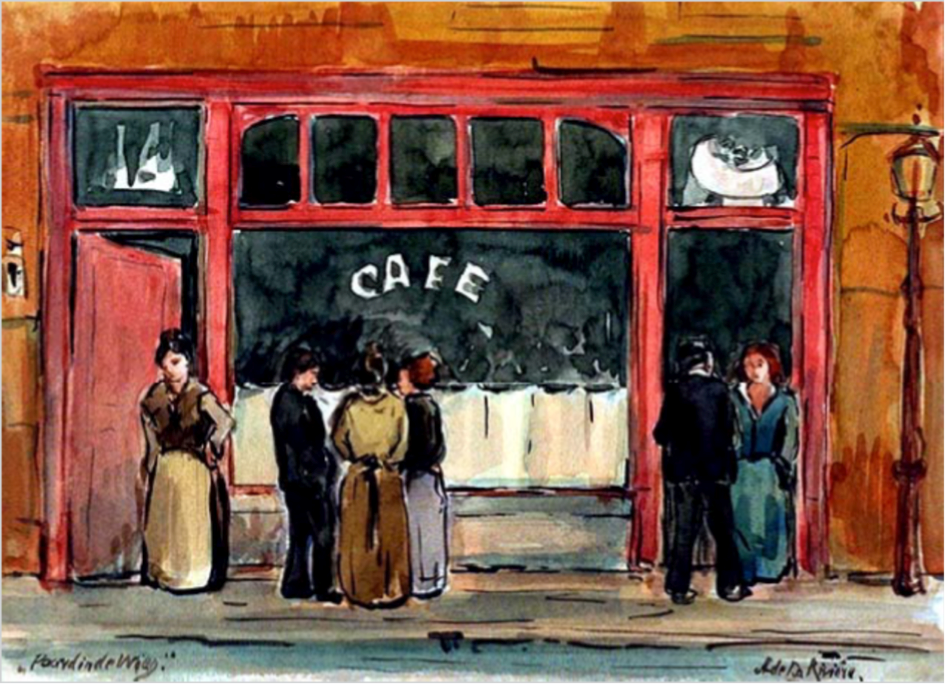
‘Where people have fun, encounter happens. Where encounters take place, change begins. Are pleasurescapes in port cities Europe’s true driving forces after all?’
The tagline of the HERA-funded project ‘Pleasurescapes: Port Cities’ Transnational Forces of Integration’, which looks into entertainment spaces of European port cities throughout recent history, suggests that this research topic has been rather neglected up to now. The ‘Pleasurescapes’ project proposes to (re)discover this theme within a collaborative European framework. For a long time, historical research that dealt with port cities has favored traditional maritime-industrial perspectives in investigating these particular urban hubs. Over the past few years, however, more publications have come out that focus on the socio-cultural significance and legacies of ports, and that offer new, creative approaches to study port city identities and representations (see among others Van de Laar 2013; Mah 2014; Beaven, Bell and James 2016; and Milne 2016). The ‘Pleasurescapes’ project intends to further build on these research directions, while also incorporating a significant influence from the field of cultural studies, to put the spotlight on past public spaces of entertainment in European port cities.
Port City Culture - Culture(s) and Cultural Practices
16 Jun 2020
Sabine Luning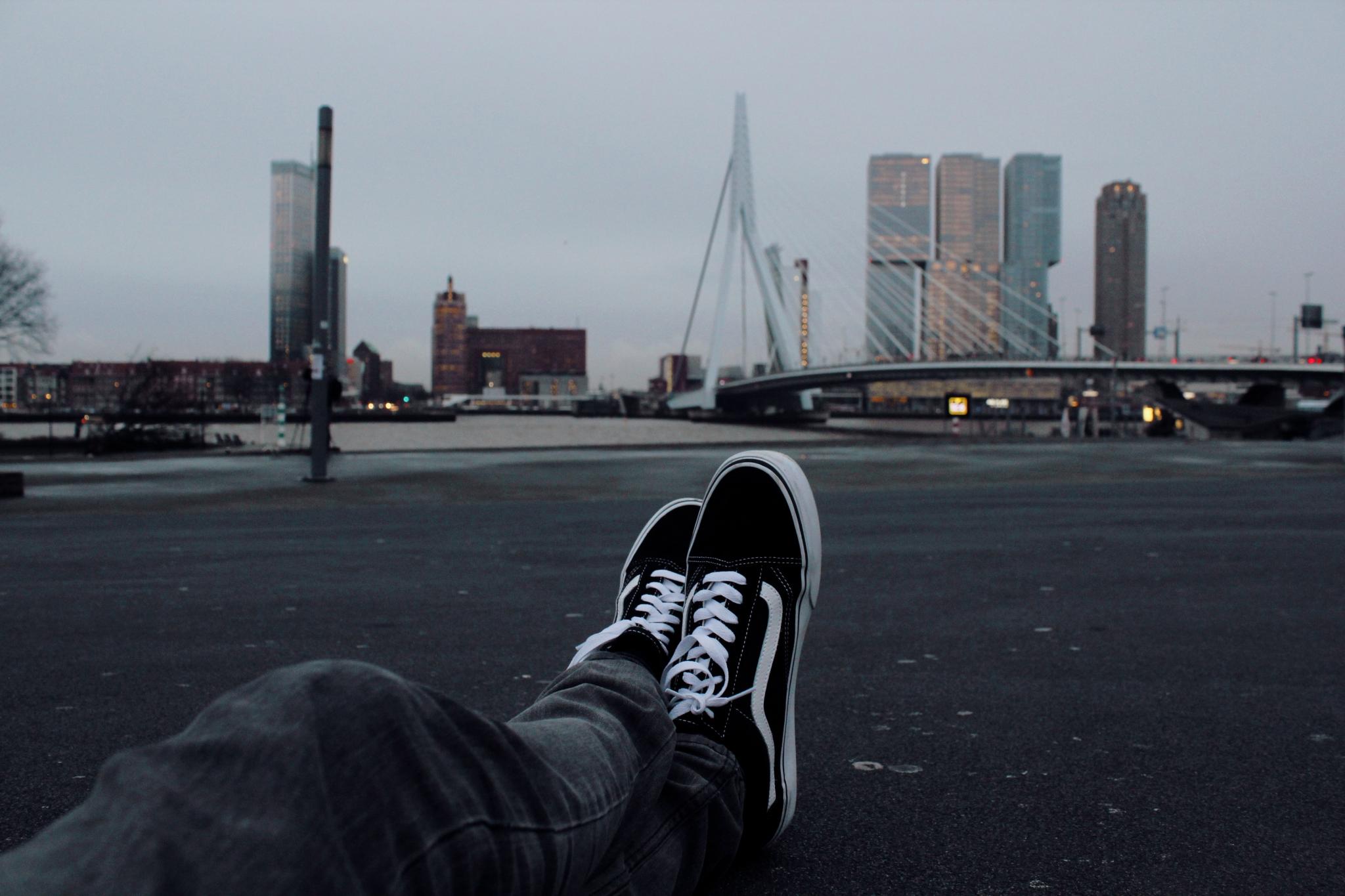
Port City Futures is an interdisciplinary group concerned with different aspects of the social and cultural dimensions of port cities and their technological and economic development. It brings together scholars from the humanities and a variety of technical and social sciences. However, what unites us is interest in culture, e.g. by questioning whether we can identify ‘maritime mindsets’ in port cities. But what is culture?
Port Futures in Postnormal Time(s)
8 Jun 2020
Stephen J Ramos
“Any useful idea about the futures should appear to be ridiculous.”[1] In one of his three axioms, Futurist Jim Datour establishes criteria for how the process of future visioning must be ongoing and changing, with feedback loops that continually introduce new challenges that restart and revise the process. “The future cannot be predicted,” he continues, “because the future does not exist.”
Insights from the RETE/PortCItyFutures Webinar - Port-city scenarios during and after the Covid-19 - May 18th, 2020
2 Jun 2020
Hilde Sennema
To what extent is the current health crisis detrimental for port cities, and how are different port cities reacting to this crisis? Researchers and practitioners from around the world discussed this question in a webinar co-organized by RETE and PortCityFutures held on May 18th 2020. (Blogs on the individual contributions are forthcoming on the PortCityFutures website). One of the main questions here was how to navigate between the paradigm of ‘never waste a good crisis’ on the one hand, and ‘business as usual’ on the other.
Measuring health in port cities
25 May 2020
Sarah E. Hinman
Urban public health is extraordinarily relevant currently, but health in port cities holds a critical place in history, too. Monitoring potential epidemics in port cities in the 19th century was critical to long distance trade. In 1878 New Orleans a sailor “jumped quarantine,” introduced yellow fever to the city, and sparked an epidemic killing thousands. Public health debates in port cities continue as shipping brings together people, goods, and foreign microbes. Air pollution from ships and industries affect the neighboring areas. The port city of Rotterdam is an ideal place to explore the impacts of port activities on health and environmental justice. Interdisciplinary research by Bachelor students at Leiden University College provides examples of methodologies and outcomes connected to health and inequality in Rotterdam.
The Port City’s ‘Cine-scapes’
19 May 2020
Asma Mehan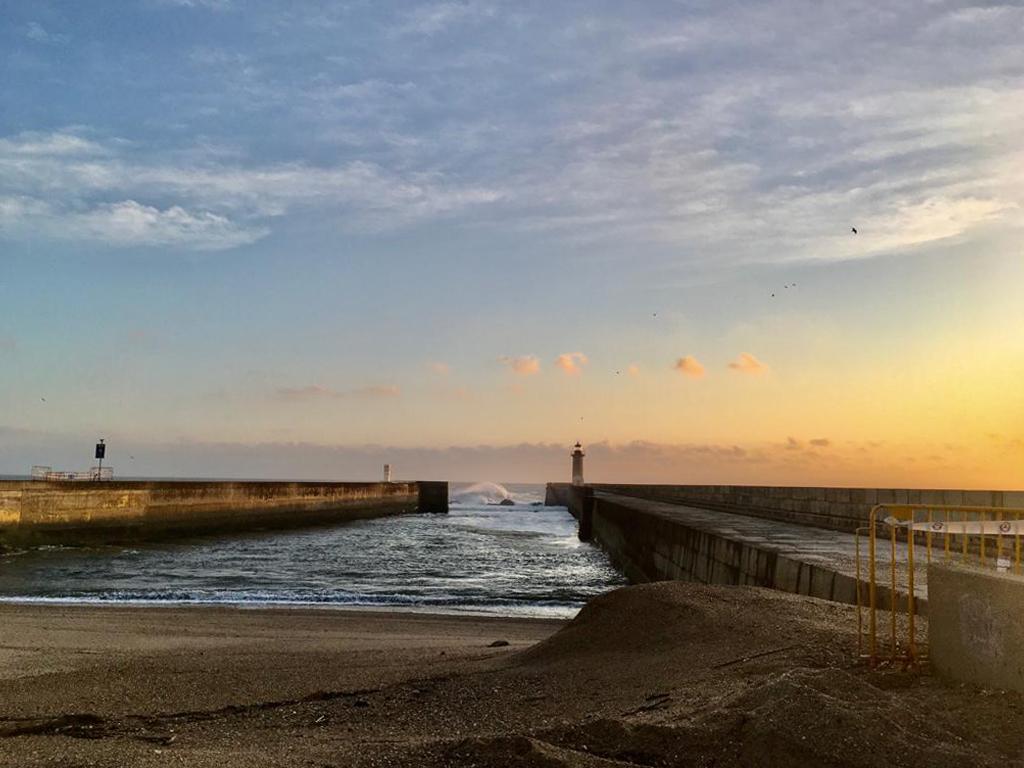
Cinema acts as a significant mediator between urban reality and the imaginary sensory experience of the fictive world. Viewing the city through the lens of a camera enables us to build new narratives. Films have captured port cities within the flows of, goods, people, and ideas, making them ever-present in shared memories, historical narratives and urban nostalgia. Cultural production plays a role in the on-going construction of local port cultures, whether films, festivals, music, literature, theater, advertisements, or events. Telling the story of the port city – its past, present, and future; its buildings and its people – contributes strongly to the creation of port city cultures.[i] The big screen can help viewers to perceive complex port city regions, learning from their history, understanding cultural values and developing shared urban narratives to tackle the upcoming challenges. In a broader sense, port city’s ‘Cine-scape’—to use a term coined by Richard Koeck,[ii] puts the cinematic approach to port cities into the spotlight.
Who owns the city after all? Can sea cruise tourism help develop Amsterdam as a ‘City in Balance’?
11 May 2020
Tianchen Dai
The city and region of Amsterdam, together with the historical and cultural sights of the city, offers excellent facilities for ocean cruises, which contributes greatly in economic growth and employment. Meanwhile, a significant value conflict (Mager, 2020) exists among stakeholders. To deal with ‘over-tourism’ and maintain a ‘City in Balance’ (City of Amsterdam, 2016; Municipality of Amsterdam, 2019), since late 2010s the city has endeavored to take measures to reduce the number of budget travelers, and attract more higher-paying tourists (Aalbers & Sabat, 2012; Kavaratzis & Ashworth, 2007).
The future of port cities: thriving within the planetary boundaries
4 May 2020
Olga Koretskaya
The debates over the future of ports and port city areas have been largely dominated by the narrative of blue growth (e.g. OECD, 2019; World Bank, 2019). Promoted by large corporations and authoritative international organizations, this narrative promises to reconcile the imperative of economic growth and profit-seeking with the well-being of communities and the environment. This approach has led to technical solutions (such as robotics, more efficient wastewater treatment) and incremental fixes to become the key focus in sustainability transitions (Soma et al., 2018).
New Neapolis: A Creative Teaming Up of Port Cities
27 Apr 2020
Vincent Baptist
In January 2020, Rotterdam-based artist Gyz La Rivière released a new film project, entitled New Neapolis, in which he connects his Dutch hometown to three other European port cities: Liverpool, Marseille and Naples. Grouped together, they form ‘New Neapolis’, building on the ancient name of Naples that meant ‘new city’. Following an earlier book publication of the same name, and accompanied by an exhibition, La Rivière conceived New Neapolis as a metropolitan league that turns the national underdog position of all its members into an advantage. Compared to the stately capitals London, Paris and Rome, New Neapolis builds on the international network of the port cities and their inhabitants’ traditional ‘can do’-mentality to strive for a shared, utopian future.
Maritime Mindsets of Rotterdam’s Port Communities
23 Apr 2020
Sarah Sannen
 Rotterdam is a major port city of The Netherlands, with a colourful history of trade, war and immigration. As the port of Rotterdam, the biggest port in Europe, has largely moved out of the city, the City of Rotterdam aims to compensate for this with festivals, museums and other events to engage and strengthen the maritime mindset. This institutionalised and heavily funded approach is centred on securing Rotterdam’s reputation as a globally leading port city. There is more than a top-down intervention to construct a maritime mindset. Smaller communities near the port itself have their own. They are further from the main hub of activity and political centre, have less centralised funding and are not a priority in the City’s strategy. But that wouldn’t tell the whole story.
Rotterdam is a major port city of The Netherlands, with a colourful history of trade, war and immigration. As the port of Rotterdam, the biggest port in Europe, has largely moved out of the city, the City of Rotterdam aims to compensate for this with festivals, museums and other events to engage and strengthen the maritime mindset. This institutionalised and heavily funded approach is centred on securing Rotterdam’s reputation as a globally leading port city. There is more than a top-down intervention to construct a maritime mindset. Smaller communities near the port itself have their own. They are further from the main hub of activity and political centre, have less centralised funding and are not a priority in the City’s strategy. But that wouldn’t tell the whole story.
The European Green Deal: New Opportunities for Port Cities?
20 Apr 2020
Stephan Hauser
With the European Green Deal made public last December, the new European Commission took the first steps to transforming Europe into the first climate neutral continent by 2050. The Green Deal offers a wide range of climate policies and measures that directly affect European cities and citizens. Whereas port cities are high polluters and important economic concentrations, they are not mentioned in the European Green Deal as such. However, to make the ‘’effective and fair transition’’ that the Commission aims for, port cities could make a difference as they concentrate key economic and industrial facilities and are key to the EU’s long-term economic competitiveness.
Making the next port city of Rotterdam
16 Apr 2020
Amanda Brandellero & Maurice Jansen
The COVID-19 outbreak constitutes an unanticipated resilience test for our cities and societies. Resilience encapsulates the capacity of systems and societies to get back on their feet and to adapt to a new set of conditions, following major challenges or disasters. For port cities like Rotterdam, the current global shock triggered by the Corona crisis presents a number of challenges to ongoing transitions and global supply chains. To what extent can local-to-local supply and demand chains offer solutions to these challenges?
New recommendations from the Port City Futures Team and Port City Music on Spotify
9 Apr 2020
Yvonne van Mil
Port cities speak to the imagination of people around the world as special places where land meets the sea, where goods and people arrive or depart, and where cultures mix. Many artists including painters, directors, authors, poets, singers and songwriters are inspired by ports and port cities feeling attracted to the atmosphere, culture or ambiance of the port. As a follow-up to the blog by Hilde Sennema (posted on April the 1th, 2020) about different forms of port city culture, the Port City Futures Team made a list of music recommendations and favorite songs concerning ports and port cities. These include songs that glorify port cities such as Antwerp, Rotterdam and Hamburg, or ones in which the port serves as a symbol of freedom, romance, nostalgia, or desire, or yet others that include criticism of the working conditions of dockers, sailors or prostitutes.
Change of perspective: value-based deliberations for improved port-city relations
3 Apr 2020
Tino Mager In the course of the 20th century, some port cities, especially larger ones, have experienced an increasing separation of their port and city areas. Not only are they spatially separating from each other; they also follow different agendas in economic, ecological and cultural terms. At times, communication between port and city can be severely impaired due to diverging interests, for example, when port and city leaders respectively pursue diverging agendas in terms of energy generation, for example from fossil or renewable sources. Port cities around the world face these dualities, some captured in the visualization of PortCityFutures. For the benefit of the larger port city region, they need to find answers that benefit both actors. A first step towards a shared perspective is through the development of shared values. As members of the PortCityFutures group, we argue that port and city actors can better negotiate, and find solutions for their differing interests, when they focus on underlying values.
In the course of the 20th century, some port cities, especially larger ones, have experienced an increasing separation of their port and city areas. Not only are they spatially separating from each other; they also follow different agendas in economic, ecological and cultural terms. At times, communication between port and city can be severely impaired due to diverging interests, for example, when port and city leaders respectively pursue diverging agendas in terms of energy generation, for example from fossil or renewable sources. Port cities around the world face these dualities, some captured in the visualization of PortCityFutures. For the benefit of the larger port city region, they need to find answers that benefit both actors. A first step towards a shared perspective is through the development of shared values. As members of the PortCityFutures group, we argue that port and city actors can better negotiate, and find solutions for their differing interests, when they focus on underlying values.
Experience Port City Cultures from your couch
1 Apr 2020
Hilde Sennema
During this crisis, you might already have received many suggestions on how to spend your time at home. The Port City Futures Team thought to make a small contribution as well by recommending our favorite cultural expressions concerning port cities. Being transported to those special places where the land meets the sea might be a welcome, yet educational, distraction. So stay safe, stay inside, and we hope you will enjoy our suggestions during this difficult time. We are also curious about yours: share them with us at info@portcityfutures.nl.
Are Cities, Ports, and Port Cities Systems? From Optimizing to Co-Creating Resilience
26 Mar 2020
Andrew Littlejohn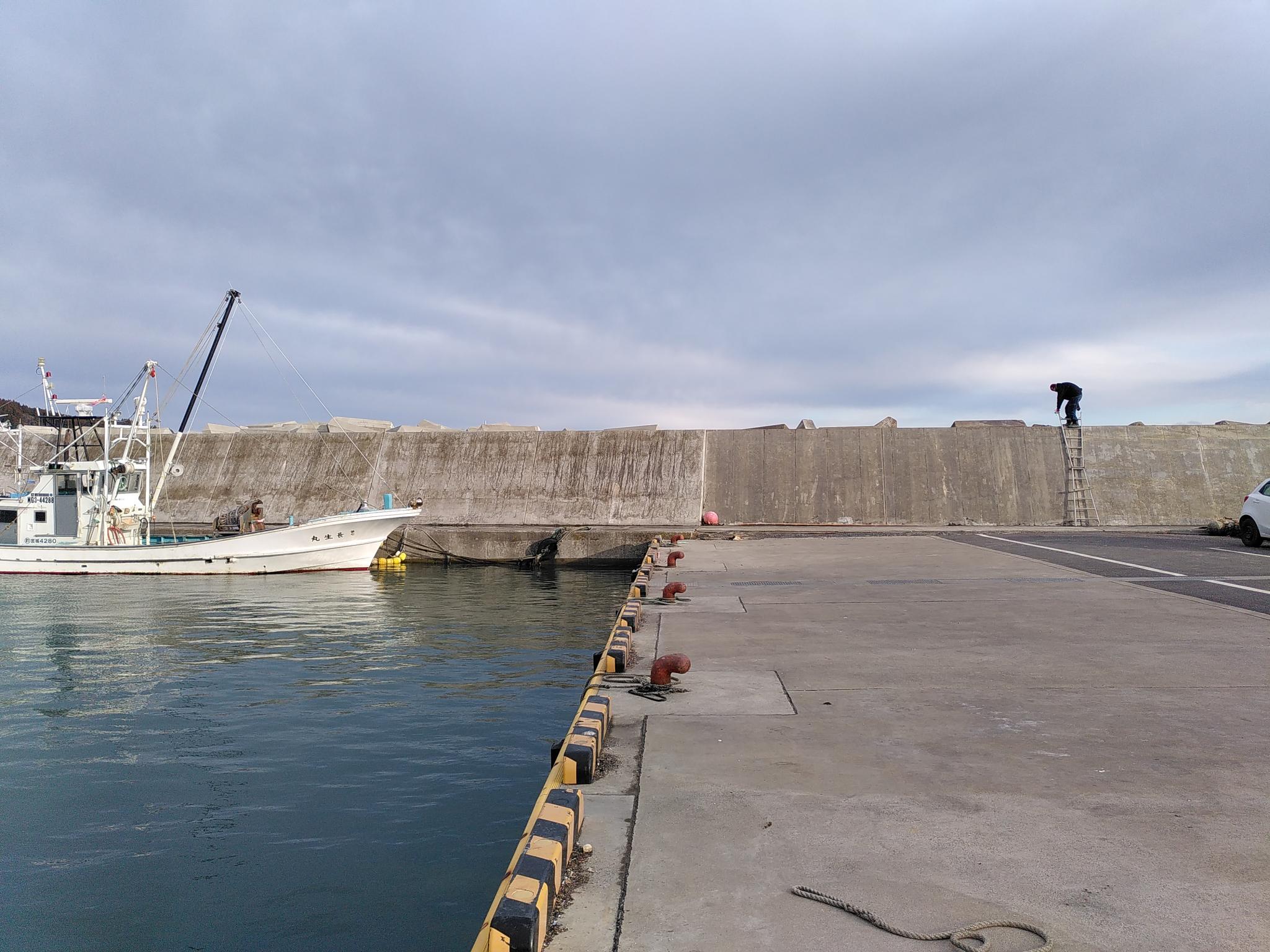
In the context of rising sea levels, “resilience” is a growing priority for many ports and cities. Resilience typically refers, as Olsson et al write, to a system’s ability to cope with stress. How much stress the infrastructures, institutions, and inhabitants of cities and ports—and port cities—can absorb is certainly an important question. However, there are limits to how far those governing and managing them can, or should, think of them as "systems". Perhaps the most important issue is whether or not what we call “society” actually functions like a system—or, put differently, the kind of “system” imagined by engineers, industrial ecologists, and others drawing on resilience theory to design spatial, institutional, and social measures. Social scientists, including anthropologists, have long criticized such thinking’s implicit functionalism: the assumption that we can break society into parts, with distinct functions, that when properly aligned can reach equilibrium. These theories lend themselves easily to managerial approaches: all one needs to do is optimize the system. However, they neglect how our societies often do not, in fact, fit neatly together.
Port City Resilience: (Re-)Connecting Spaces, Institutions and Culture
17 Mar 2020
Carola Hein

Ports and cities and their surrounding regions coexist in a limited, shared space; today, they face multiple challenges, including climate change, energy transitions, digitization, or social transformations. These challenges require coordinated responses from all stakeholders: port authorities, city and regional governments, private and public actors, as well as NGOs and citizens. Historically, such collaborations are a trade mark of port cities around the world, their public and private stakeholders displaying great capacity for overcoming challenges meaningfully, forcefully and rapidly. Together, such stakeholders have dealt with a broad range of external and internal shocks to the advantage of both their ports and the neighboring cities.













